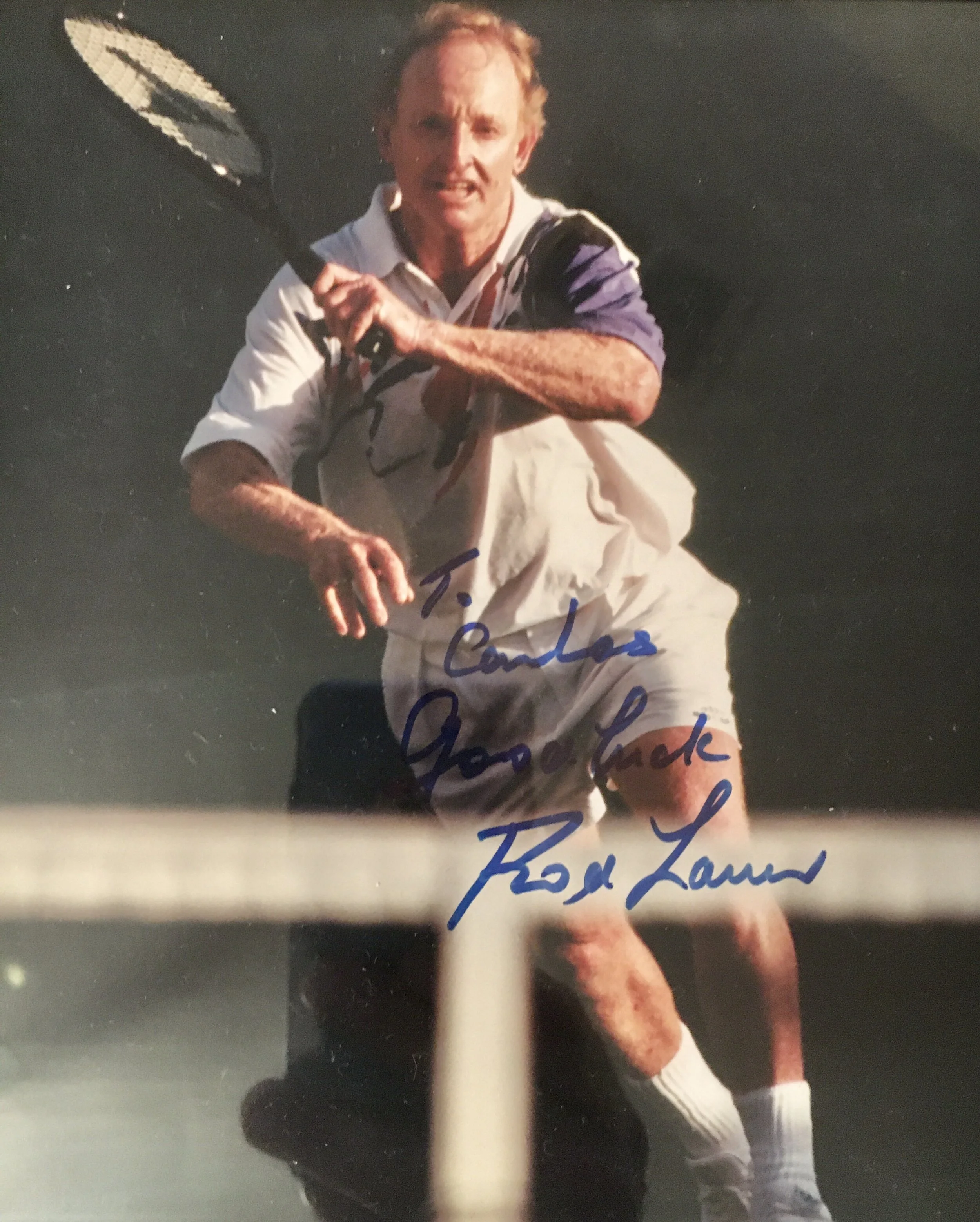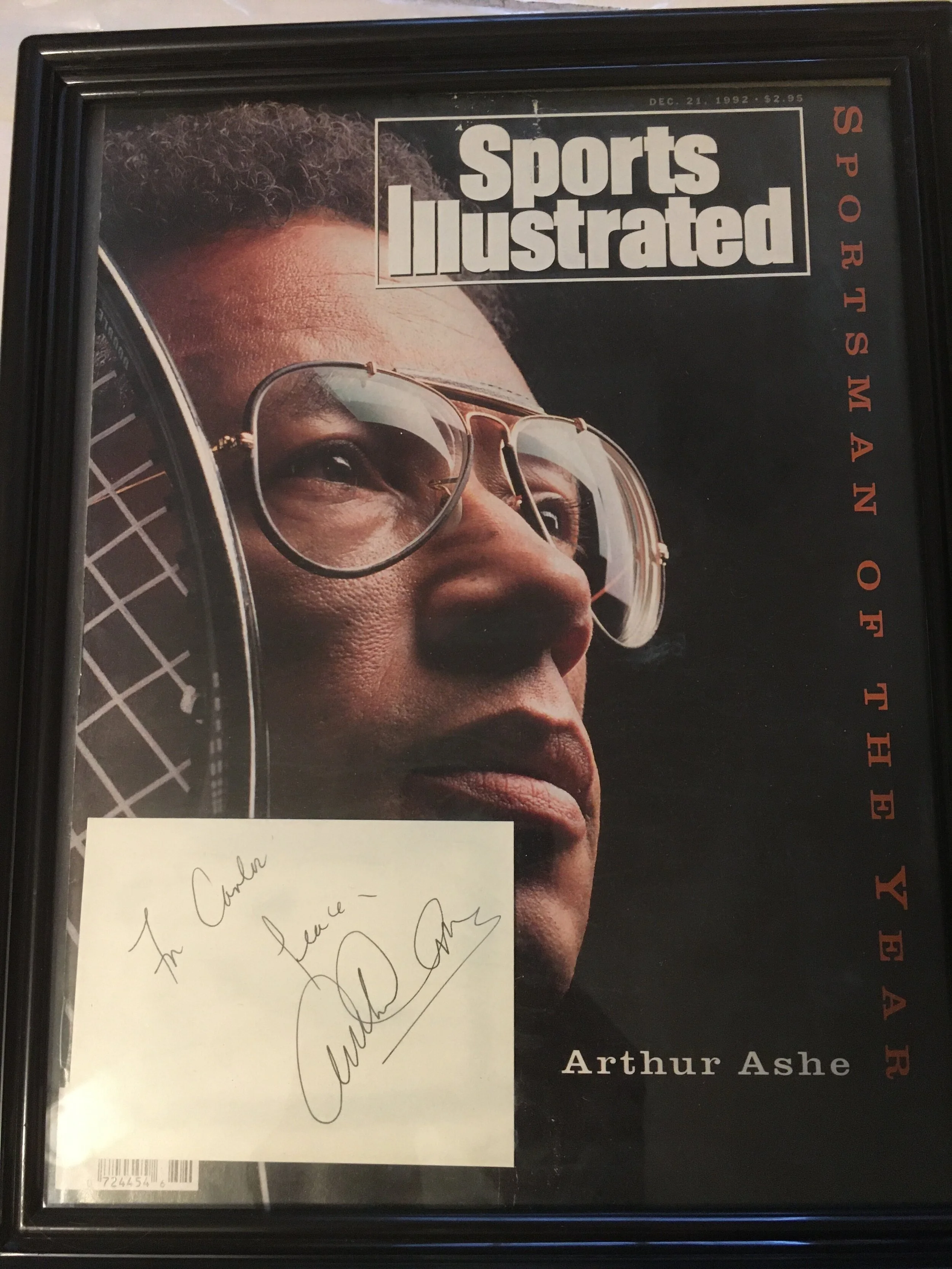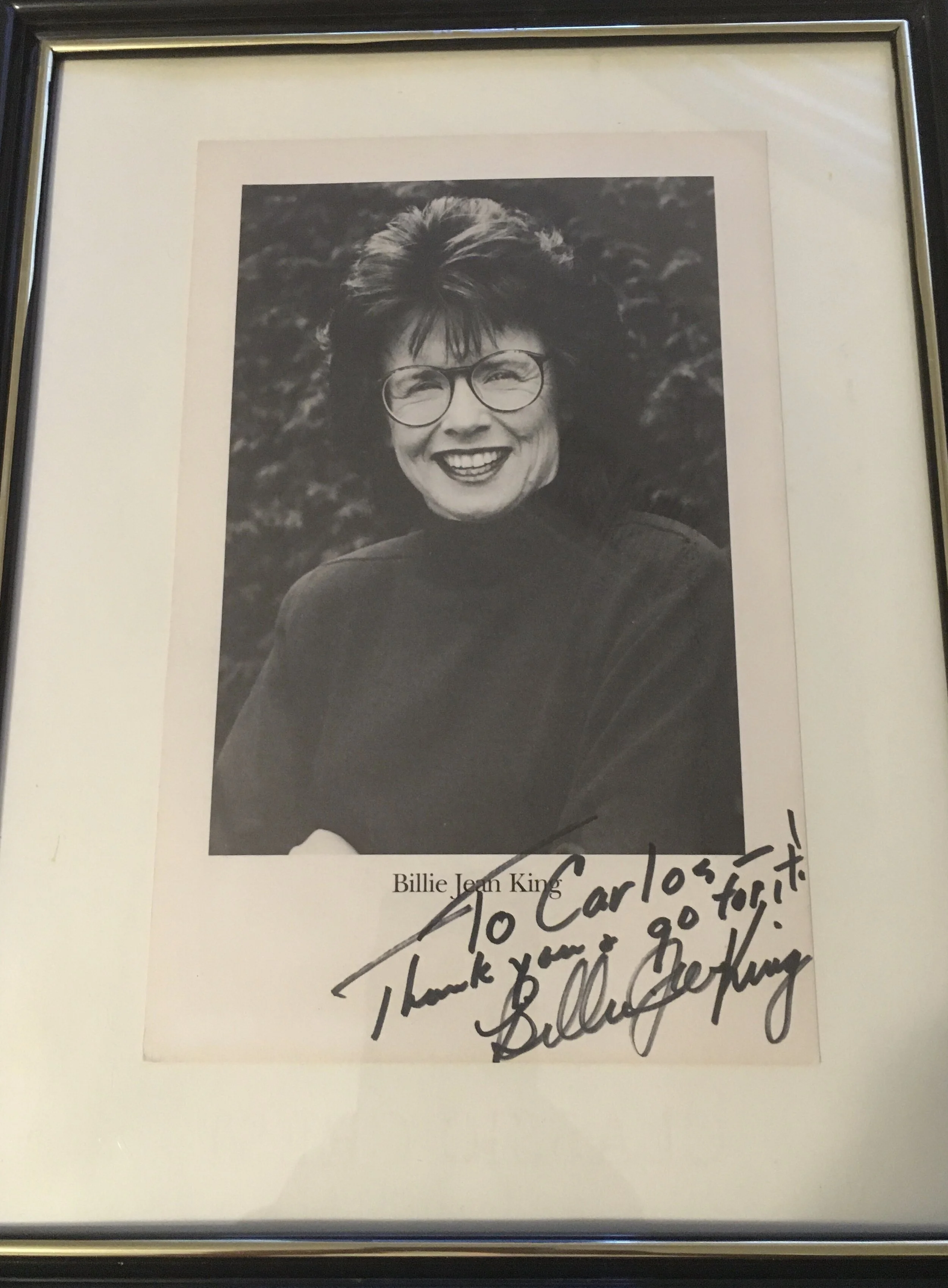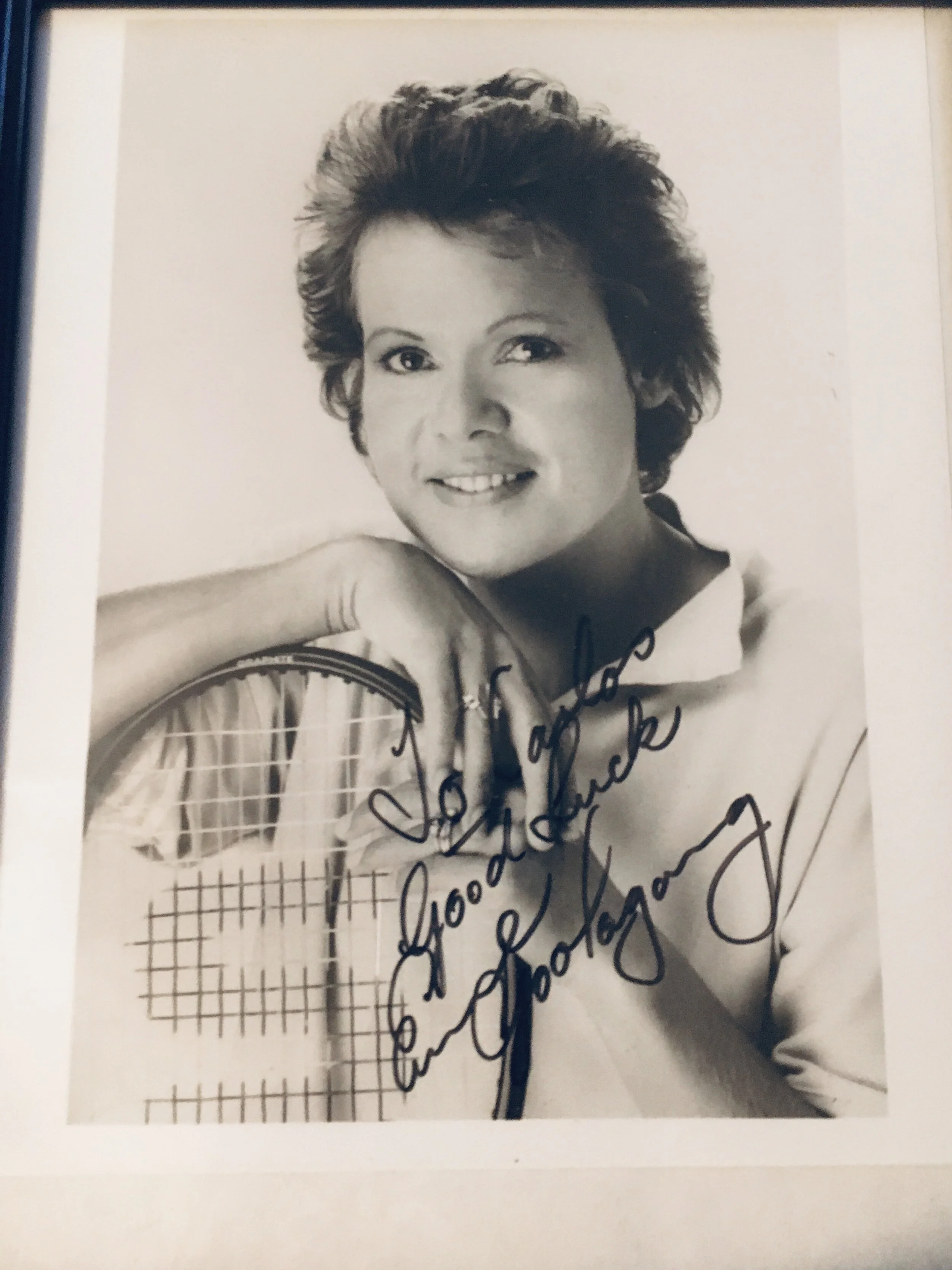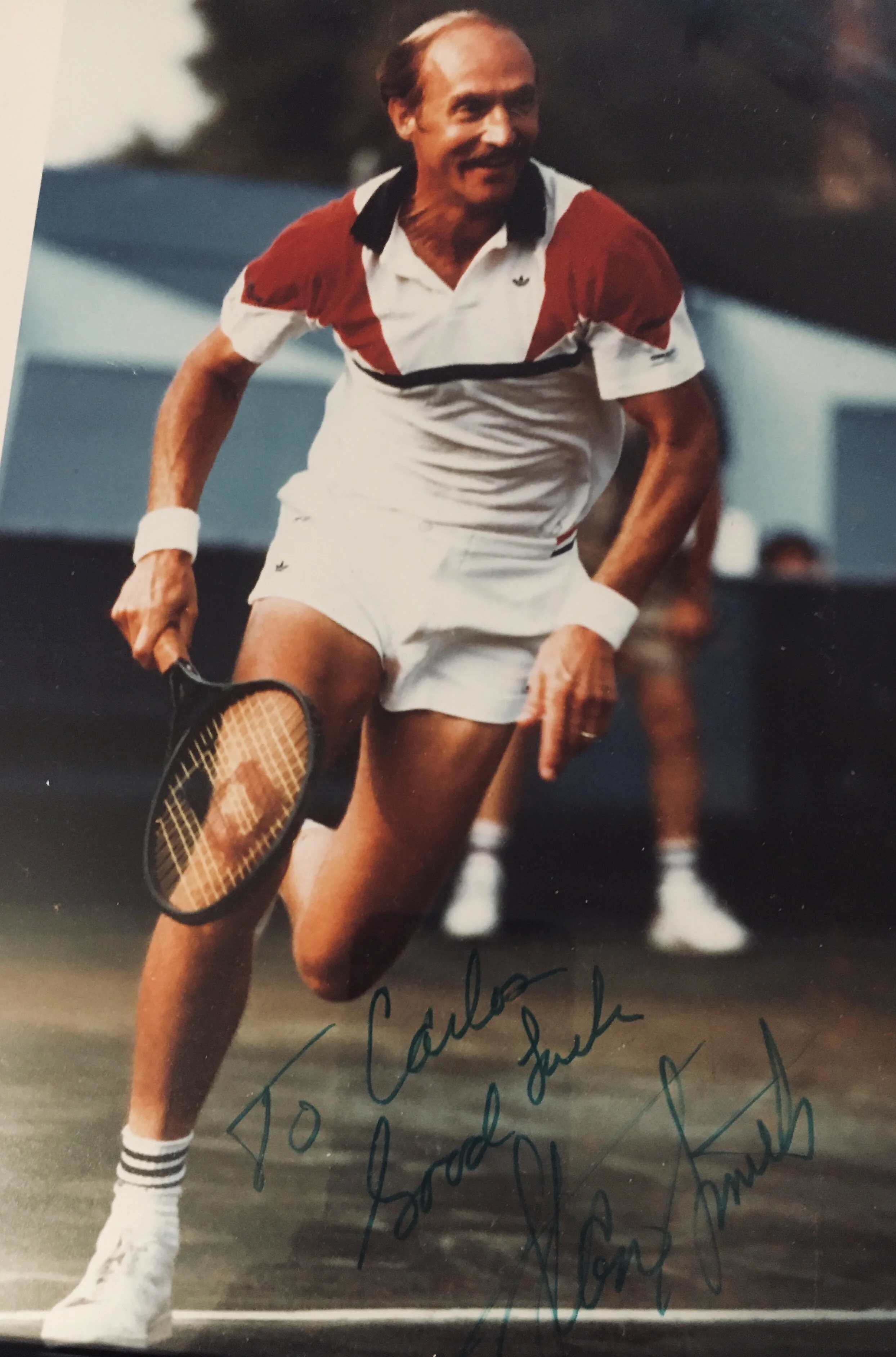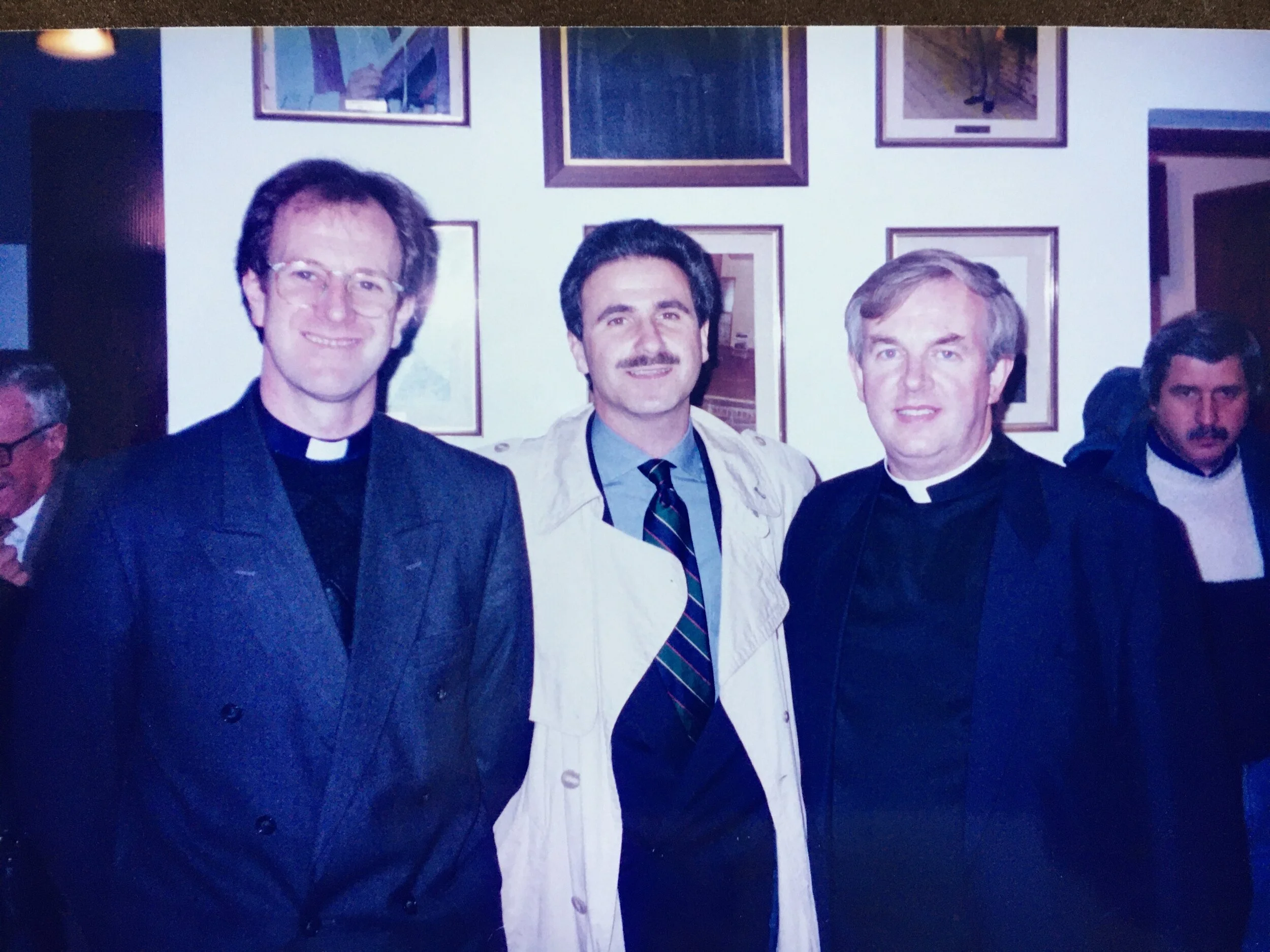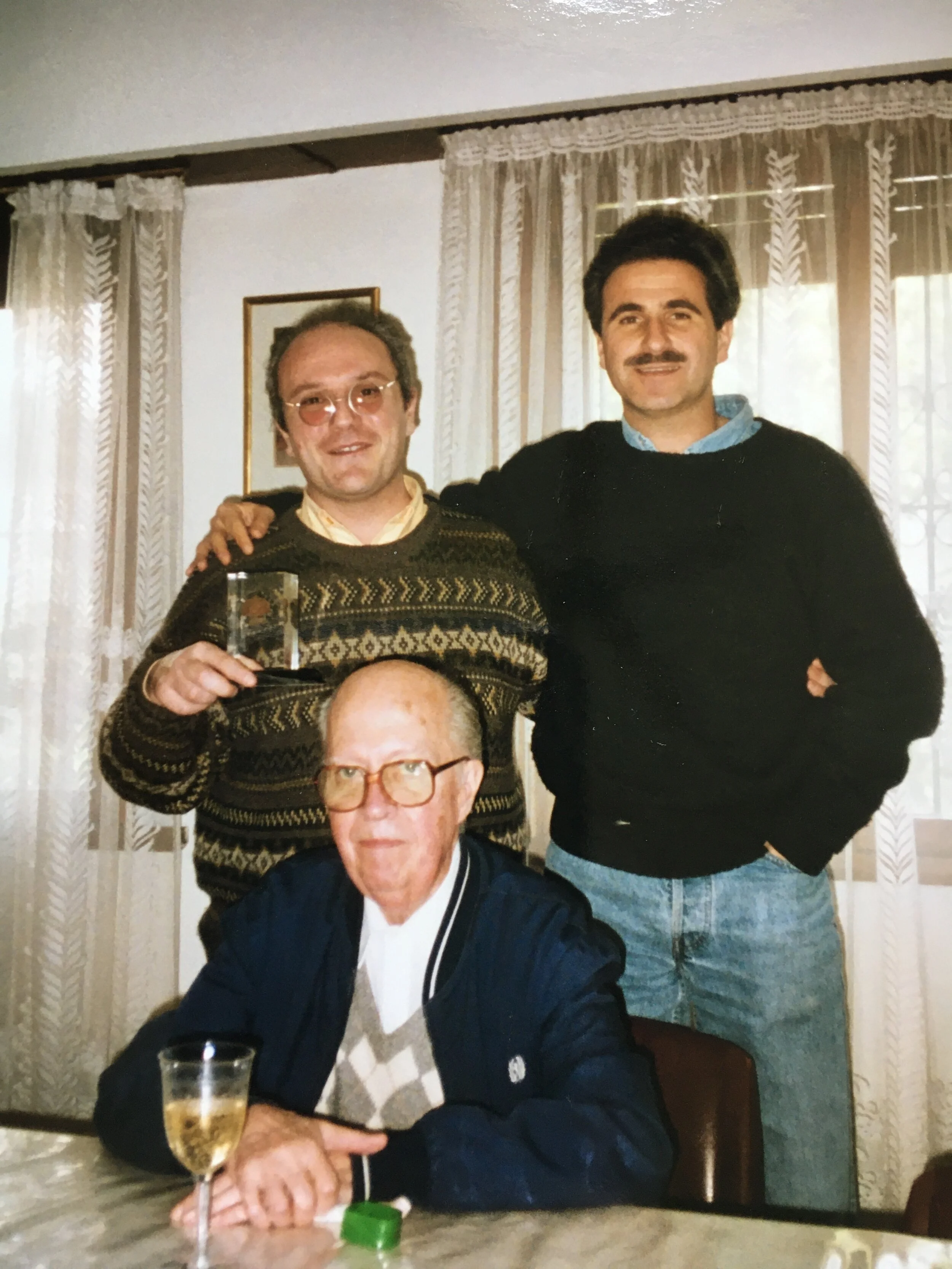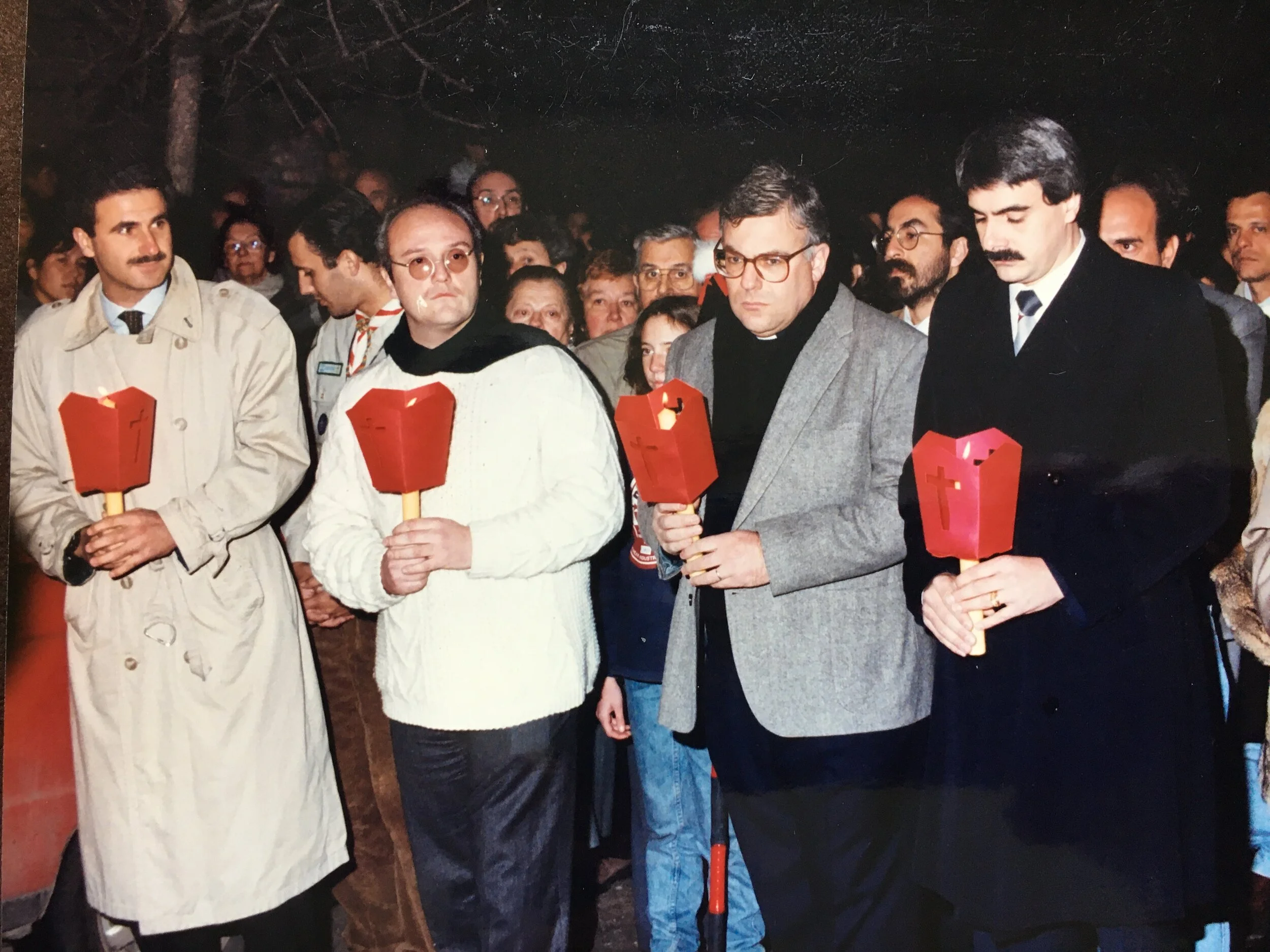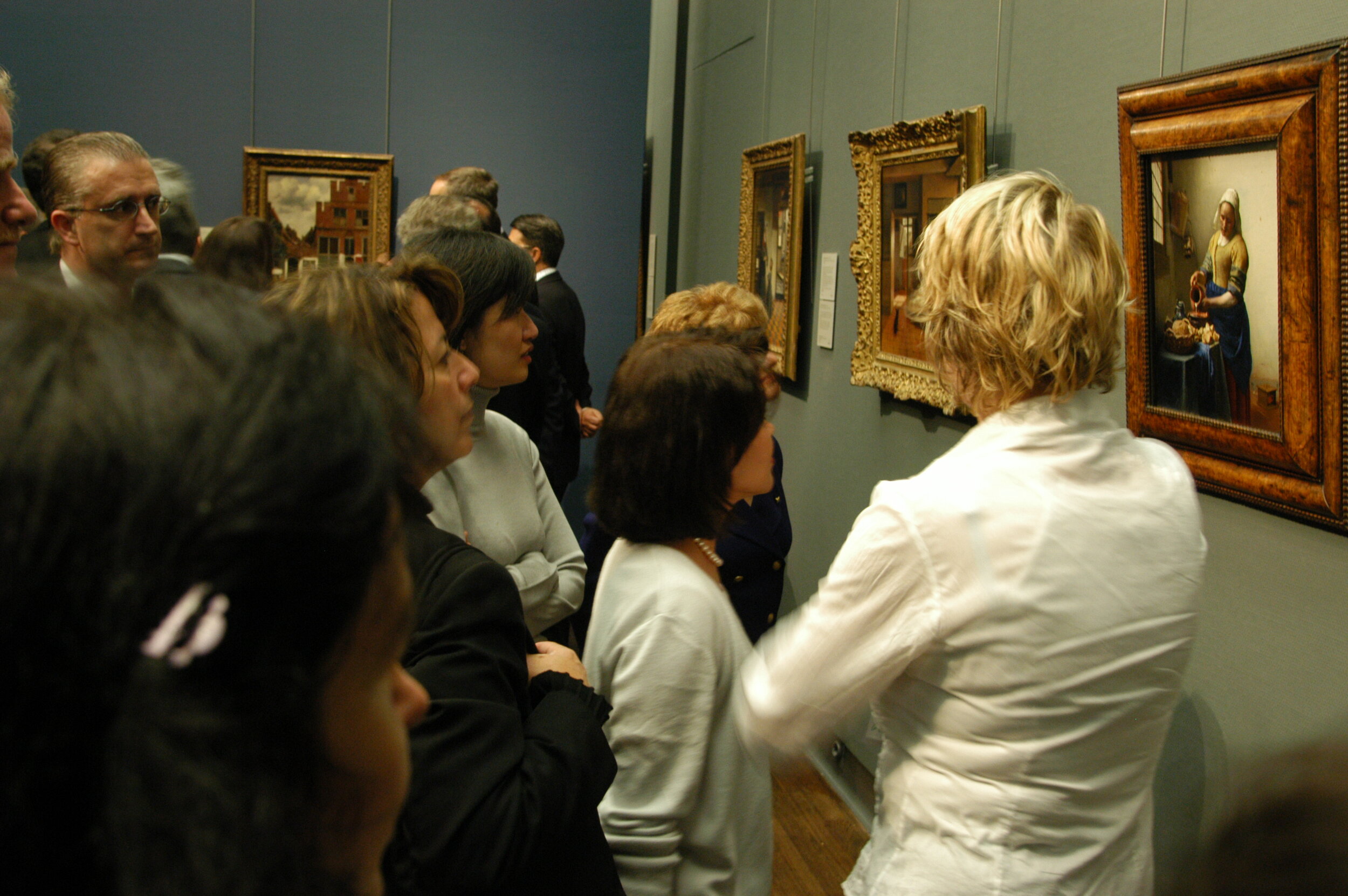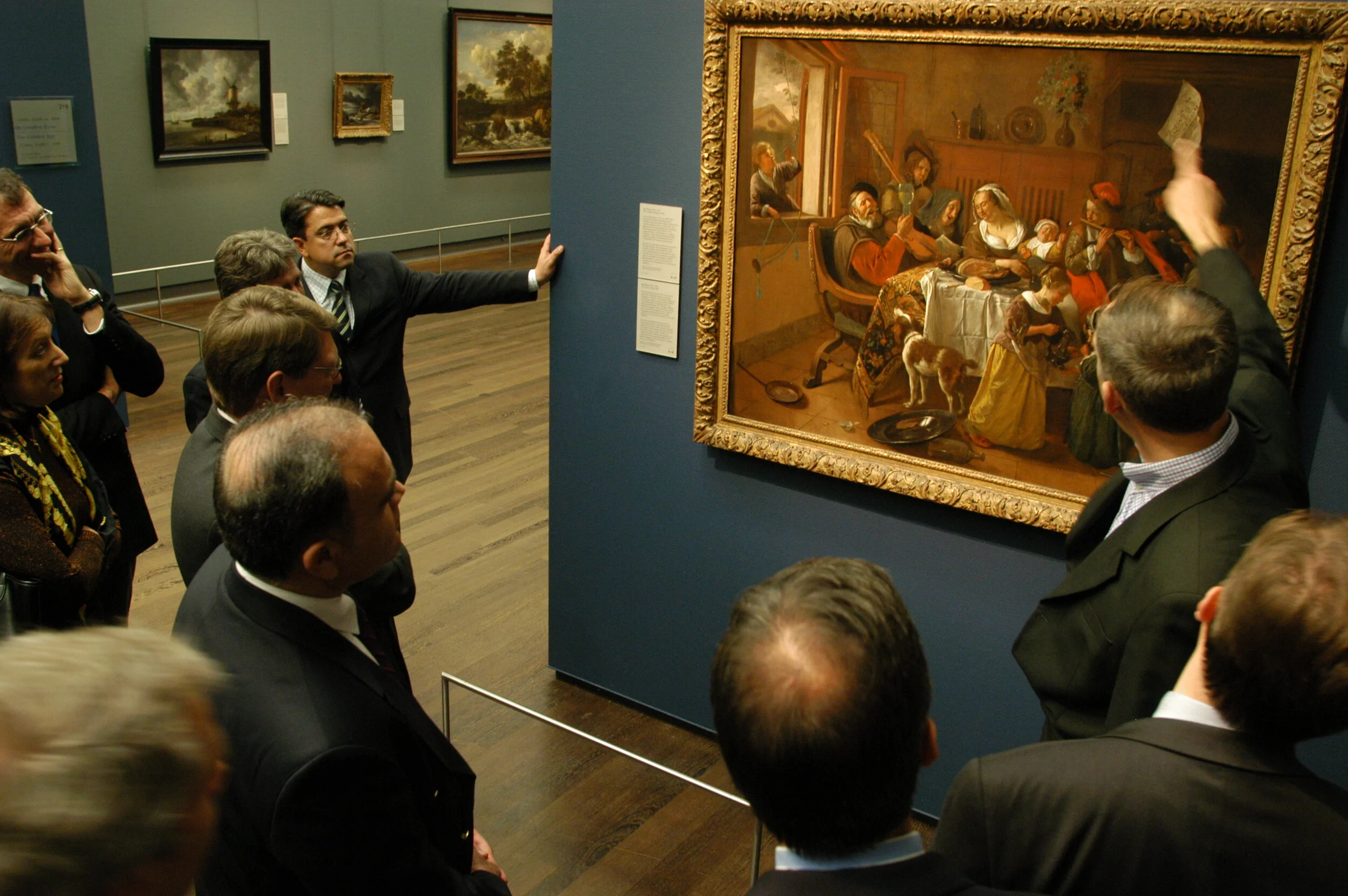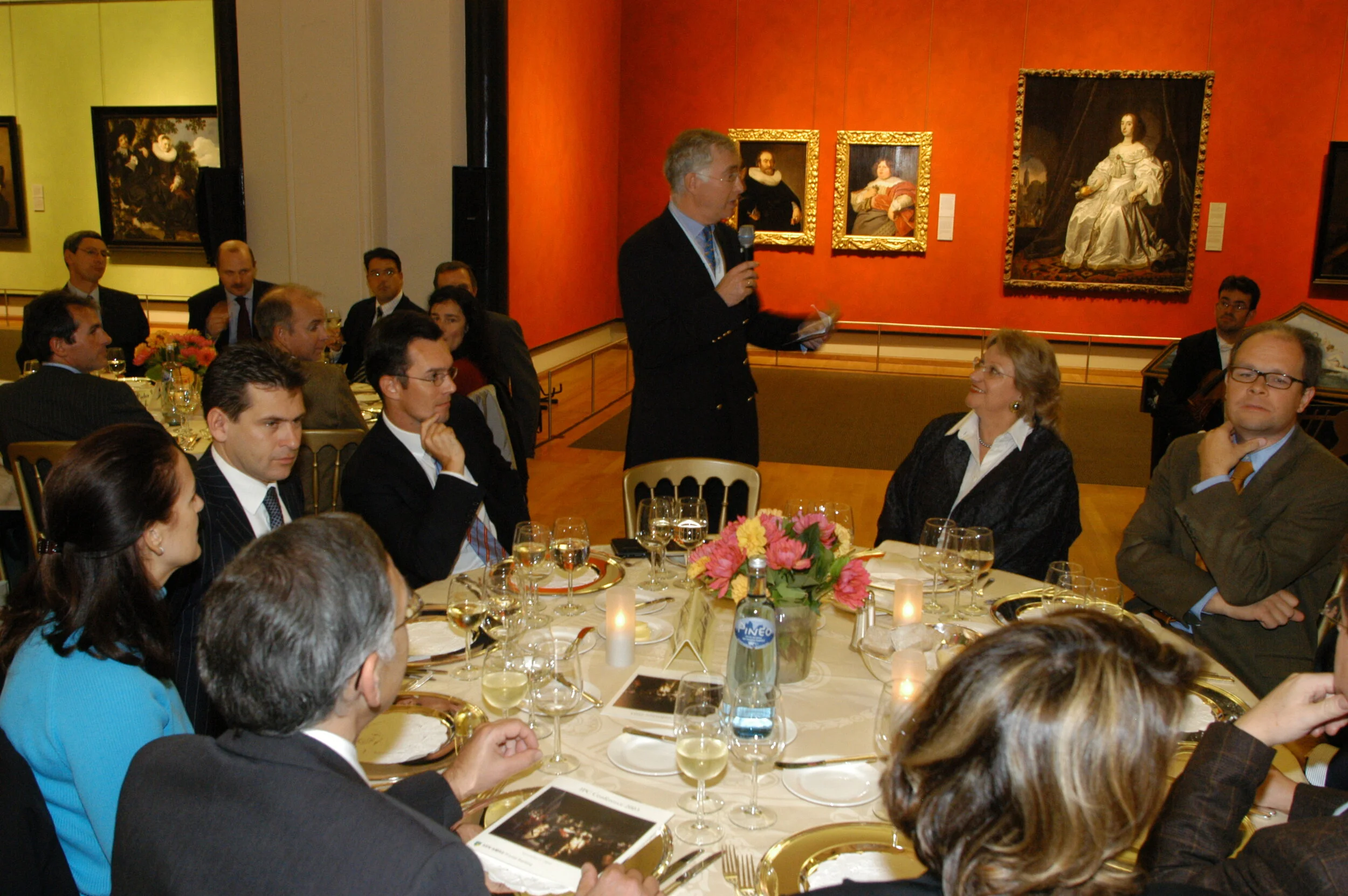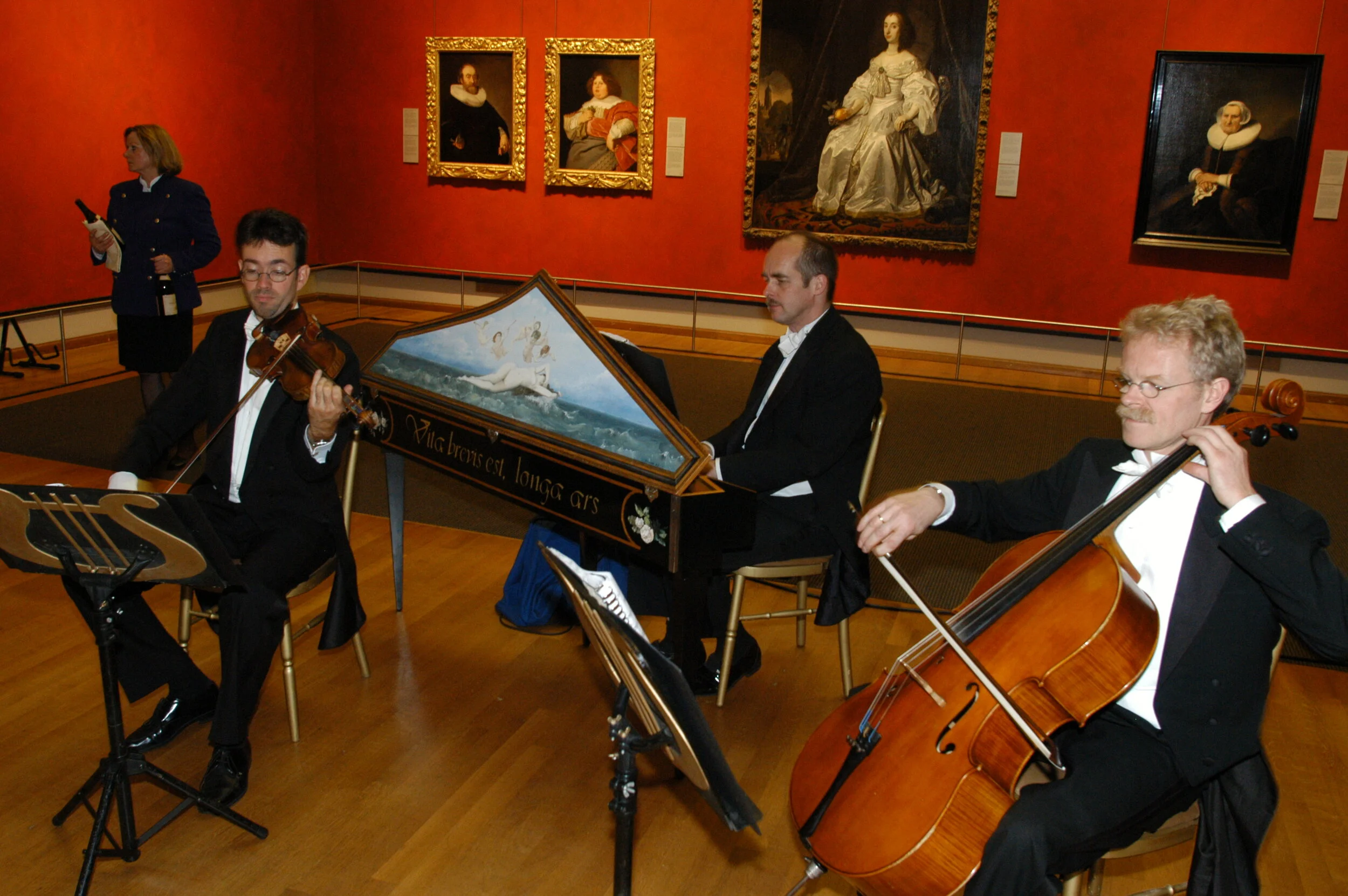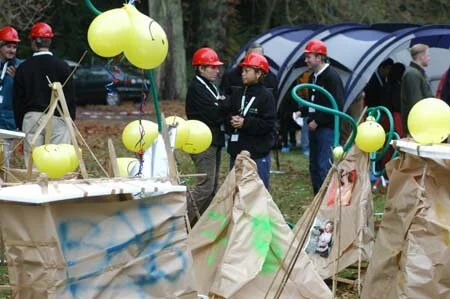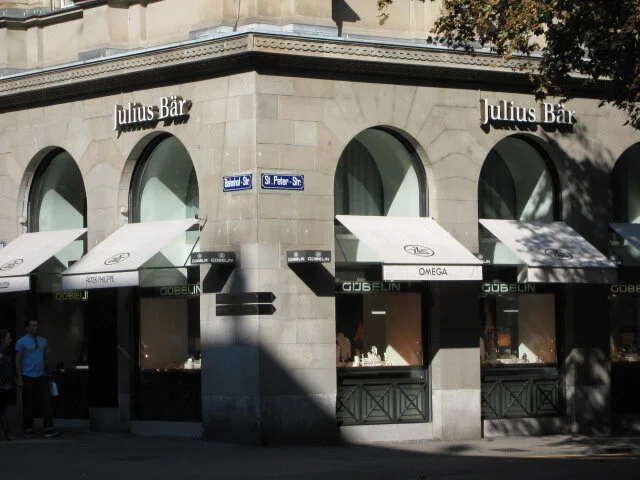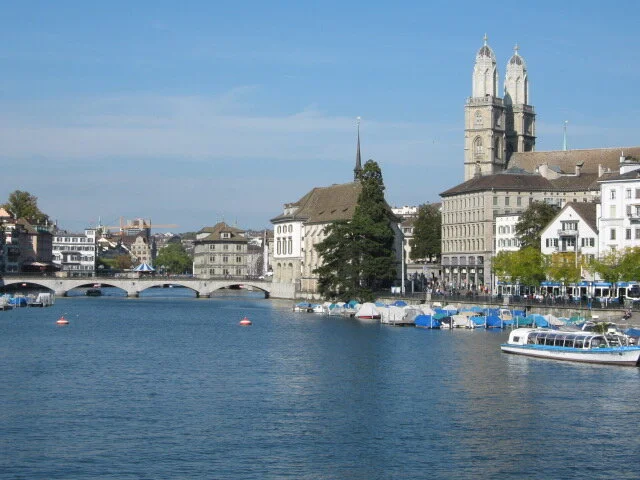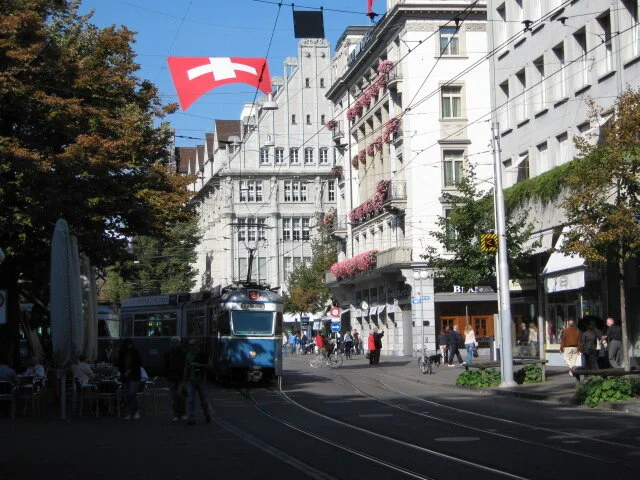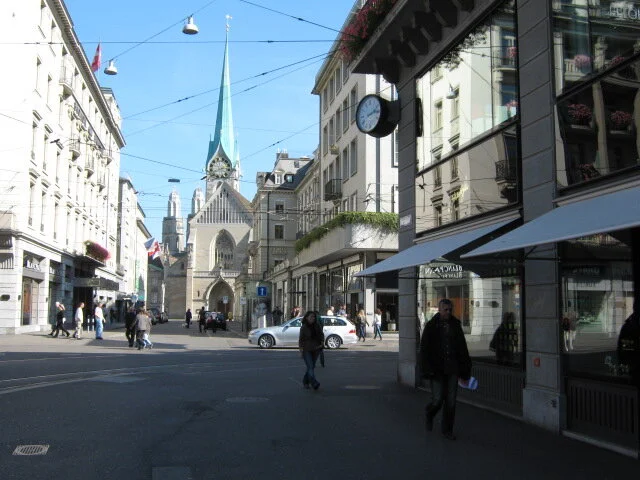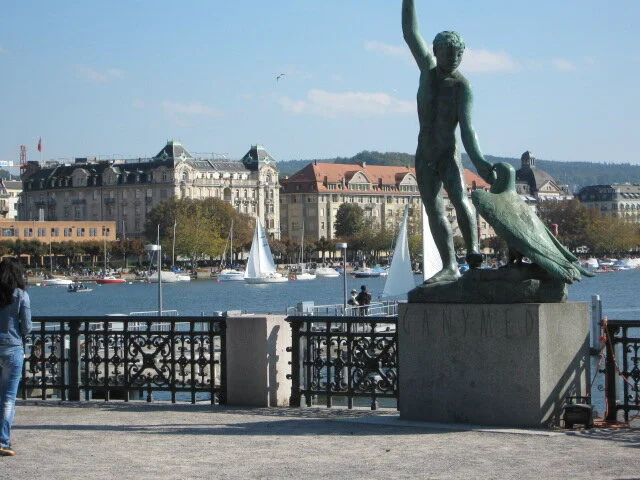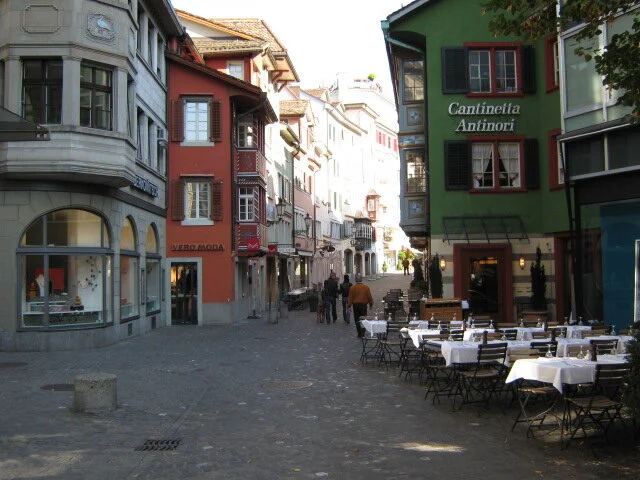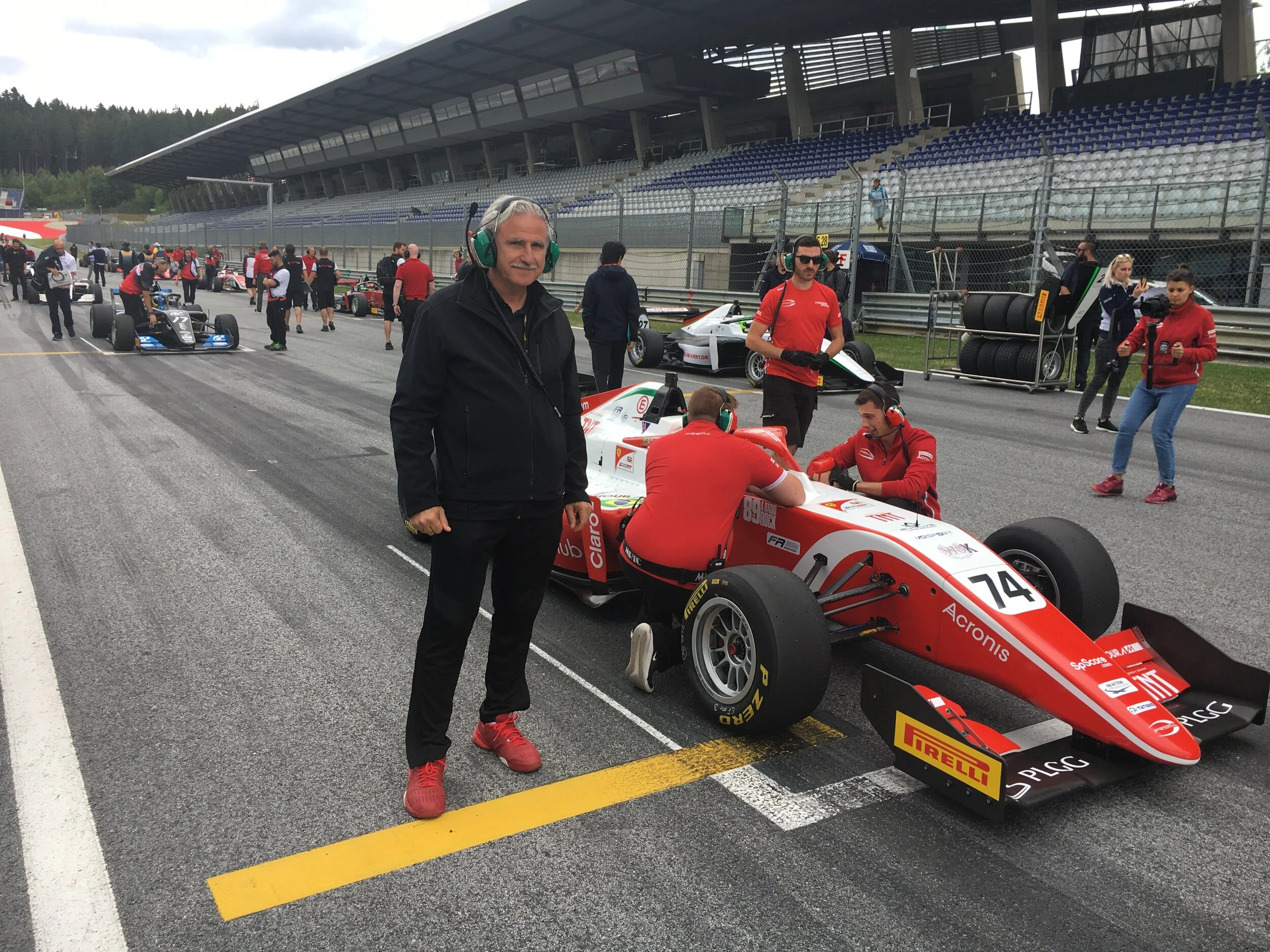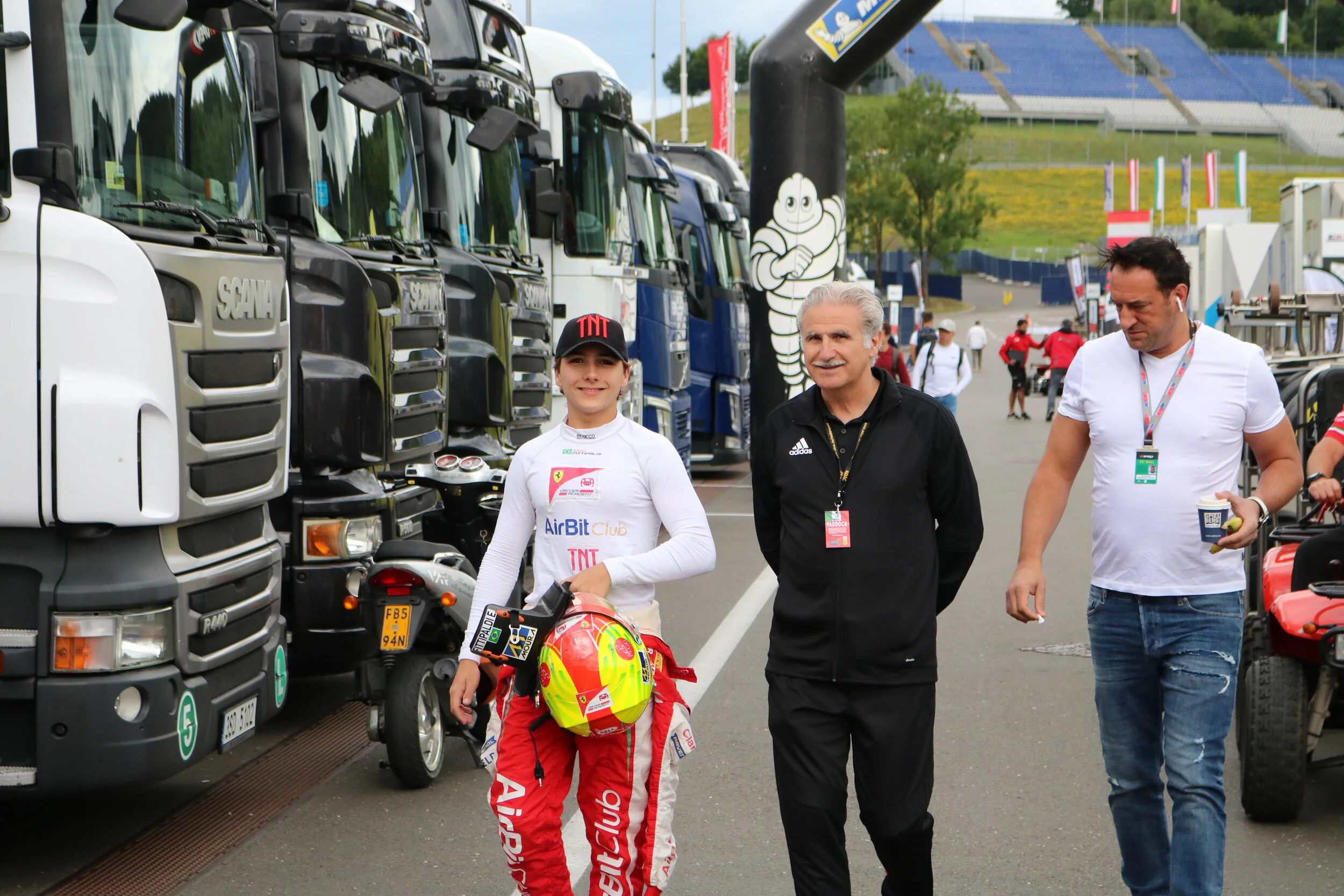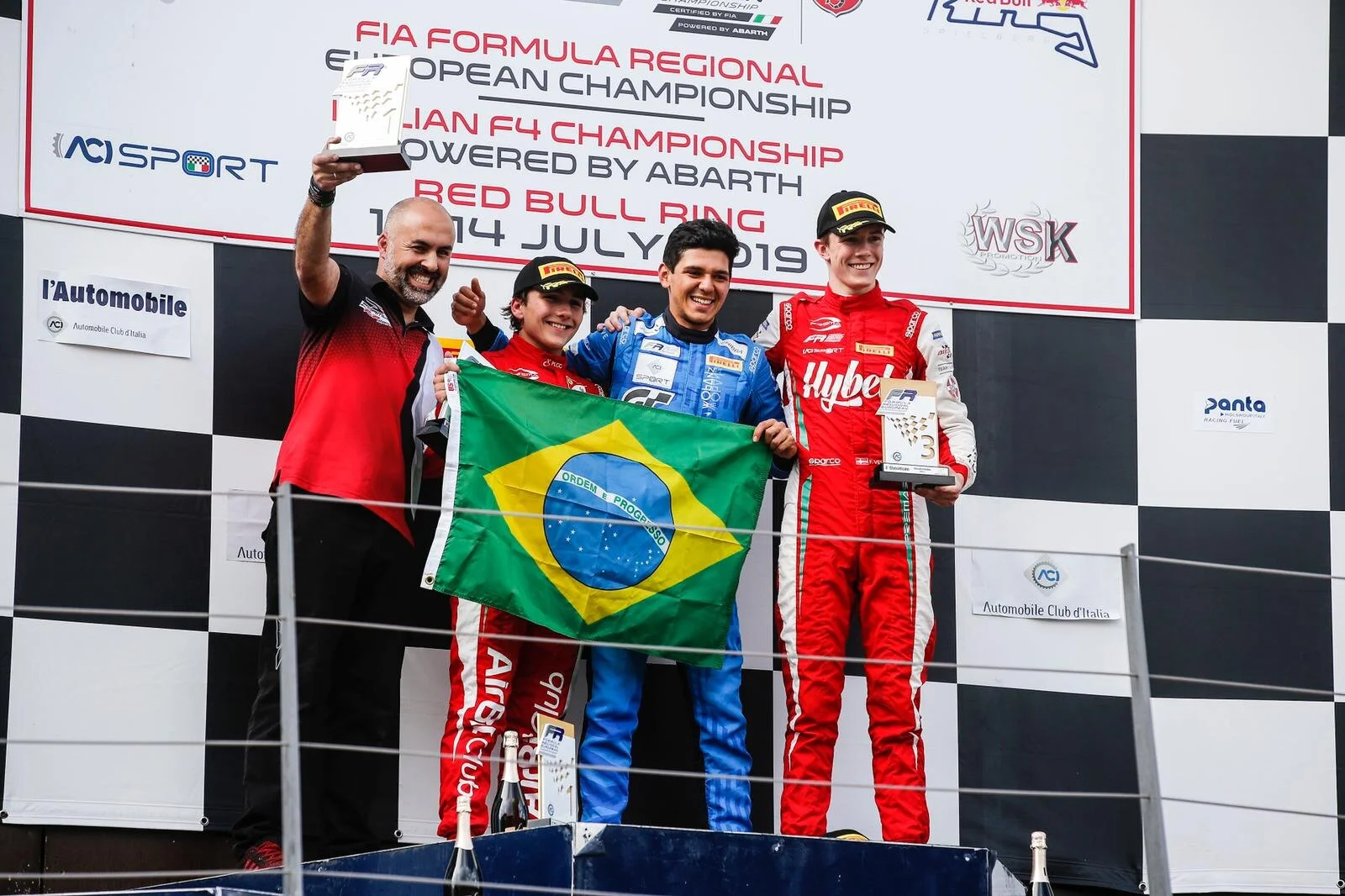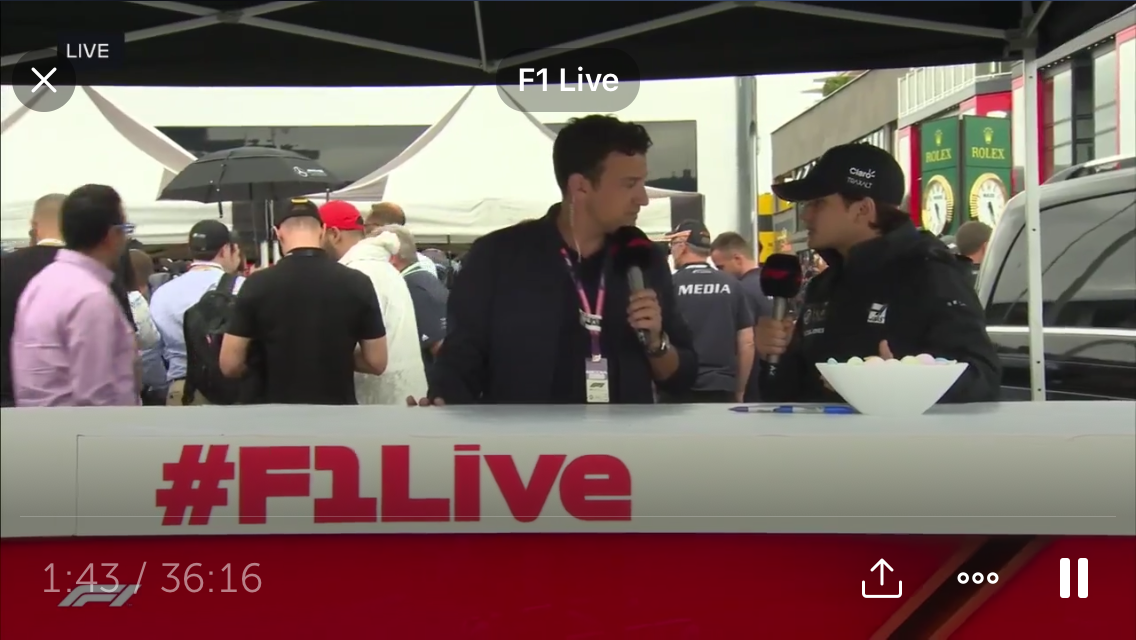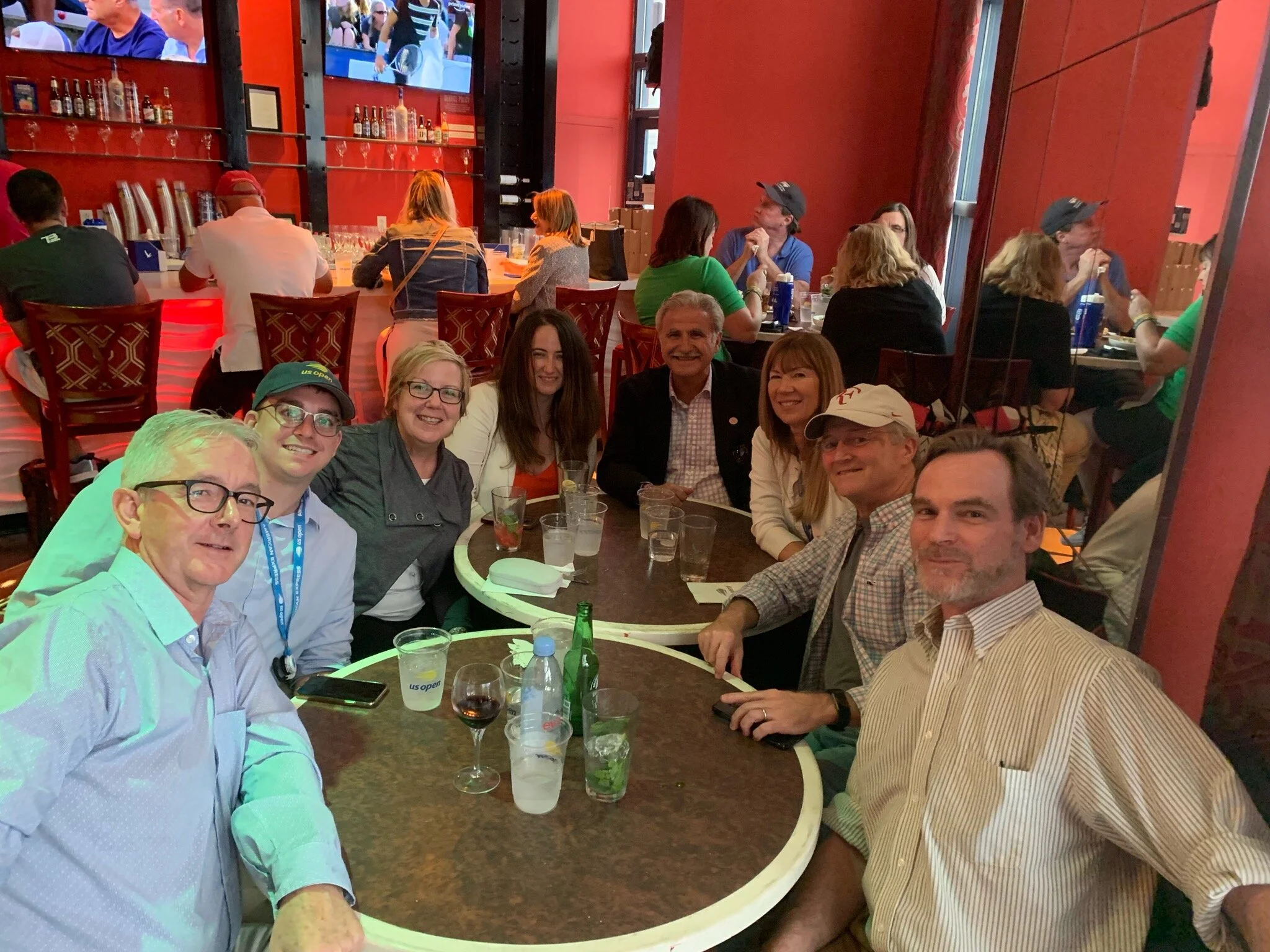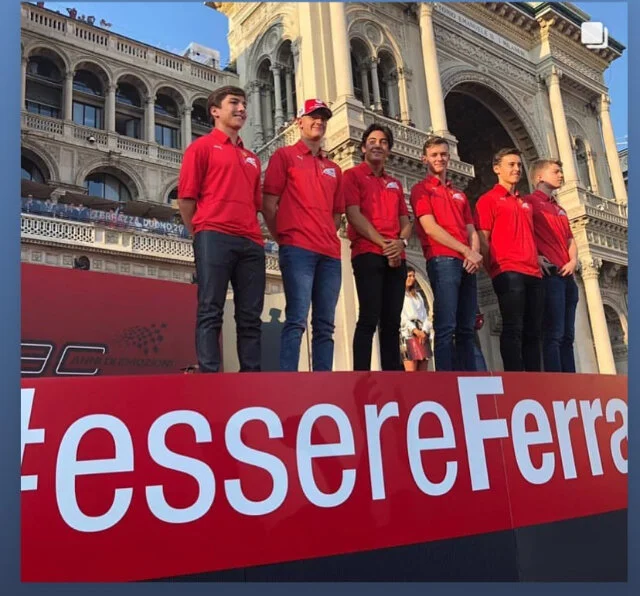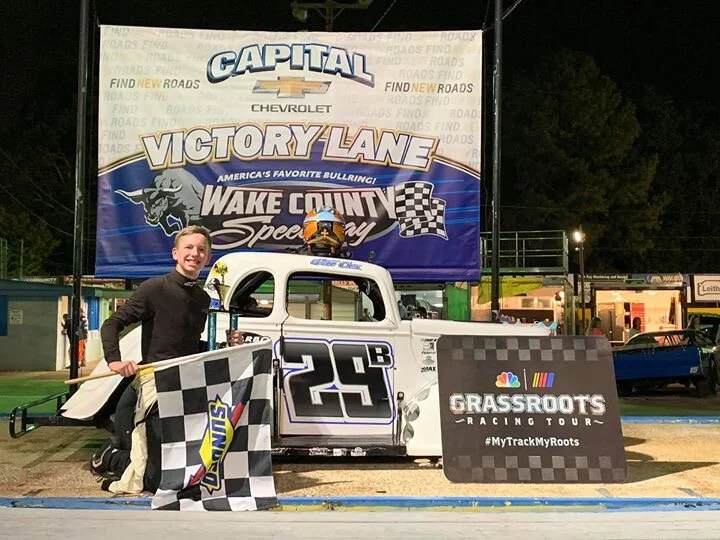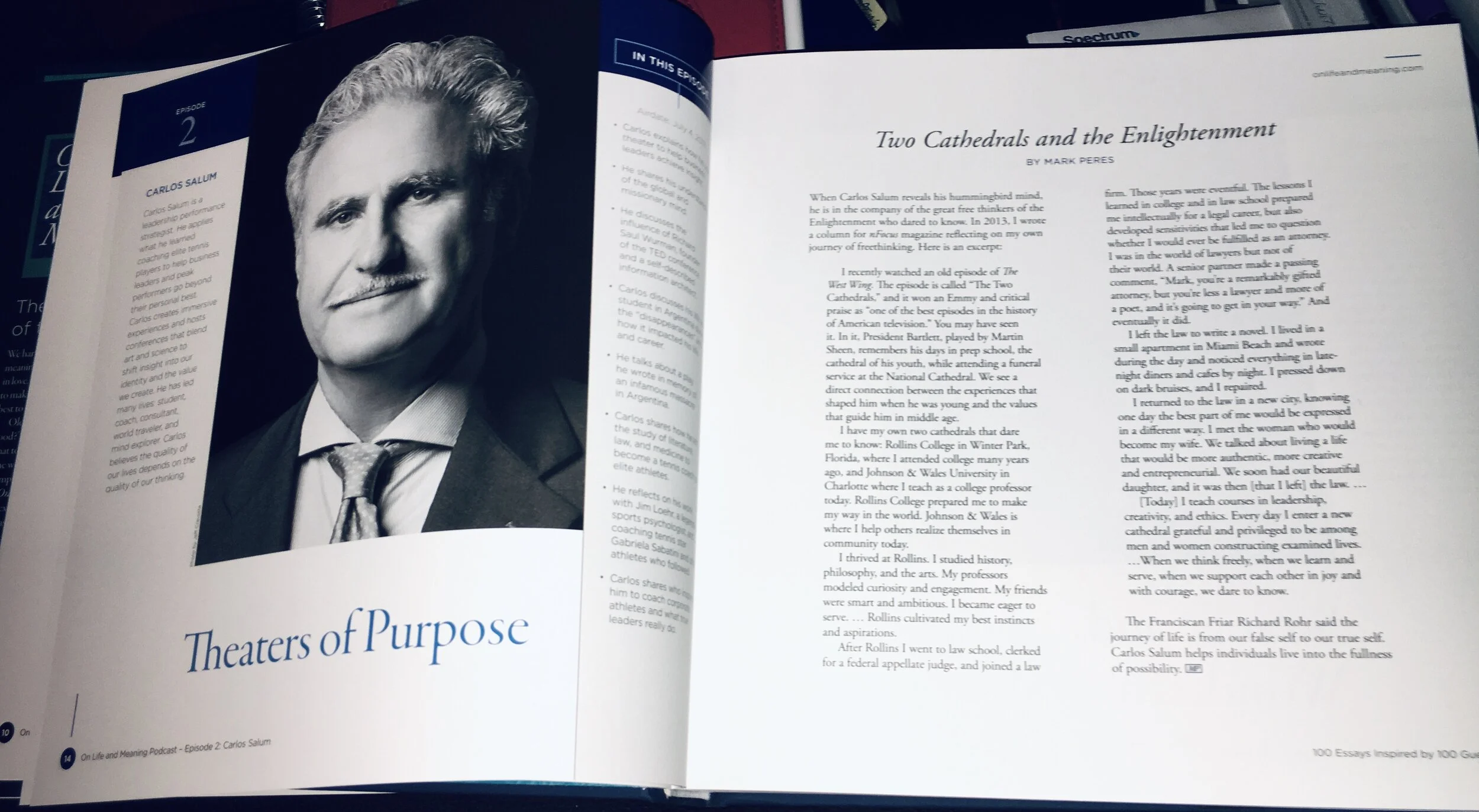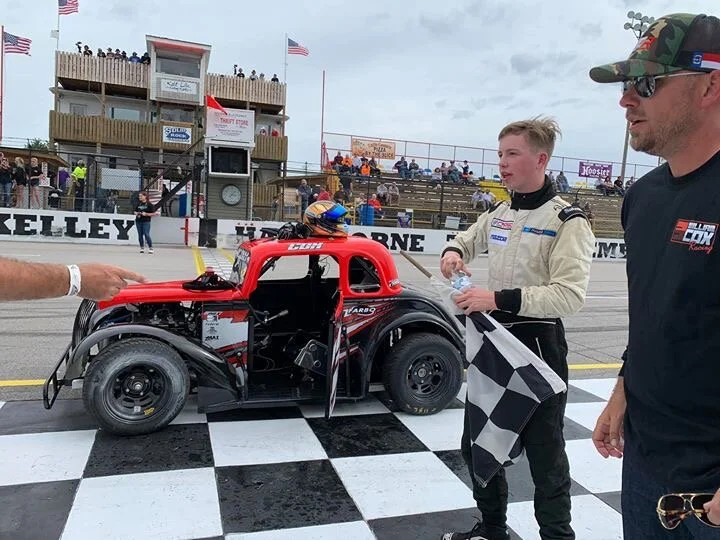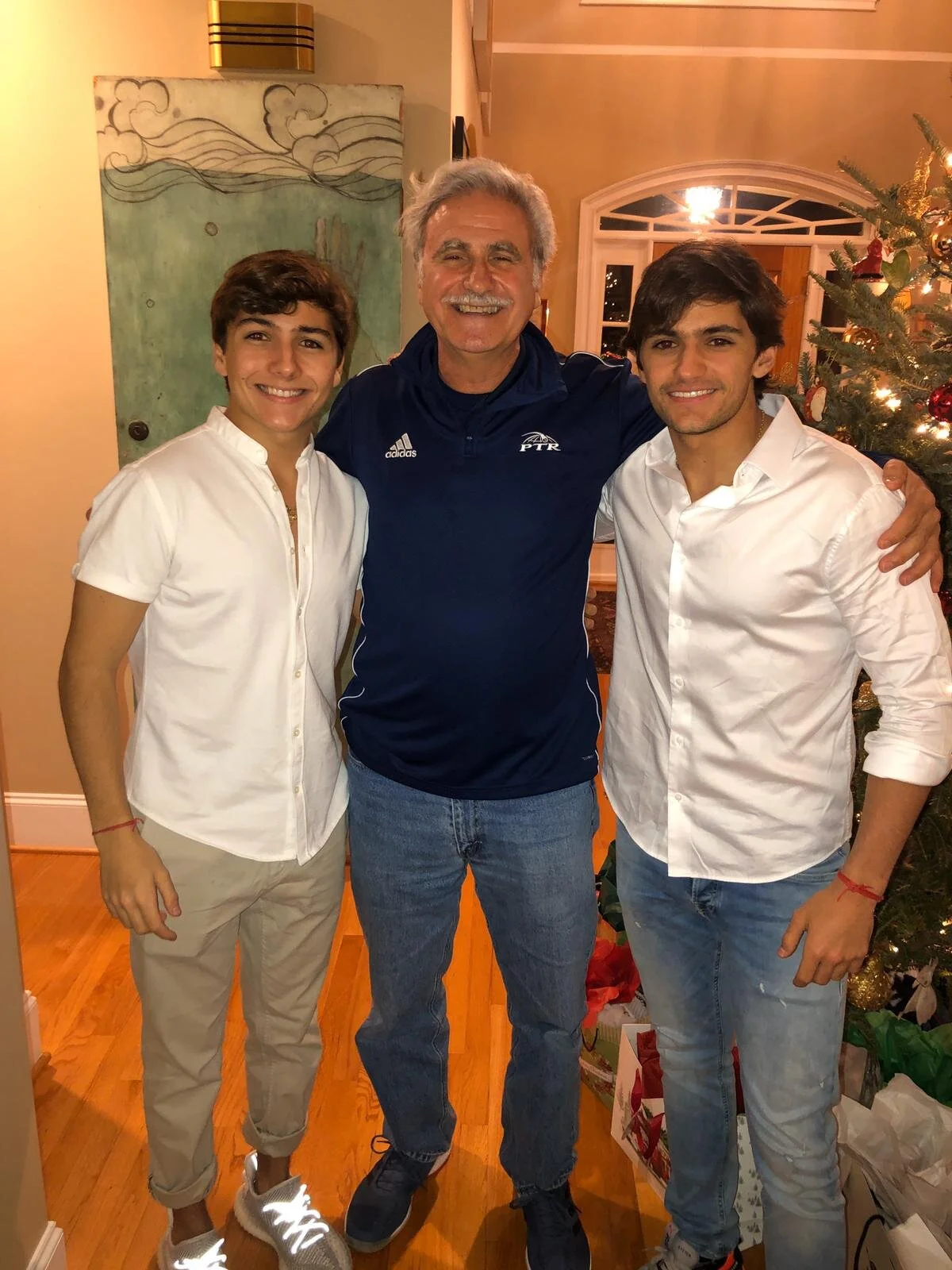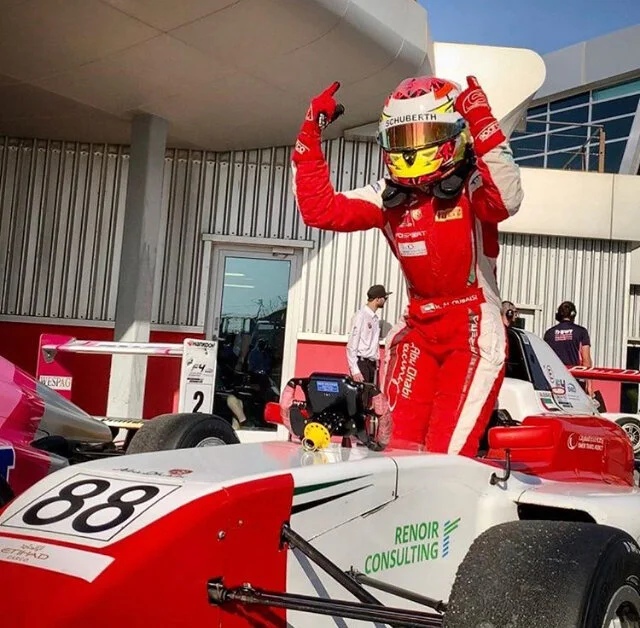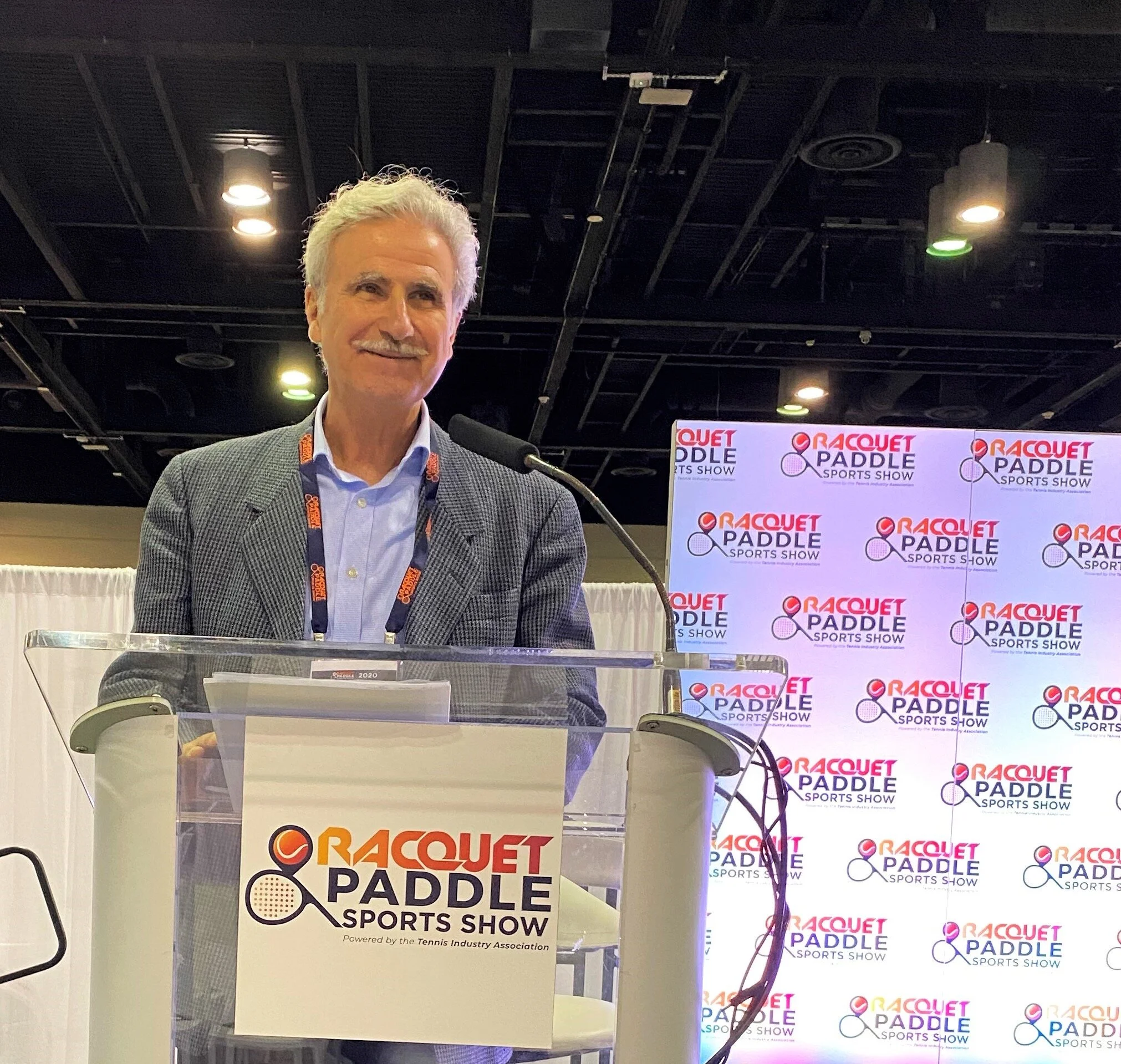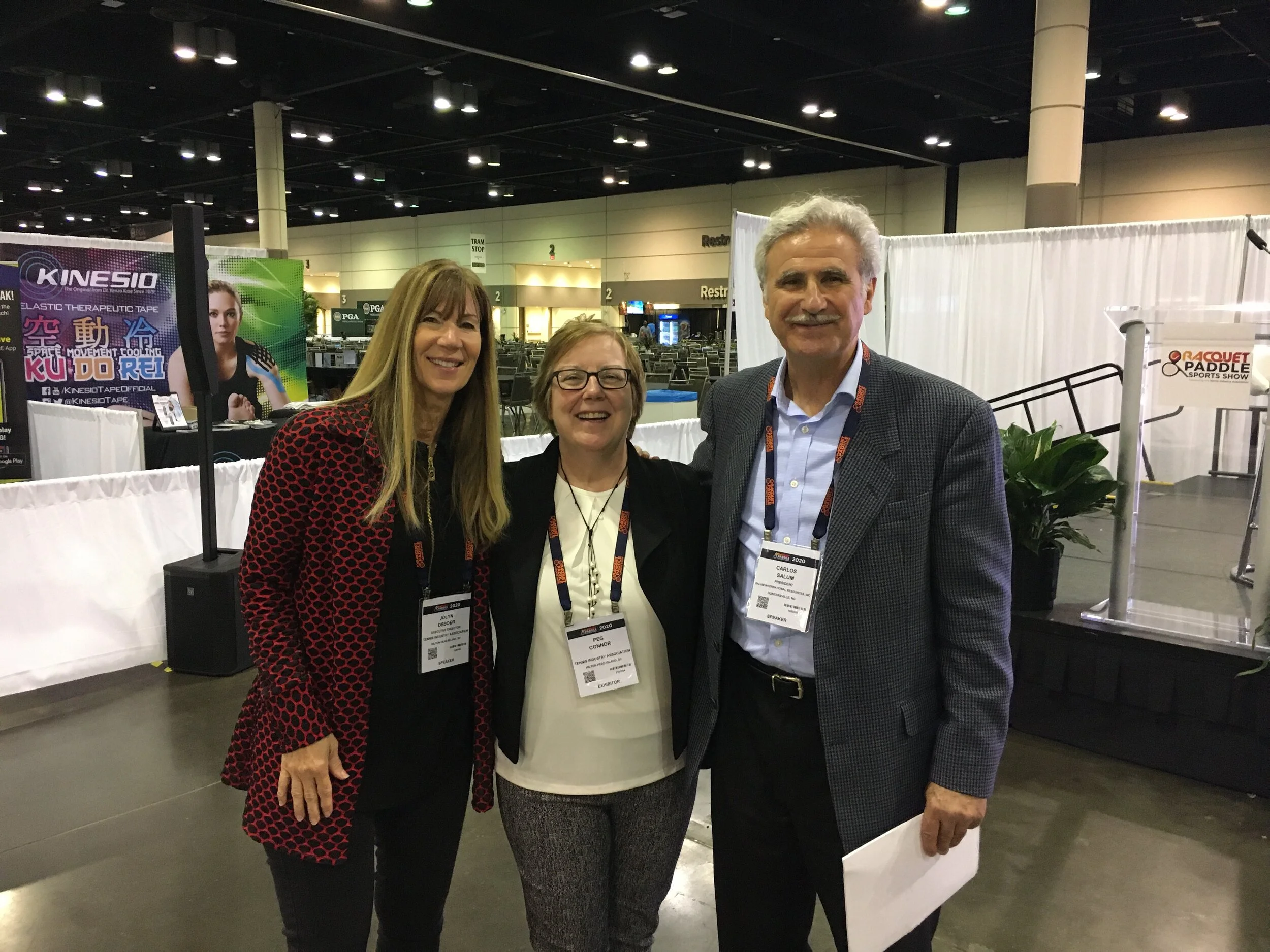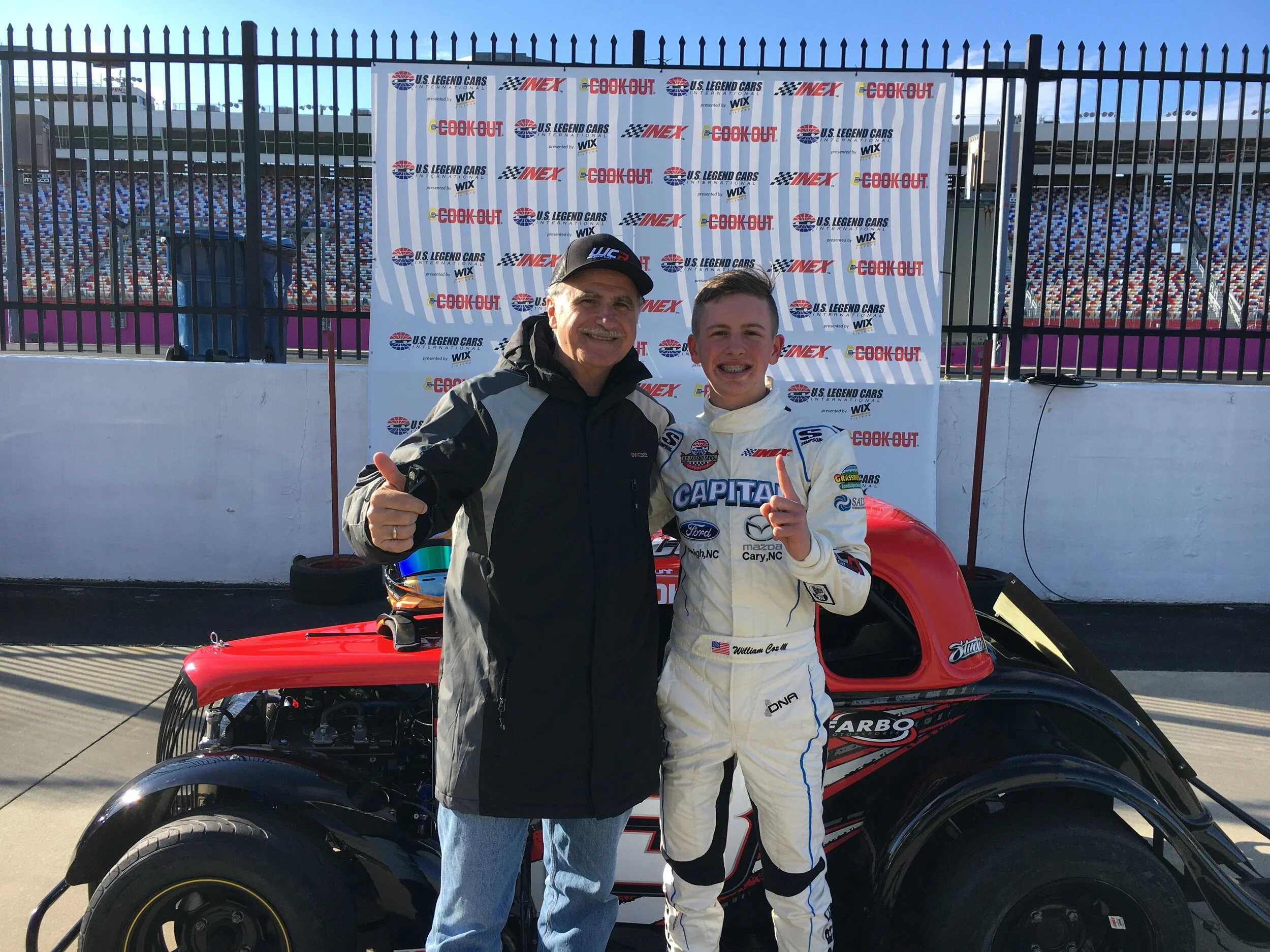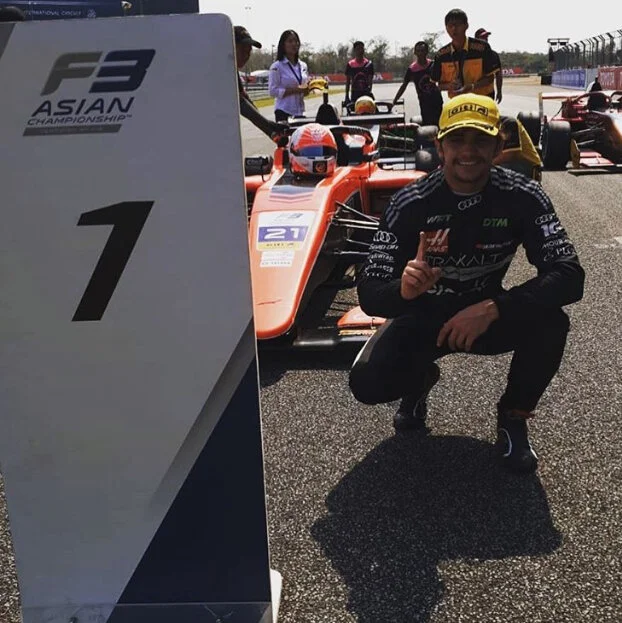Appreciate Where You Are, then Aim Higher
Discover Your Breakthrough Lifeline
If the unexamined life is not worth living, let’s intentionally find out what’s worth examining in our lives. The first approach can be to look back and appreciate how we got to this point. What are our achievements? What were the failures? What were the lessons? What are our lingering desires? Where do we go from here?
The Lifeline Exercise is a classic consulting tool that invites you to plot the six best and worst intervals in your life and analyze them through specific questions. After an initial approach, you can go deeper into detail and interpret the events that brought you to the present. Your Lifeline prompts you to interpret the lessons of the past to aim higher, to seek Breakthrough and conquer meaninfgul goals.
In this Chapter, I’ve used the analysis of my own Breakthrough Lifeline to guide you in your own exploration. You can find the description and instructions below.
CHAPTER INDEX
The Lifeline Exercise - Description
What you need:
A blank piece of paper
A pen and color markers or pencils
Between 30 to 60 minutes of uninterrupted time
Example of a Breakthrough Lifeline (Attorney)
Instructions:
Write down and Rank the six (6) best intervals of your life, both in performance and satisfaction.
Write down and Rank the six (6) worst intervals of your life, both in performance and satisfaction.
Plot your lifeline: Plot your lifeline as in the diagram above by locating the approximate position of each positive and negative event in your life between your Birth and Now (your current age). Positive events go above the line and negative events go below. Label each event with your age at the time and your (+) or (-) rating. Connect the points above and below the zero (0) line sequentially (chronologically).
Now, answer these questions:
LOOK AT THE POSITIVE TIMES: What kind of benefits did you produce for yourself during these times?
LOOK AT THE NEGATIVE TIMES: What did you learn about yourself from these experiences?
Look at the shape of your Lifeline:
How high are the high points? How low are the low points? What is the time interval between the high points and the low points? What does the general shape of your lifeline suggest to you (is it jagged, flat, undulating, climbing or descending?) What were the Breakthrough moments? How does it inspire your future?
What are you most proud about when you look at your Lifeline?
Make a list of the Top-10 things you are most proud about and rank them according to your feelings.
What does our Lifeline say about your Purpose in life?
Looking at your Lifeline, finish this sentence: “I’m in this world to…”
Your Lifeline - The Deeper Dive
Here are two suggestions to analyze your Lifeline in detail:
THE DEEPER DIVE: In the chart below (Example of a Deeper Dive), I show you how you can use a spreadsheet program or charting paper to plot your entire Lifeline in key segments and find a deeper interpretation of the initial exercise. The example is my own Lifeline from my birth to the Present. Within this Chapter, I’ve expanded my personal Lifeline Exploration to tell my life’s story divided in periods of growth. A Lifeline segment precedes each period or stage. You can work on your Deeper Dive in a similar way.
THE HERO’S JOURNEY meets the 4i STAGES: You can go even deeper in your analysis of your Lifeline by exploring how your Lifeline matches three of the The Hero’s Journey phases (Call to Adventure, Quest and Death/Resurrection), as well as the 4i Stages of seeing The Glass Full and a Half (Imagine, Improve, Inspire and Ignite).
Watch a short TEDEd video on “The Hero’s Journey” and its stages:
Here is the graph of my exploration of my Lifeline below on MS Excel (I’ve divided my Lifeline in major Time Periods separated by major decisions I took):
My Lifeline - Example of my Deeper Dive
my lifeline exercise - example of how you can chart your life in significant periods using a spreadsheet program
Imagine
1) ARGENTINA 1958 - 1985: Tried to conform, witnessed a massacre and dreamed of emigrating to change my life
Call to Adventure: Witness of the massacre at St. Patrick’s Church. Paid for my trip to Europe and the U.S.
Quest: Study Medicine and teach tennis professionally. Discover my passion for sports with Enrique Pisani.
Death and Resurrection: Quit Medicine and Emigrated to the U.S.
Improve
2) USA 1985 - 1993: Entrepreneurial projects to reside in the U.S., success in sport psychology, move to the UK
Call to adventure: Teach with Van der Meer in the U.S. and Europe. Organize the Dr. Jim Loehr European Tour
The Quest: Expand Dr. Loehr’s business internationally; help tennis players win Grand Slams. Write a play
Death and Resurrection: Leave Florida, create my own company and move to England to run my first project
Inspire
3) ENGLAND/USA 1993 - 2000: Develop UK project, return to U.S. to join Internet start-ups. Move to Houston
Call to Adventure: Working in England, writing my play to produce it in 1996-97. Moving to Houston
The Quest: Producing my stage play in Tampa, Buenos Aires and London, as well as a TV Documentary
Death and Resurrection: Leave Houston, move to Charlotte and work in Switzerland in 2000
4) SWITZERLAND 2000 - 2017: Working in Switzerland in Swiss Private Banking projects
Call to Adventure: Leverage my Coaching and Theatre experience to inspire and motivate clients
The Quest: To work with my friend Gustavo Raitzin to support his strategies and teams for success
Death and Resurrection: Gustavo Raitzin retires, I focus on U.S. entrepreneurial projects and sports
Ignite
5) USA 2017 - PRESENT: Seeking a bigger platform to inspire others and ignite Breakthrough opportunities
Call to Adventure: Leveraging coaching into Motorsports, Fittipaldi Championships and leAD Sports Tech
The Quest: Producing inspirational sports films, mentor at leAD Sports Tech and producing my screenplay
Death and Resurrection: (Not there yet… but focusing on having a larger stage to inspire more people)
TOP-10 THINGS I’M PROUD ABOUT (1958 to PRESENT):
I think it’s important to select the Top-10 points of pride in your personal history. Not all events feel the same, even if we’ve ranked them high in our Lifeline exploration. Some of them reveal “the inciting incident” that motivated us to start something or change direction. Others reveal “the secret motive” driving something we do. A few deserve a mention because they required great effort, sacrifice and they were triggers for our personal transformation. Here are my Top-10 points of pride in order of feeling, not in chronological order:
Writing and producing a play and a TV documentary in 1996-97
Becoming a US Citizen in 1999 having married Karen and getting a sense of belonging
Writing a book and writing a screenplay
Helping Gabriela Sabatini, Sergi Bruguera, Pietro and Enzo Fittipaldi win major international Championships in their sports
Buying a house in Charlotte, NC in 2003 and finally call a place “home”
Winning tennis tournaments when I was 17 with my father watching the finals
Working with my best friend in Switzerland in change management from 2000 to 2017
Learning with Richard Saul Wurman, Dr. Edward de Bono, Dudley Lynch and other mentors
Working with Dennis Van der Meer internationally and organizing Dr. Jim Loehr’s Speaking tours in Europe and Japan in 1989-1992
Winning the Amancay Literary Prize in 6th grade
My Life’s Story - according to My Lifeline
IMAGINE - Stage 1 - Argentina (1958 - 1985)
Thinking is My Inheritance
I grew up in Argentina in a family of high achievers who taught me that a skillful thinker is one that can always improve, someone who is competent but not arrogant nor defensive, a confident individual that evaluates alternatives and differing viewpoints before making decisions.
In the early 1900's, my Lebanese and French grandparents overcame monumental obstacles in Buenos Aires to give their children access to higher education. The Salum and Brieux sons and daughters honored them by becoming scientists, lawyers, engineers and business managers who made significant contributions and gained international recognition. When I look at my family, what stands out is the quality of their thinking: Optimistic, Entrepreneurial, Determined, Resilient, Socially Conscious and Universalist. They aspired to contribute to the whole of Humanity.
THE SALUM FAMILY
YAMIL, MARIA LUISA, JOSE, SOFIA AND ODETTE SALUM
My paternal grandparents had left behind their families in Lebanon located 7,600 miles away, never to see them again. They were getting away from scarcity and pandemics, and moving towards the promise of a new start in America.
Jose (Yousef) Salum, my grandfather, left his town of Ghosta (above Beirut) around 1910 by ship and arrived in Buenos Aires without money, documents or language skills. He was only 15 years old and just had a piece of paper with the name and the address of a Lebanese family who hosted him for a while. He managed to get jobs and become an entrepreneur. He never wanted to work for someone else and he succeeded at remaining independent all of his life.
Sofia Khoury El-Barri, my grandmother, was a teenager when she left Lebanon by ship with New York City as her destination. Ellis Island was closed due to a pandemic and the only port accepting immigrants was Buenos Aires. Considering their situation and the possible delays, her chaperons agreed to extend their trip and travel South, hoping to be reunited with their U.S. family later. It never happened. She was often homesick and her Argentine hosts thought that she should be married to feel grounded.
Jose and Sofia met in Buenos Aires thanks to the matchmaking efforts of their Lebanese circle of friends. They both had survived the long boat trip to America in search of wonder and abundance. He was older, serious and business-minded. She was bubbly, kind and gregarious. Both were Catholic Maronites, which connected them with local networks through their church. They both had strong accents in Spanish, yet their kindness, polished manners, entrepreneurial ethic and positive attitude endeared them to people. They were not unique; it was a time of strong immigration currents towards South America.
My grandfather established bazaar shops and soon prospered as a retailer of housewares. As immigrant minorities, some of the Lebanese and Jewish in Buenos Aires learned to cooperate and congregated in specific neighborhoods to defend their trades from the economic influence and prejudices of others. I found out about this historical fact from published research and direct testimony of Jewish families who had done business with my grandfather and had fond memories of him. It made a difference in my upbringing. I’ve been welcome by Jewish friends and clients all my life and their viewpoints, trust and wisdom have enriched me immensely.
Jose and Sofia had three children, a boy and two girls, close together in ages: Yamil, Odette and Maria Luisa.
dr. yamil salum, my father
Yamil, my father, was born in 1922 and became a good student. When I saw some of his notebooks for the first time, I was amazed at the impeccable calligraphy, the tidiness and the intricate diagrams he had to draw with Chinese ink and dip pens with metal nibs. He liked science and attended the Otto Krause technical school, from where he went to the National University and earned a PhD. in Chemistry - the first in the Lebanese lineage to have one. His early work focused on insulin production at the prestigious Instituto Malbran, followed by a position at Eli Lilly Laboratories. Argentina would have two Nobel Laureates who advanced the research on insulin, which benefited diabetes sufferers worldwide.
His career progressed at U.S. pharmaceutical and cosmetic companies (Sydney Ross, Winthrop and Schering Plough). His final position was with Copetro, a division Great Lakes Carbon, with whom he set up an automated calcium petroleum coke distribution plant, essential for aluminum production for the automotive industry. He had roles related to Quality Control. Through his career, he contributed to the Argentine Chemical Society, which honored him for his lifetime achievements and his promotion of science and industry. He passed away on his 93rd birthday in 2015.
my aunts odette and maria luisa salum
My two aunts, Odette and Maria Luisa, were steered towards non-academic options and excelled at what they chose to do. Odette became one of the first occupational therapists for the disabled in the country, trained by British nurses (one of them was the sister of film director John Schlesinger's, Academy Award Winner with “Midnight Cowboy” - with whom she had great rapport). I visited the Institute, which was staffed with top-level medical experts, and saw a model operation were helping their patients become autonomous was paramount. Odette felt rewarded every time a disabled individual would find employment and could fend for himself or herself in society. Maria Luisa had strong management skills and joined Asicurazioni Generali, the renowned Italian insurance company with its headquarters in Trieste, and climbed up the ranks to become the director's chief of staff. When he retired, she stayed a few years longer and helped navigate the transition to a new team.
My aunts never married and lived together in nicely decorated apartments that we always wanted to visit to have long conversations over tea and outstanding sweets with them. They remained curious, informed and engaged throughout the country’s constant political turmoil. I admire their capacity to forecast, save and invest to shield themselves from the rapacity and ineptitude of Argentine governments. They were a source of love and guidance for my brother and me when we most needed it, especially during the oppressive dictatorships and before we emigrated, when our safety and clear decision-making were crucial to our future.
chloe, estela and robbie salum
My brother Robert (Robbie) is a year and three months younger than me. He’s blond with blue eyes, while I originally had brown hair and hazel eyes. Robbie is calmer than I am, a keen observer and judge of character. He’s a tennis coach in Sarasota, Florida and he's married to Estela Madrazo (an architect and Spanish teacher) and has a multi-talented daughter, Chloe, a university student with a passion for arts and science.
Robbie and I share a love for the absurd and surreal humor, which we exercise daily when we talk with my mother online. He’s an excellent gourmet cook, preparing several challenging and complex dishes every day as a way to relax. Their description alone makes me laugh for how impossible they seem for a normal person. Robbie is also a connoisseur of men’s fashion, a sommelier and has a large collection of recorded music. Like my mother, he paints very well and is a highly imaginative artisan.
We always lived in apartment buildings in a Buenos Aires’ suburb called Belgrano, where you still find some of the original homes built by British families who mostly worked for the southern railroad and shipping companies. We grew up playing together at home while my mother was at work. It seems we were not kind to nannies, which I would blame it on separation anxiety. Later, we played soccer with neighbors on the nearby square, rode our bikes and participated in all kinds of mischief. Some of those incidents still make us laugh hard; we were creative even for disaster. To keep us off the street, my parents made a big financial effort and bought a membership at a British club two blocks away, where we learned tennis starting at 9 years old and developed most of our social life.
Tennis changed everything for us. Initially, we had to endure the scorn of the British adults for newcomers and understand their codes of conduct. We also had a couple of fights with entitled kids who saw we behaved and dressed differently (we knew nothing about clothing brands as status symbols). It didn’t help that we didn’t play rugby either. Within a few years, we had a complete tennis game, so we started playing with adults, which gave us more court time and recognition.
Being so close to the club, we could train often and spend the summers at the pool. Robbie always played with more ease than me, became a competitive swimmer and a cricket player as well. I was single-minded about tennis. As my doubles partner, he had a reassuring influence, as he had better emotional control and execution under pressure. I had to work hard at it, always.
When he was 16, Robbie decided to train at Club San Fernando, my parent’s first club where they kept a membership. It was an hour away from the city, ideal for a weekend getaways, barbecues and rowing. Their tennis school had produced several extraordinary talents who held world rankings, including the Gattiker brothers (national champions) and Jose Luis Clerc, who would become #4 in the ATP and play legendary Davis Cup matches with Guillermo Vilas, the trailblazing national hero. During this time with them, Robbie grew tremendously as a player and joined the best teams in interclub competitions.
Robbie studied Economics and started teaching tennis with me to stay connected to the sport. He dropped out close to the time I quit Medicine, as we saw most professions deteriorate due to the neverending economic crisis. We focused on building a tennis services company (Tenislab) and found managing pros and club staff quite a nightmare. My father’s management support helped us stay afloat. After I left Argentina, Robbie run a large tennis club and spearheaded the birth of paddle tennis in Argentina. He got married and divorced within a year. Shortly after, he met Estela through friends and later they got married in Sarasota in 1990, while we were working with Dr. Jim Loehr. She has two married brothers (Daniel and Fernando), both entrepreneurs, two nephews and two nieces in Buenos Aires. In 1990, Robbie and Estela joined me in the United States and benefited from a fast-tracked visa process that gave us all peace of mind.
THE BRIEUX FAMILY
standing: olga, guillermo, eduardo, jorge and sonia with their parents marta and fernan brieux.
My maternal grandfather's family came from Bordeaux, France, attracted by the opportunity to succeed as builders of railroad ties, roads and bridges in northern Argentina. The breadwinners fell ill and my grandfather, Fernan Brieux, had to work from an early age to support his relatives, especially the women. He was the youngest of thirteen children and did not have access to higher education. Through sheer effort and dedication, he became a senior executive at the National Power Company (CADE) and married Marta Clement, my grandmother.
Fernan and Marta had five children: George, Sonia (my mother, born in 1926), Olga, Eduardo and Guillermo. After he built a house he designed, my grandfather decided that all his five children would study and get a university degree, so they would not have to struggle like him. Financial stability, academic success, self-reliance and significant contributions to society would be his legacy to them.
Dr. George Brieux, the first-born, was a Doctor in Chemistry who complete a post-graduate degree at Leeds University in England and was influential in the Argentine chemical industry as a university professor, a researcher and as president of the British Council. Queen Elizabeth awarded George an OBE title (Outside British Empire) for his contribution to the United Kingdom's brain trust after securing scholarships for two prominent talents: Dr. Cesar Milstein, 1984 Nobel Prize Laureate in Medicine and world-renowned classic music ensemble Camerata Bariloche's founder Alberto Lisy. Late in life, he married Dr. Adela Amico, a Chemistry professor, who lived until 104 years of age, autonomous and disciplined, in her beautiful apartment in the city center. She was always well informed and lucid. Bank employees asked her for pictures together when they read her age in her documents.
One of his most interesting projects George worked on was how to improve the taste of yerba mate, the national green tea drink. During my trip to Paris in 1981, he asked me to find the legendary and rare book “The Physiology of Taste,” by Jean Anthelme Brillat-Savarin, published in 1825 and revered by chefs worldwide. I found it at an antique bookstore in St. Germain and he was impressed by my detective work.
Uncle George introduced the kids in our family to the adventures of Tintin (in French, English and Spanish). He traveled often and would bring back his books to entice us to learn languages. He had eclectic interests and was attracted to the extraordinary. I was completely fascinated with Uncle George’s stories about the world cities he had visited. Despite the subjacent prejudices of Hergè, its Belgian author, Tintin the reporter invited us to imagine new experiences, learn about the world and to be a contribution, never mind the madness and absurdity around us (we had plenty of both in Argentina). I saw Tintin as a creative, proactive thinker and a reliable friend with a sense of justice. Tintin ignited my desire to travel around the world and be like Uncle George, to become a storyteller that could excite people's imaginations and encourage them to venture out and discover by themselves. As in his beautifully illustrated books, sometimes you choose the adventure, often times it chooses you. You need to decide if and why you will embark on it.
My grandfather Fernan Brieux was a free thinker and a visionary. I remember him as a man with gravitas and firm in his convictions. He read profusely about a variety of topics, which made for richer conversations at a time that there was no television to obstruct pure dialogue. Although in those times women would spend their lives as homemakers, he foresaw that Argentina would one day legalize divorce despite its strong Catholic base. He wanted his two daughters to study and be able to sustain themselves financially. My mother's true vocation was to be a painter, but my grandfather persuaded her to study "something that would make money" - therefore her PhD in Chemistry.
my mother at the pasteur institute in paris, france
Sonia and Olga were among the first women to obtain Science degrees in Argentina. My mother met my father through Olga at the university. She earned a scholarship at the prestigious Pasteur Institute in Paris, where she spent a year doing research, and another with Pitman-Moore laboratories in Indiana. She returned to Buenos Aires to marry my father and take a leadership role as a research scientist at the National Academy of Medicine, where she studied the genetic origins of leukemia and hemophilia for three decades. To get married, she agreed to a Catholic baptism, although she always maintained a healthy philosophical distance from strict religiosity.
My mother thinks and operates as a CEO with focus, determination, resiliency and the ability to persuade others to join an epic vision. She balanced her role of wife, mother and professional masterfully, never sacrificing one for the other, and transmitted her sense of being "a citizen of the world who creates possibilities" to my brother Robert and I. As feminism was gaining ground, I remember journalists from women’s magazines interviewing her. She achieved international recognition and renowned writer Victoria Ocampo funded her work in part, clearing a path for future female scientists to break through and succeed. Some of them worked in my mother’s team.
[Image Gallery: When she retired, my mother fulfilled her childhood dream of becoming a painter, successfully exhibiting and selling her abstract work to corporate and private collectors.]
My mother’s example has made a strong imprint in me. As a leadership performance and breakthrough thinking advisor, I enjoy helping women leaders as brilliant and determined as my mother and, in her honor, I always share one fundamental suggestion: "Stake your claim, define your uniqueness and insist on how you are a powerful contribution." My mother has always demonstrated her talent, making an impact as a thinker, a citizen, a scientist and an artist. The women in our family see her as a beacon when they must make crucial decisions.
my aunt olga and my uncle humberto mandirola in paris, france
My aunt Olga became a physicist specialized in quantum physics and a university professor. She married engineer Humberto Mandirola and had three children: Fernan, Pablo and Marta. Olga was a trailblazer with a unique intellect and straightforward personality. Humberto participated in the design of the Buenos Aires University Campus, featuring modern buildings and sports facilities, which became a benchmark for future undertakings. Their lives centered on academia and intellectual pursuits, as well as traveling. My cousin Fernan studied Medicine, specializing in ICU and Emergencies - and simultaneously developing an international software company providing solutions for hospitals. My cousin Pablo is a lawyer who immigrated to Barcelona and assists Latin American companies establish offices in Spain. He married two times and has two children, Celia y Guido. Marta studied pedagogy, became an artist and married Horacio Socolovsky, with whom he has four adult children: Matias, Julian, Lucas and Marina.
Uncle Eduardo was an attorney, calm and measured, a voracious reader, researcher and a blog writer under the pseudonym Jovialiste. He published several works, one of them an interesting book on the mechanisms of humor. He expanded the research of the genealogical tree of the family. He married Amelia Olivera, also an attorney, and mother of their two children: Enrique (deceased) and Carolina (a psychologist), who is married with two children.
Uncle Guillermo was a land surveyor and traveled through Argentina extensively. He was a bachelor with a quick sense of humor and a passion for gourmet cooking. Compared to the urban lifestyle of his brothers and sisters, he experienced the “gaucho” customs to the fullest during his extensive traveling through the provinces.
[Image: My father took this picture of my first encounter with an elephant alongside my mother. I choose it as my first memory of being in awe]
Since an early age, I was in awe of my family's hunger for information, knowledge, conversation, cultural engagement and travel. Their desire to better themselves and excel at their professions was palpable and it became part of my identity.
one of my mother’s watercolors, from her last explorations as a painter
My parents gave me the gift of the values they lived intentionally and the activities they appreciated: family, education, the arts, creativity, kindness, ambassadorship and tennis as an international language. Learning from them by example was exciting, and made the effort of studying more engaging; it gave it purpose. I understood the "Why."
Their courageous commitment to being fully alive rather than to "making a living" influenced me deeply. I chose to pursue breakthrough experiences rather than sticking to a career, letting awe be my compass.
While more analytical individuals might consider my idealism a serious character flaw, it has actually given me amazing opportunities to prove my value beyond expectations.
While many of my friends sought certainty, I always comfortable with desire. I was focused on the future, on what could be, on how something could be better - despite the overwhelming odds against it. Corrupt and inept Argentine politicians and a fractured society would provide monumental obstacles during the first 25 years of my life but strengthen my resolve to live elsewhere.
I'm proud to have inherited my ancestors' thirst for intellectual freedom and individual progress, along with their rejection of authoritarian rule (the Brieux ex-libris designed by my grandfather Fernan reads: "ny roi ni archevêque," neither king nor archbishop - Plumeau and Masse are last names). Education and fruitful effort were the conduits to understanding, represented by method, order and perseverance.
Tragically, the dictatorships that ruled Argentina from 1966 to 1983 denied my generation the chance develop as free thinkers in full. The National Security Doctrine, implemented by the U.S. government in alliance with South American military regimes, engendered "Operation Condor," a vast international plan to install a free-market economy through shock therapy, widespread privatization and record levels of external debt.
Operation Condor involved targeted abductions, disappearances, interrogations, torture, and transfers of persons across borders. According to a declassified 1976 FBI report, it had three levels. The first was cooperation among military intelligence services. The second, to detain and disappear dissidents across borders. The third and most secret phase, was the creation of special teams of assassins to operate anywhere in the world and kill political leaders who could incite opposition to the military states.
MY CHILDHOOD AND ADOLESCENCE
kindergarden - with sister mercedes
At 4 years old, Robbie and I went to a kindergarden run by Catholic nuns located near our tennis club. We both loved Sister Mercedes, the youngest of our teachers. We learned to read and write and play with kids whose names I remember to this day, especially Robin and Gerdt, two German brothers, our first international friends. I also remember having my first crushes on girls, being in a costume for the first time and not being comfortable with obligatory prayers to the Virgin Mary, as I could not figure out why we gathered to talk to a statue reciting words that made no sense.
When I was six, my first day in school was an eventful one. My parents had chosen Colegio Manuel Belgrano run by Catholic French Brothers, a branch of the Brother Champagnat education model: strong on academic information and sports, reasonable on discipline and a pipeline for leadership development. We spent the morning sharing our names and writing the letters of the alphabet on the blackboard. I already knew how to read and write, so I paid attention to my peers’ personalities: who was confident, who was shy and who seemed lost facing the class up at the blackboard.
At lunchtime, I was supposed to eat at the school and have lessons until 4:00 pm, when a private bus would take me home. I decided the morning had been boring and since I knew my grandmother Sofia lived five blocks away, I took off on foot and didn’t tell a soul. While waiting to cross a major avenue, I saw my grandfather Jose going in the same direction. I stood beside him and said hello. He was shocked and asked me where I was going. “To your house, for lunch,” I said. He smiled, shook his head, took my hand and we walked together for two blocks. Mayhem ensued, as my father drove hurriedly from work, alerted my mother at her laboratory and called the school to find out how nobody noticed I had left. Meanwhile, I had sandwiches with my sweet grandmother, who seemed both amused and confused. I answered the adults’ questions nonchalantly, which baffled them even more.
I’m certain my actions that day hold the clues of many of my decisions in life afterwards. The next morning, the young religious brother (Ricardo) was not too happy to see me and kept a close eye on me, escorting me to the lunch hall at noon.
The French Brothers taught a strong Humanities curriculum, so I did pretty well year after year, except for recognizing I had a strong distaste for the rigors of math, where I found the emphasis on the right-or-wrong answers irritating. My sense of the world was more nebulous and fluid than black-or-white: blue and grey are fine; shades of grey are interesting. Daydreaming, reading, writing, drawing and playing soccer and tennis were my chosen gates to nirvana (I didn't have a TV till I was fourteen). I read for pleasure and loved to let my imagination fly, especially having climbed a tree.
Our music teacher was a peculiar character with a keen understanding of his role as “emotional manager.” He knew that music was an outlet for our high-pressure education, yet he intended for us to learn to sing anthems, to understand classic music and to be able to analyze the music we liked. I clearly remember the day he taught us about Miles Davies and Bill Evans, and described the intricacies of modal jazz. He called it “the antimatter of music” and I was hooked, I wanted to know more. I’ve never been able to understand music fully, but I can superficially analyze a composition’s structure thanks to him. Two decades later, when I listened to “Flamenco Sketches” in “Kind of Blue,” I had a religious experience. It all came back to me; I had a memory trigger. That was the beginning of my jazz collection, mostly of pianist Bill Evans, who has transformed my understanding of beauty, truth and the purpose of art. “I want to communicate a qualitative thing, what I consider to be above the ordinary, outside of ordinary experience (...) It has to do with a sense of beauty, but I think once somebody perceives a thing like that, it can change their lives, so that you can say ‘there’s something real, and I might as well live with that." [Bill Evans]
i’m the goalie, saving the day against our eternal rivals, the “b” division
We played soccer at school (making the team was a status symbol) and I became a decent #10 until I was 12, when the body blows started to get harder. I had tried rugby due to peer pressure and found it immensely boring (I would never get the ball and there was senseless punching, for show, and rarely penalized. I liked my teeth just where they belonged). By then, superstar goalie Hugo Gatti had moved into our building and talked with us when he was between matches with Club River Plate and the national team. I was star struck and formed the “Hugo Gatti Fan Club,” of which I was the only member. Inspired by his tales and after reading the sports magazine “El Grafico” weekly, I decided to become a goalie myself and enjoyed the individual attention until the body blows got worse.
Tennis seemed a logical alternative: I could hit the ball all the time, winning was up to me and if I played well, I would get the attention I deserved. There was quite an obsessive attention to elegance at our club, with mandatory white attire and brands such as Fred Perry and Lacoste in vogue. I had neither, but I aspired to earn them. Our club had plenty of snobbish players with shabby strokes, and we kids thought they were clowns.
There were always new books and records at our house. My parents and relatives had grown up accustomed to saving a portion of their salaries to buy them monthly, it was a tradition. Through their encouragement, I gradually experienced the sublime through artists such as Johann Sebastian Bach, Joaquin Rodrigo, Vincent Van Gogh, Paul Gauguin, Francis Bacon, the Bauhaus, Bill Evans, Miles Davis, John Coltrane, Antonio Carlos Jobim, Vinicius de Moraes, Tamba Trio, Arthur Conan Doyle, Charles Dickens, Jorge Luis Borges, Gabriel Garcia Marquez, Julio Cortazar, Mario Vargas Llosa, Pablo Neruda, Alejo Carpentier, Harold Pinter, Samuel Beckett, Alberto Giacometti, Carlos Alonso, Quinquela Martin, Guillermo Roux, Federico Fellini, Ingmar Bergman, Philip Glass and other masters. Quite an eclectic selection that left an indelible mark in my subconscious.
winner of the premio amancay - my school’s literary prize
My school had established a literary competition for sixth grade students called Amancay Prize. The goal was to write a composition about the national flag. I chose the title “High Up in the Sky,” the same one as the flag’s song we sang at patriotic celebrations. The date was November 6, 1970 and my winning submission read as follows:
“It’s been many years since I see it, my National Flag. Day after day, it raises up the mast in front of the students in a reverent ceremony, deserving of the most respectful silence and patriotic pride. Such ceremony is possible because, as the nation’s patriots do, the students fight every day against ignorance, the scourge of Humanity. There is no better homage for the nation’s symbol that to begin with hearts inflamed by martial music, the ascending cloth and the national shield fixed, vigilant. Two heroes flank the flag: Belgrano and San Martin. They benefited the nation and their effort made possible for the flag to fly today. When their illustrious lives ended, others continued their work and it is now our time, it is our generation’s duty to continue carrying with a firm pulse the standard that represents the country and its struggle. When it rains, the flag is not there; then we must demonstrate that we carry it in our hearts, that without its material presence we reflect its glow. Honoring the flag also implies being patriotic but without fanaticism outside our borders. There are those who understand the flag by its dogma, by its symbolic essence, by what it represents. As I prepare to enter High School, where I will be able to understand you better, my flag, I just wanted to give testimony of how I feel as an Argentine.” - Carlos Marcelo Salum Brieux
Encouraged by the prize, I wrote poetry and short plays profusely after that (very few decent ones, I kept just one). Many years would go by until I would confidently call myself a writer again.
I was often chosen as one of the leaders in my class, elected by my peers to organize events and participate in a leadership group that met regularly. They called me “Socrates” because of my penchant for difficult words, complex thoughts and declarations aimed at impressing the teachers. I politely competed with a small group of bright friends who consistently had good grades, each with different strengths (mine was writing). My closest friends were Eduardo Abbate, Carlos Guaia, Adrian Garzon and Carlos Seijo (whom I had met in kindergarden). It was important for me to keep up with them and perform at their level.
The reward was to be in the “Honors’ Wall” located at the reception hall of our school, where everyone who entered could see who the best students were. I was the only serious competitive tennis player until the last two years in school, when others started playing tournaments thanks to Guillermo Vilas’s ascent. I had developed a strong sense of individuality through my relatives and a burning ambition tested on the tennis court. In my club, if you were a winner, they praised you; otherwise, you did not practically exist.
I tried different hats during high school, testing my preferences during extra-curricular activities: sports journalism (I wrote about soccer matches), organizing the first conference ever held by my class featuring a well-known Federal judge, producing short plays to be performed at national holidays, mentoring younger students and publishing a school-wide newsletter with other class leaders.
In contrast, I remember twice reaching the limit of my emotional control and punching two bullies in the face, something completely out of character for a class leader. These guys were the loudest and the biggest, so felt they could push everyone around, anytime. I knew my turn would come, so I had decided I would have none of it. When they attempted to bully me, I hit them in the face before they could react. They were stunned and enraged, but I had timed my response to be just a few steps from a teacher or when we were entering the classroom. Everyone noticed my stunt and it enhanced my status and my self-perception. To my peers, I became an unknown quantity, someone difficult to pigeonhole, stereotype or clearly define - and I liked it that way.
My school offered different ways to practice social engagement as Catholic students. I participated in weekend visits to hospitals organized by prayer groups to comfort bed-ridden children. I stopped doing it when my tennis tournaments’ schedule intensified, but I remember feeling useful when a badly burned little girl would smile and appreciated our weekly visits. I also remember their humble parents and relatives trapped in the somber atmosphere of the public hospital, where seeing uniformed boys visiting them lightened their mood.
argentine writer jorge luis borges with professor jesus lopez
Jesus Lopez, my Literature professor, had a big influence on me when I was 17. He introduced me to the pioneering writers belonging to the "Latin American Boom" in the '70's (Julio Cortazar, Ernesto Sabato, Mario Benedetti, Mario Vargas Llosa, Juan Rulfo, Alejo Carpentier, Carlos Fuentes and Gabriel Garcia Marquez). Their stories and the worlds they took me into, as well as the existential choices of their characters, enthralled me.
In 1974, Argentina was submerged in the last chapter of Dictator Juan Domingo Peron’s life after he had returned from his exile in Spain, aided by the rise of the Montoneros revolutionary movement. They were determined to gain power to push forward their agenda for social justice but Peron humiliated them publicly as if they were unruly punks. Because of his blatant betrayal, they became a clandestine militia and the kidnappings, bombings and killings accelerated. When Peron died, his widow Isabel took over as president alongside a coterie of grifters. Other extremist armed groups flared up in some of the provinces, which paved the way for a military coup on March 25, 1976.
As a student at a private Catholic school where the son of a past military president had been my peer, I would have not had access to progressive ideas and socialist authors if I hadn't met Professor Lopez. An interesting characteristic of the French Brothers was to keep a wise balance between the demands of conservative, right-wing parents and other Humanist perspectives they thought we should understand. Some of the younger Brothers exposed us to anti-fascist ideas that could help us understand our role in society better, before they were shuttled to far out posts. Professor Lopez made me realize I was living inside a mayonnaise jar and that the world was much different than I imagined it. Literature was his medium; his objective was for us to become better thinkers.
"Un Alma Pura (A Pure Soul)" - a short story by Carlos Fuentes (Mexican writer and diplomat, 1928-2012) from his book "Cantar de Ciegos (Song of the Blind)” inspired me to become a writer. It’s a homecoming story where the female narrator cynically unveils the result of her savage manipulation. It opens with a quote by Raymond Radiguet: "But the unconscious maneuvers of a pure soul are even more peculiar than the schemes of vice,” an essential clue that lured me into unpacking it. With his incisive questioning, Jesus Lopez stretched my understanding of the literary craft and simultaneously questioned my prejudices. He taught me how to analyze a story, find its theme and meaning, and understand its social and historical context. I fell in love with the work of the writer and its capacity to create worlds where we can explore ideas and ways of being.
My parents rewarded my graduation from high school with a family trip to Europe. Because they had purchased the airfare to travel at a time convenient for my parent’s work schedule, I did not attend the graduation ceremony with my peers. We went to England (we got a private tour of Wimbledon, despite it was close, thanks to a kind groundskeeper who took pity on us and liked Guillermo Vilas), France (where I fell in love with my relatives and promised myself to learn French to talk to them) and Spain (we arrived to Madrid the night General Franco died, toured the South for a week and returned to watch the crowning of King Juan Carlos).
I could have chosen to study several professions (perhaps even Medicine earlier), but I was determined to become a writer - the only one among 90 students in my class, to the disappointment of my family and teachers. A vocational test determined I was interested in the knowledge provided by Medicine but not so much in dealing with patients. A counselor recommended I study Medicine anyway, since otherwise I would have no work options while the country’s economy was imploding. Stubborn as I am, I entered Literature with honors, only to face reality at the time: the military dictatorship was determined to clean up the country of intellectuals.
Thou Shall Not Think
Despite the paralyzing effects of a permanent state of siege and constant economic chaos, my parents encouraged my brother Robert and me to expand our minds continuously. Early on, we knew that we would inherit our dreams, not a fortune.
The cleansing of the Argentine society intensified under the military Junta that assumed power in March of 1976, whose clandestine counterinsurgency system effectively eliminated thousands opponents without legal due process (the numbers range between ten thousand and thirty thousand people, depending on the source).
I was eighteen years old. I had rejected studying Medicine (the science intimidated me) and inopportunely enrolled in Literature, just when it had become the hunting ground for military death squads, along with Sociology. Naively, I dared to dream in Technicolor while the Junta's National Reorganization Process demanded unconditional allegiance to their black-and-white version of Hell: either you marched in lockstep or you would be "transferred" to the bottom of the ocean.
The Armed Forces systematically rammed down our throats their fascist and fundamentalist dogma while committing mind-blowing atrocities, intending to infuse our young souls with "purpose" and "absolute certainty" in the infamous tradition of the Nazis and the Spanish Inquisition. They were the “right side” and exterminated any opponents.
The Massacre at St. Patrick’s Church
On Sunday, July 4, 1976, at 8:15 am, I stood behind a police barricade, staring at the parochial house of St. Patrick's church. A few moments earlier, the bodies of Pallottine priests Alfie Kelly, Alfredo Leaden, and Eduardo Dufau, and of students Emilio Barletti and Salvador Barbeito were lying face down in a pool of blood in their living room. They had been tortured for several hours and executed from behind with more than sixty-five bullets.
The massacre at St. Patrick’s is the most violent crime against members of the Argentine Catholic Church in its 400-year history, perpetrated by a Navy death squad composed by six members of the Armed Forces who operated at the Navy Petty-Officers School of Mechanics (ESMA), the most notorious prison camp during the Junta's regime.
Father Alfie Kelly had been my spiritual advisor for a few months. The right wing, ultra-conservative Catholic sect Opus Dei had set foot in my high school before I graduated and they intentionally tried to recruit me to attend mass at their residence near my home. Their recruiting style was targeted: one evening, as I stepped out of a bus, there was a well-dressed young man waiting who started asking me questions. He seemed to know quite a few things about me and mentioned someone at my school. He invited me to visit their residence a block away. I went to a few meetings and gradually realized that the organization’s agenda was diametrically opposed to the openness and vibrancy I had experienced at St. Patrick’s all my life.
Father Kelly reluctantly accepted to counsel me because, as I later learned, he was under attack from a group of neighbors who considered his preaching style offensive. They denounced him as a political threat to the local bishop (who was a police informant) and gathered signatures petitioning his removal. One politically influential neighbor connected to the dictatorship and extreme-right death squads was probably responsibly for arranging his killing. Alfie, true to himself and his mission, gave blistering homilies based on the Gospels, not politics. He reminded parishioners of their commitments as Catholics, which irritated a swath of the neighbors whose comfort depended on their ties to the dictatorship.
I once went to see him at the parish carrying my tennis racquets. Working-class youngsters surrounded him, several of whom probably didn’t know what tennis was. None of them seemed impressed by my weird-looking Wilson T-2000s, made of metal. Their stares and respectful silence clashed with my naïve enthusiasm as I tried to explain how anyone could learn to play tennis. One of them asked what their price was. I told him the amount in dollars. He asked how much that was in pesos. There was dead silence, and another guy said, “That’s three times the monthly salary of a factory worker.” I had no response for that, but I felt no judgement from anyone, despite the ocean of inequity between us. It was one of the many hard lessons on privilege I received through life.
A few days before he was assassinated, Father Kelly made me aware of how my education had prepared me to lead and the responsibility it implied. He sensed I was destined for high achievement, management and having power over others. If that would happen, I had to ensure I would use my privilege and opportunities to teach, uplift, inspire and facilitate the advancement of others. Then, he unexpectedly told me we would not meet again because there would be big changes in the parish. He deftly brushed aside my anxious questions (“Are they sending you somewhere else?”) and before our last goodbye he made me promise that, if I ever had power over others, I would not exploit them. “Don’t use people,” he said.
Many years later, as I read his personal diaries for the theatre play I wrote about the massacre, I realized that Alfie knew he would be assassinated and who had denounced him as a “Communist,” a lie equivalent to a death sentence. In his diary, Alfie hoped his death would not be in vain, that it would serve a higher purpose. He had offered himself as a martyr to the Virgin Mary in writing back in 1963.
Nobel Peace Prize Laureate Adolfo Perez Esquivel declared that the massacre was a thoroughly planned, well-coordinated military operation designed to weaken the scruples of the Catholic Church and to frighten the increasingly rebellious intellectual middle-class.
As I watched two ambulances take their bodies to the morgue, I swore that one day I would do something to honor the five martyrs' memory. Two decades would go by, but I finally did.
My Life as a University Student
As a Literature student, unidentified agents in civilian clothes patted me down for weapons and searched for explosives every single day when entering university. Initially, the classes were full. I was one of approximately one thousand students who had passed the entrance exams. Some of the professors were conservative politically but were luminaries in their field. Within a couple of months, I noticed the classes getting smaller; attendance was falling dramatically. I would find myself with three students alone in a large auditorium and a bored professor.
There were rumors that the Armed Forces kidnapped or killed some of the students. The goons were in plain clothes, driving in unmarked cars (the notorious green Ford Falcons) picking up citizens to take them to concentration camps. Other times you would see a small army entering a house and taking away its occupants. Cadavers appeared on the streets everywhere around the country. Bombings were frequent and a couple of times our entire 14-story building was evacuated in the middle of the night due to phone threats.
My mother knew I felt lost and arranged a meeting with writer Fryda Schultz de Mantovani, who collaborated at the prestigious Editorial Sur with writers Victoria Ocampo and Jorge Luis Borges. Miss Ocampo funded my mother’s scientific research of leukemia through her foundation. She met with me, asked me to read a short story about a conversation I had with Father Alfie Kelly (an epiphany he had shared with me from when he was five years old), and afterwards told me: “You will be a writer, Carlos.” The power of words to create destiny is enormous. Those giving advice must always be mindful of their words. Mrs. Mantovani specialized in children’s literature. She once wrote: “Childhood is when almost all men are poets. And those who continue to be is because they’ve kept in their eyes and spirit the capacity for awe. To look back at childhood is the sign, or rather the alert that a civilization has already suffered a long time with its drunkenness of mechanical progress and its long imprisonment within rationalist barriers.” Her encouragement resonated with me and inspired me to live poetically.
In a moment of despair, I went back to the Opus Dei’s residence for a confession. The Spanish priest in charge confessed me in his bedroom, which did not interpret as a red flag. I had to kneel while he sat besides his desk. At the end of my confession, he told me that he could only absolve me if I renounced my relationship with the martyrs at St. Patrick’s (I have no idea how he knew I had been with them). “Those priests were the devil,” he said. I felt the same unstoppable anger I felt when I punched the two bullies in high school. I stood up and said, “That’s never going to happen.” He insisted and said something about my soul going to Hell but I told him I didn’t care. He must have sensed my blood boiling, so he backed down and finally absolved me. I left in a hurry and we both knew I would never come back.
After the massacre at St. Patrick's, my father decided I should quit Literature and look for something else. The Argentine “Dirty War” was in full force. I was lost. I started weekly therapy sessions, without which I would not be who I am today. My father connected me with a friendly yet fascist Judge with whom he played tennis. I worked as a clerk in his Criminal Court for a year at the central Law Courts (Tribunales) in Buenos Aires, where every day I compiled the dossiers of the “N.N.” (Unknown) cadavers left by death squads around the city, among other crime and death cases. When I was sent to the police with requests for Habeas Corpus, they never answered. Remarkably, the Judge and his assistants claimed to know nothing about the military repression, until his right-hand officer told us one day that colleagues had seen people shackled to the basement walls at a military regiment within the city.“ The military would never do that,” was the Judge’s comment.
with writer omar ramos
The stories I witnessed during my time at the Law Courts could fill volumes. There were the Judge’s idiosyncrasies and cowardice, the defense lawyers’ flamboyancy, the unequal treatment of prisoners, the cast of characters at the tribunal ( one of them was an “actor” who had never been more than an extra), the “panels” to judge pornography (I had to bring them dozens of croissants), the policemen drunk on wine mid-morning who had never shot a gun, and the coffee servings every hour for six hours, until we begged them to bring us only two teas per day.
Fortunately, I met someone with whom I could compare notes about the madness surrounding us, Omar Ramos, who worked in my tribunal. We both went to Catholic schools and found out that his father and my mother had studied Chemistry together at the university. Omar was a perennial law student and loved to write. He invited me to many gatherings and parties and introduced me to wonderful women, as a masterful matchmaker. We shared books and worked on his stories, he corrected mine, and we went to movies and plays. I admired his persistence; it was certain that Omar would one day become a published author. In the past 20 years, he published “Lugares Violentos,” “El Cielo y el Infierno,” “Sangre en las botas,” followed by “La Elegida,” “El Ultimo Pecado,” “Recordando a Julio,” “El dolor de la ausencia,” “La Ruptura,” as well as poems and collected short stories. They have common themes: power, abuse, religion, the quest of the writer and the decisions an individual must make to survive, to preserve a sense of meaning. Omar is a kindred spirit who has also acted on his mission as a storyteller from the intellectual, Catholic middle-class and witnessed with astonishment the degradation provoked by Fascism in Argentine society.
Having decided that the Law was not for me (I dreaded the paperwork, the delays and the double standards I witnessed), I chose to study Medicine (my therapist persuaded me with illustrated books on the history of Medicine that featured more art than science, a very clever ruse on his part). After studying the entire summer, I passed the entrance exam with very high marks. I was one of the top 1,000 among 13,000 applicants.
It was very tough for me to concentrate during my Medicine studies. Coming from a family of scientists with several PhDs and international recognition, the expectations were high. Some of my professors knew my parents socially and professionally. I only liked the topics were art helped me relate to the science, such as cytology, psychology and pathology, because I could draw what I saw. Much later, I realized that I was studying with outdated books: the French Testut anatomy books could not stand up to the ones by Netter from the U.S. (Netter had created infographics in slim volumes, versus the thousands of descriptions and convoluted, small print drawings in the Testut).
One outstanding professor had spent time in the U.S. and taught us pathology through art. I wished everyone could be like him, he knew how to help us understand and remember. One indelible example was how he used Michelangelo's "Night" sculpture on Giuliano de Medici's tomb at the San Lorenzo Basilica in Florence to teach us about carcinomas, pointing to the tumor on the androgynous figure's left breast. He also told us about its possible meaning: although the immortal artist benefited greatly from the banking family's support, perhaps he intended to forecast their inevitable demise as they ignored the warning signs of their own destruction, unable to shed the cancer triggered by their thirst of absolute power. When I went to Florence, I went to see the sculpture. I bought a postcard and sent it to him with my deep gratitude for teaching me pathology through art in context. Seeing better, seeing more, seeing deeper, seeing differently - for life.
I studied for four years with mediocre results, went to Europe and the United States on a trip totally financed by tennis lessons I gave my friends, and when I returned, it felt as if I was watching myself struggle under water.
I dragged my feet for another year at the School Hospital, where I saw my teachers become disillusioned with the profession. Despite supporting military rule, they blamed the dictatorships for destroying the economy, education, resources, investment in science and the profession itself by placing bean counters to run hospitals rather than medically trained administrators. “We only have aspirin and iodine to cure most illnesses. The hospital employees broke the new electronic microscope because they thought it would compete with their jobs.” Their evident discouragement mirrored my own lack of enthusiasm. Life in the hospital was no match for a life of adventure in Europe and the U.S.
I’m an epicurean; I didn’t think I was made for that kind sacrifice. I envisioned a different lifestyle… As the song says: “How Ya Gonna Keep 'em Down on the Farm (After They've Seen Paree)?” My parents’ generation grew up understanding delayed gratification and sacrificed themselves for a spot in the professional middle class. I could delay getting a pot of gold at the end of the rainbow, but I wanted to enjoy both the journey and the company.
My decision to quit was gradual. I kept teaching tennis lessons and expanding my services to more clubs with a team of collaborators. I kept writing tennis articles in several magazines. Soon, I was coaching internationally ranked players and being mentored by Enrique Pisani, a top expert on Sports Training Theory. Enrique gave me the confidence to go out in the world (he immigrated to Europe before me) and make my own way as a tennis coach. It was a Quixotic, radical decision, but it was the one pulling me forward.
Manifesto: Why I play tennis
I play because tennis teaches me to be the author of my success.
Like a marble statue, I was once a formless block with hidden potential. My skills were in a rough state, my emotions were scattered and my destiny was uncertain, yet my determination to improve hinted at undiscovered possibilities. Through tennis, I've been able to carve out the shape of my dreams, the strength of my will and develop a passionate determination to win.
I play tennis because I believe that pressure is a privilege and that if I train I can overcome any challenge. My training can take my talent and skills beyond my limitations, yet my fearless engagement with the unknown ultimately shapes my reality as a confident competitor.
Tennis is a game of opportunities. There are many factors conspiring against my best intentions to perform at my best. However, time after time I'm able to view obstacles as "teachers" and implement solutions that transform me into a versatile, creative, flexible and resourceful fighter.
Tennis is my passport to the world; it's like knowing many languages at once. The net does not divide the court: it bonds both sides and engages us players into a battle against ourselves, not each other.
The lines on the court are the great equalizers: my opponent and I know and understand the rules.
The match is just an excuse to learn the lessons we need, a stepping-stone to the best we can be. In tennis, even the fiercest opponents ultimately become friends.
Winning matters as long as it doesn't define me. I play tennis to achieve, yet I play to be fulfilled. I want my presence, energy and actions to speak out for me... always positively.
My goal is to be the best under pressure, to be a permanent example of self-control, resiliency, creativity and fairness. Tennis forces me to envision solutions two, three and even four steps ahead. A tennis match is a design; it's a struggle between imagination and implementation.
Everyone who watches me play must instantly understand that I'm not just a tennis player: I'm the conqueror of my emotions, of my goals, and a champion who's leaving a path for others to follow. I conquer them by increasing my capacity through training, by embracing challenges and by backing off the battles to recover and learn the lessons. The pulse that sustains life is that of the atom, the cell, the heart, the breathing, as well as the stress and recovery waves of a tennis match. By sustaining this pulse, I aim to be a nucleus that radiates powerful energy to reach and positively influence others.
Every time my brother Robbie and I meet, we celebrate playing tennis - as we've done through life, including before significant life events and celebrations. We are eternally grateful to our father, who wanted us to play because he thought it would be like mastering a foreign language: a tool to engage, understand, travel and grow. He was right, as tennis became the conduit for us to emigrate to the U.S. and reinvent ourselves. His investment paid off. We always tried to be there for his birthday and play at our centenary British club. We improved his game, brought him increasingly bigger and more powerful racquets so he could beat his friends and joyfully played with him until he was 89. He passed away at 93 on his birthday (June 15).
Whatever I do in life, I'll always be a tennis player. Tennis defines my worldview: an environment in which I can be engaged, inclusive, global, egalitarian, fair, passionate, curious, creative, expressive... and where "play" is the spiritual bridge with others I yet have to meet.
The lessons of winning in tennis applied to achievement in business is a powerful metaphor. I’ve been able to assist business leaders and their companies achieve both incremental and exponential results. Most of my executive clients are attracted to the peak performance approach, yet that's only the first step towards more significant endeavors, as they ultimately seek a new sense of meaning and fulfillment, and a relevant personal legacy. I want the same for myself and I’m willing to train for it.
our yearly ceremony - every june, robbie and I returned to buenos aires and played tennis with my father
Tennis may not make one a better person, but by showing much of what is best in us, it can influence positive transformations. Like legendary tennis champions, I want to be my purpose and manifest it by joining understanding to excellence in execution to hint at life's wholeness. Leaders who act like authors influence their communities and the world.
I'm privileged to have met and worked with remarkable competitors, most of whom never set out to change the world, yet by excelling at the game they showed us all that breakthrough is possible and that it's up to us overcome the obstacles blocking our path to achievement.
By the time I'm 80, I want to be known as a living example of how tennis shapes a person to be a leader. I want to be respected for my contributions to my peers and the younger generations, someone who's never content with what's given, who's always embracing the challenge to go "beyond personal best," regardless of age, condition or circumstances.
I play tennis because I can't imagine not doing it. It’s part of my identity. When I play, I feel I’m fully myself.
The Essence of Tennis
Tennis is a game of opportunities.
Tennis is a contest between two (singles) or four players (doubles) who hit a ball with racquets over an obstacle (the net) and within a rectangular surface (the court). It requires you calculate distance, identify angles, cover your territory and manage the force and speed of your shots.
Billie Jean King has said, “Tennis is a perfect combination of violent action taking place in an atmosphere of total tranquility.”
The purpose of tennis is:
to force the opponent to make an error
to get a high ball or short ball to put away
Consistent winners in tennis...
Know the geometry of the court: you can dissect the court with angles that allow you to control the center
Adjust their position relative to the height, distance and speed of each shot
Adapt their tactics to fit their skills, their opponents' style and the score
Tennis is strength in motion. It's a game of milliseconds. Geometry, pattern recognition, reaction time and tactical choices align to execute effectively. For every shot, you must quickly calculate and dissect the angle of possible returns to be in a favorable position to win the point.
The basic tactics in tennis are Control, Direction, Depth, Spin and Speed. In theory, you could win most points by combining three dimensions: Right-Left; High-Low and Far-Near from the net. Most shots in singles land in an hourglass-shaped area aligned with the center of the court. The closer you are to the net, the better your choices to hit to seven zones outside of the hourglass-shaped area and win the point.
During the in-between-point time, four distinct stages allow players to manage their physiology and emotions precisely. Between those 16 to 25 seconds, the best competitors master essential physical and mental skills such as disengaging, relaxing, planning and visualizing, so they can play each point in a state of flow.
In Tennis, the pursuit of excellence is never-ending. The only predictable outcome is that there are no ties: you win or you lose. The match is not over until the last point, so you are always fighting to create opportunities and possibilities to solve situations.
Tennis training is both systematic and exploratory: you always have to sharpen your weapons but you must also expand your creative arsenal.
Tennis favors autonomous, versatile and independent thinkers who understand that the limits of the court and the rules allows them to stretch their intuition and judgment skills.
The net does not divide the court; it joins both sides to create a field of fairness, randomness and self-discovery.
From Becoming an Athlete to Becoming a Tennis Coach
I learned to play tennis at the Belgrano Athletic Club, two blocks away from my apartment building and nested in a neighborhood with typical British architecture and families. The British companies who built the urban railroads in Buenos Aires founded clubs alongside them for their employees and friends, featuring sports such as rugby, hockey, tennis, golf, cricket and swimming. My club has a long tennis tradition, as it hosted an international amateur tournament for many years. I had a chance to watch up-close some of the best amateur players of the 70’s until Guillermo Vilas’s international success ignited a tennis boom that accelerated professionalism. The club also has a well-regarded rugby team in the national championship and some of the female hockey players have attained World Championship and Olympic success.
The club was my second home, where professionals and international executives surrounded me. My parents were proud of being able to offer Robert and me a safe environment for skills development and socializing. We complemented our weekly English lessons at school by reading the now-defunct World Tennis Magazine, where we enjoyed Dennis van der Meer’s visual tips with Billie Jean King, Margaret Court and others. We bought the magazine subscription from Mr. Llewelyn Williams, a club member who had played Wimbledon in 1930 and was a kind supporter of our lengthy practice sessions.
Our coaches were Andres Funes, Oscar Valdivieso and Carlos Pena, who became Davis Cup Team Captain and was hopeful about my possibilities as a player. Carlos made a big impact on my development because he understood my emotional complexity and simplified tennis strategy for me. He worked on my strokes until they became weapons and taught me how to win with them. He patiently taught me tactics, week after week, and kept encouraging me, as I returned his kindness with progressively good results. I did not require much attention or desperately craved it as some of my peers, but I wanted specific keys to beat others better than me. I wasn’t as talented as them, I was the product of work and brains, and I had something to prove. Carlos shaped my game through personalized attention, overriding and surprising some tennis committee members who had discarded me into a bag of cats.
Felix Ereniu, my fitness coach, transformed me into an athlete and a winner. He was calm, thoughtful and always insightful. Felix was proud of his knowledge and although he was a tennis outsider, he was eager to learn, so he asked me to teach him the strokes so he could train me better. He took me aside one day and told me: "You are much better than you think, better than all these talented players around you. I'm going to take you as my personal project and in a few months you'll be beating most of them." His prediction became reality. His well-designed workouts made me a confident fighter and gave me a mental edge. It allowed me to try shots from every angle and spin because I knew I could get to every ball.
Soon, I caught the eye of the #1 player in the club, a tall and kind-hearted marketing executive called Alex Aron who invited me to be his doubles partner. Alex was the tennis captain at the club and competed in every open tournament in the calendar, which meant he knew many players around the country and internationally. He respected my dedication and perseverance, as well as my deadly left-handed spin serve. Getting the support from Alex and absorbing his tactical insights allowed me to believe that my training regimen would pay off.
He took a chance on me. Other top players would ask him "Why him?" and Alex just looked at me and replied: "You'll see... just wait and see." I learned a lot by playing at a high level in a very short time. Alex put to the test in competition the physical and mental capacity that Felix was building. Carlos Pena kept refining and challenging me weekly, keeping me focus on building matches one point at a time.
Gradually, I started reaching the semifinals and finals of open tournaments, winning a handful by the time I left high school and joined the better club teams (we finished second in juniors, nationally). Winning my first tournament was certainly the highlight of my young life, especially because my father decided to come and watch the final (till then, I had always traveled and played alone).
I had become an athlete. I knew how it felt to go beyond limitations and put together a win. All it took was Felix, Alex and Carlos genuinely believing in me for me to commit and create a path for success. Their personalized attention made a world of difference in my game and my self-esteem.
with gerry wortelboer in palma de mallorca, spain 1987
As I was being noticed for my progress, I was invited to practice and play by Gerry Wortelboer, who is considered the greatest tennis teacher in Argentina's history. He was a junior talent who got a scholarship to study in the U.S., where he profited from competing against the great players in the 60's. When he returned to Argentina, he brought with him an approach to teaching never seen before, which included video analysis, biomechanics, serve-and-volley, spins and, most importantly, humor. His influence in young players such as Guillermo Vilas and his generation was remarkable. Virtually every great player coming out of Argentina has been through his teaching in one way or the other.
We played mostly doubles with other solid players at the club. The matches were always electrifying, as you could count on Gerry making trick shots and doing the unexpected to win the point. Although I was a conscientious and hard-working player, I was socially insecure because I had been discarded as erratic, temperamental and a choker early on. Playing with Alex, Carlos and Gerry allowed me to gain confidence in my abilities and to unfold my potential. At that stage, their acceptance and compliments on my progress were more important to me than my results. They had not given up on me although I was not a star and they delighted in teaching me new ways of doing things – and I made sure I delivered. Each match with Gerry felt like a university exam. Playing in front of an audience that doubted my abilities forced me to dig deeper and concentrate harder. The difficulties of the matches minimized by his jokes, funny expressions and quick wit. I felt truly immersed in the competition and enjoyed it as a unique creative experience. It felt safe, for at the end there will be no judgement, no drama, just more laughter and support.
When I decided to become a tennis teaching pro, he generously offered his assistance and mentorship. My brother Robert learned a lot by watching how he led by example. For a couple of years, we rented a private court he had built in a residential neighborhood to give private lessons, which helped our business significantly. Not many teaching pros had access to such opportunity.
argentina davis cup team 1984: gerry wortelboer (captain), horacio de la pena, martin jaite, roberto arguello, juan carlos belfonte (trainer) and jose luis clerc
When Gerry became Argentine Davis Cup Captain in 1984, he called us to assist him during the USA-Argentina tie. The team featured Jose Luis Clerc, Martin Jaite, Horacio de la Peña and Roberto Argüello. My role was a tough one: I had to imitate John McEnroe's serve for two straight weeks. Every morning, I thought my arm would fall off. It was exhilarating to be part of the elite team and learn from Gerry’s insights. His trust was a badge of honor for us.
As a coach, I’ve focused on following my tennis mentors’ example, on being a catalyst for transformation and tangible results. The unexpected validation has come from those who understood the process and did the work: "You did not just made me a champion, you changed my life." In those moments, I always remember with gratitude those who helped me overcome mediocrity, self-doubt and shame through kindness, understanding, encouragement and ultimately friendship.
Becoming a Tennis Coach - and Suffering the Consequences
My friend Gustavo Raitzin was my first paying tennis student. It felt good to stay connected to tennis while I was trying to sort out my life at the university. Once my young professional friends learned I was teaching, they promptly formed a private group and we started to meet on weekends.
In 1981, I traveled around Europe and the U.S. for two months with money I had saved from teaching lessons for two years. During that trip, I enjoyed my solitude, the connections I made at Youth Hostels, trains and restaurants, and visiting all the great museums and landmarks of London, Paris, Amsterdam, Brussels, Munich, Vienna, Salzburg, Venice, Milan, Rome, Florence, Barcelona and Madrid. Then I went to New York, where I soaked in the city and its art as well. Those two months were the happiest time in my young life, where I understood what pulled at the strings of my heart.
My last stop was Hilton Head Island, South Carolina, where I became certified by Dennis Van der Meer, the legendary "teachers' pro." That experience changed my life. Watching Van der Meer marshal his operation with entrepreneurial zeal was a revelation for me. As a tennis evangelist, he was outstanding at creating massive energy around him and was able to make tennis look as exciting as a riding a rollercoaster. He saw something in me.
Dennis was a South African immigrant who came to America with a racquet and a smile. He figured out a better way to teach tennis and became famous coaching Billie Jean King and Margaret Court for their "Battle of the Sexes" against Bobby Riggs. He is not just a unique tennis pro; he is a brand and an ambassador. Although he had lost a fortune during the oil embargo, he recovered and built a global organization. I wanted to follow in his footsteps, as I was certain I could learn a lot about self-realization from him.
In 1982 and 1983, Dennis came to Punta del Este, Uruguay, to give tennis clinics at a new resort. He asked me to be his translator and right-hand man, as there were constant frictions with management. Afterwards, I started writing for tennis magazines and showing how I could teach differently. My visibility got the attention of Claudia Casabianca, a player at my club who had won the U.S. Open Juniors in 1977, the same year that Guillermo Vilas won the Championships. She was #5 in the country and around #80 in the world. She asked me to coach her and I did so for about a year, learning how to adapt my teaching skills to her demanding level. There were numerous external factors conflicting with her tennis but she managed to keep her ranking. As I attended national tournaments more frequently, I met more players, and I got more requests from professionals and talented juniors.
I continued writing articles and I received invitations to do live commentating and radio programs with Guillermo Salatino and Eduardo Puppo, two of the most prominent tennis journalists in Argentina. Their interest in my teaching approach and innovative perspectives was reassuring: they were passionate and dedicated tennis ambassadors who understood tradition and what players went through. Our collaboration focused on making tennis popular and enlarging the talent base so more Argentine players would compete and succeed internationally. It was heartwarming to be in the company of media professionals who felt as I did about the game and its benefits.
Robbie and I continuously studied and Enrique Pisani’s mentoring became our competitive advantage. What we learned about Training Theory at his side made all the difference, as tennis teaching in general was not as differentiated as we were. We learned to analyze movement, create games, and choreograph large groups, using music and other sports to enhance skills, all of which caught the attention of Prince Manufacturing as they were setting up their operations in Argentina. We were invited by the licensees, one of them a marketing expert who understood how we could collaborate, to launch the brand and organized a series of clinics in parks and clubs. We specialized in organizing Pro-Ams inviting ATP and WTA pros to play with journalists and celebrities. The blend of glamour, organized play, competition and snobbery played out well in the Buenos Aires’ scene.
One celebrity introduced us to their friends, and we increased our network exponentially. We had strong competition, as Argentina was becoming a tennis superpower, although a disorganized one. We insisted on methodology, biomechanics, video analysis and making tennis instantly successful for all students. We carried the Dennis van der Meer imprint proudly because it got results and generated marketing dividends.
In 1983, under Enrique Pisani’s guidance, I embarked on a project to popularize tennis nationwide and we created a curriculum to teach tennis in schools offering the certification of the Ministry of Education and the Argentine Catholic University. The program focused on teaching Physical Education teachers how to introduce tennis to their students without any other elements than those available in a school gym or outdoor space.
The fundamental adaptation was to import foam balls from Brazil, until the Argentine industry caught up with the need to reduce the speed of the ball for kids. At one point, I had the privilege to talk with Arthur Ashe when he came to Buenos Aires as Davis Cup Captain for a U.S. vs. Argentina match. He confirmed that the key element of the program was to let the children ask for advice before providing it, to let them discover strengths and weaknesses through unstructured play before introducing technique. These were his findings when he introduced tennis in New York City public parks through a program that would become the National Junior Tennis League.
The blend of exploration and systematic development worked well. The kids were eager to come to the pilot lessons, playing over bikes, boxes, and mats while reacting to a variety of challenges we suggested. They learned tennis through play rather than instruction, a key element of “Instant Tennis” that motivates them to master the game.
Based on the success of the program, Robbie and I decided to give free lectures in exchange for exposure at prestigious clubs. Many players and parents attended. One evening, I saw Juan Carlos Mendizabal seating on the front row. He was a top newscaster for one of the four main national TV channels. At the end of my lecture, Mendizabal approached me and said, “That was very good. I think you should be on TV with me.” I didn’t know that he had a children’s program every Saturday on Channel 11 with a 300,000 kids’ audience. I joined him within weeks and I started showing my method in live and recorded format, with children, top players and manufacturers. The TV experience was a behavioral study in itself. I used to bring children to the studio and often times we would play during a live transmission, open to improvisation and the whims of those behind the cameras.
Robbie and I had success teaching group clinics that got media attention. Clubs started asking us to take over their instruction programs, as we could handle large lessons efficiently. The burden grew exponentially, as we had to hire and train tennis pros constantly while handing the business side and a considerable amount of driving between locations. We were not ready for success but we took on the challenge with my father’s invaluable help. The staffing and scheduling aspects problematic. Pros were unreliable, teaching mostly as a hobby, while we required full-time commitment. Tennis was booming, and pros were in high demand.
Tennis Saved My Life
Tennis saved my life, literally. During the Argentine military dictatorship, we taught group clinics - a new format based on the Van der Meer method. The success of our teaching model caught the attention of El Grafico, the leading sports magazine in the country. They came to one of our sessions for an interview and took photos.
The evening of the magazine's publication, I anxiously walked to the newsstand near the local train station. My photo was in it. I bought two copies. I had walked back no more than fifty meters when I heard someone screaming. It was a tall man running towards me with a long weapon. He was dressed in a suit and he had come out of a private residence. He made me stand against the wall, patted me down and then asked for my documents. As he checked them, I told him I lived a few blocks away and that I was a student (I did not say I was studying Literature, hotbed of dissidents). He demanded to know why I was walking at night. I showed him El Grafico: "My photo is in it. I teach tennis." I showed him the feature. He seemed to relax and told me he liked tennis. He knew who Guillermo Vilas was. He been on a tennis court. I handed him the magazine: "For you, keep it." He gladly took it: the soccer features were irresistible. He became almost paternal: "Go straight home now. There are a lot of terrorists out here. You don't want to be mistaken for one." In hindsight, it could have ended badly.
At the time, few people knew there were concentration camps distributed through the whole country where citizens were interrogated, tortured and then they were "disappearing." As a Literature student, he might have not let me go. As a recognized tennis pro, my privilege spared me from trouble. Tennis saved my life in many ways, but this one is the most significant one, for its context.
The Transforming Influence of Guillermo Vilas
guillermo vilas training with my brother robbie in buenos aires (1986)
The first time I saw Guillermo Vilas he was practicing at my tennis club with Julian Ganzabal, who was then #1 in Argentina and a favorite of the establishment, coming from a traditional family and being an engineer. It was in 1971 and he was 19 years old. I liked him instantly, as we both sported a similar schoolboy look: short hair combed with gel, white cable sweater and played left-handed.
No one would have predicted he would become a global tennis sensation at that time, but after he won the Masters in 1974, he started to amass his phenomenal record. He broke into the Top-10 in the world and created a tennis revolution in the country. Tennis boomed in Argentina, ranking second to soccer in participation and visibility and growing from 300,000 to 3 million players. He used to practice often at my club with a variety of young talents (Jose Luis Clerc, future #4 in the world among them, with whom my brother Robert played in the juniors’ club team).
Vilas’s success transformed the way I looked at life's opportunities and how I looked at myself as a person. His dedication to technical mastery and physical training were immensely inspiring. For our generation, living under military dictatorships and anxious for external validation, he represented an alternative, a way out of the country and into the adventures of glamorous tennis tournaments located in spectacular venues and attended by interesting people. In a society imposing uniformity and repressing dissent, Vilas was unconventional, a non-macho sex-symbol with flowing long hair, broad shoulders, a swagger, who wrote poetry and read Krishnamurti, who once dated Princess Caroline of Monaco and magically empowered us to dream big.
Vilas's international standing changed tennis’ reputation from a sissy sport to fashionable snobbery, a must-have skill if you wanted to be a knight in shining armor in the Argentine upper middle class. Clubs expanded and private courts sprouted in unexpected locations, as in rooftops and under highways. From being the only tennis player among hundreds of students in my school, I was now "almost famous" by proxy. Knowing who Vilas was became code for being cool.
Despite his monumental celebrity status (practically no Argentine sports or society magazine would sell without a blurb of him on the cover), he would talk to anyone, anywhere. He was generous with the public and his admirers. I remember having conversations in the locker room with him about his performance and he would answer in detail, always eager to teach and to help. His training sessions with his coach Ion Tiriac were a show. I would drop whatever I was doing and sneak in to watch him practice for hours. I absorbed every detail and imitated the way he played, pestering my father to buy me Wilson Jack Kramer racquets like his, which were expensive and difficult to import from the United States. But my father always managed to get a few on his trips and my brother and I focused on getting good tournament results, sensing that tennis could connect us with the world – as it ultimately did.
Vilas won the 1977 US Open against Jimmy Connors – a peak moment for him and for us youngsters in Argentina. It was the last time that the tournament was played on clay. We celebrated as if the victory was ours. Now we had a template of how to train, how to behave and how to plan to realize our goals. His remarkable string of victories and records during that period set the course of Argentine tennis for generations, as young players felt encouraged to compete around the world, despite having meager support. Everyone around the world could see hints of Vilas’s game in most of them: topspin, tenacity, self-confidence and, with a few exceptions, mostly baseliners and counter-punchers. Juan Martin del Potro broke the mold, being an all-court player, U.S. Open winner and taller than anyone.
Argentina reached the finals at the Davis Cup in 1981 with Guillermo Vilas and Jose Luis Clerc, which brought attention to tennis and a higher level of popularity. There was a large influx of tennis teachers into the market, as well as courses and workshops. International coaches visited Argentina and shared their knowledge on player development. Robert and I competed to differentiate ourselves in the market by organizing tennis clinics in upscale venues involving a complex choreography of drills, video-analysis, music, ball machines and involving celebrities as students.
There were many efforts to consolidate a national talent development pipeline over the years with alternating and dwindling results. The majority of players come from independent clubs, trained by private coaches. Even without ideal conditions, Argentine players show a high level of proficiency, win Grand Slams (Guillermo Vilas, Gabriela Sabatini, Gaston Gaudio and Juan Martin del Potro) and consistently populate international rankings with better records than players from well-funded and organized nations. Argentina won the Davis Cup in 2016 defeating Croatia and healing the disappointment of having lost in the finals in four prior occasions. The legacy of Guillermo Vilas that started thirty-five years earlier reached its crowning moment, justifying all efforts and sacrifices.
Deciding to Emigrate
After democracy returned to Argentina in 1983, inflation exploded and eroded all profits. I had invested a whole year collaborating with my former coach, Carlos Pena, who had offered me to run his prestigious tennis academy. It was a tall order and not fully profitable, although I envisioned it could have potential. The clients were mostly top players who would be passing through Buenos Aires between international tournaments, and very few paying juniors and adults. Once again, I had visibility but no significant revenues and the clubs we were serving with Robbie were suffering. I was overstretched and starting to feel burned out.
During this time, I got a call from an Argentine banker who today is a billionaire. He had been a student of ours in Punta del Este, Uruguay, along with his family. He had built a tennis club in the outskirts of the city and wanted to use our teaching method and marketing approach. I took the offer with the condition that he would help me get a TV program to promote our services. I spent many afternoons at the banker’s office, getting nowhere with the TV program and gradually understanding that it would be extremely difficult to make sufficient money under the conditions I had accepted.
The economy was cratering without any hope for recovery. We were expanding our tennis operations but not generating any profits. During a tennis clinic at the club, I got a visit from one of the Prince Racquets promotions’ directors, a woman with a great experience and insights. After taking in the scene, she approached me and said, “Be careful. The people in this area have a mentality of champagne and a pocket of Coca Cola. When it’s time to pay you, they will make excuses saying money is tight at their company. You might want to capture the entrepreneurs, the butcher, the shop owner, those who want their kids to have the best options in life, like your teaching. They have a mentality of Coca Cola but a pocket of champagne. They will pay you whatever you are worth.” That was an epiphany, and an unforgettable gem of marketing wisdom that I’ve used repeatedly over the years.
Paddle tennis (the Spanish version, with brick back walls and mesh wire sides, known in the U.S. as “Padel”) was rapidly growing and eating into tennis’ market share. The banker decided to bulldoze 10 of the 20 courts in the club and build paddle courts. Robbie decided to take paddle tennis by the horns and specialized in teaching it. The traffic exploded and later he was able to organize televised tournaments that included former Argentine pro tennis players with celebrities, until the fully professional paddle circuit was born. The furor lasted as long as any other fashion or fad in Argentina: no more than five years.
The Breaking Point
Between 1982 and 1984, I had convinced myself that I could grow a large tennis company with my brother Robert despite ominous signs that the economy would crash and disintegrate like a falling rocket. I was on national TV, radio programs, magazines, had agreements with several clubs and employees, and was narrowly focusing on increasing our visibility rather than quality control. Thinking that I could leverage my exposure, I insisted on expanding our services into beach areas during the summer holidays.
After two backbreaking summers in which Robbie and I offered tennis clinics in Punta del Este, Uruguay (1984), and Pinamar, Argentina (1985), I had enough. We had tried our best to organize and promote our clinics, but we were let down by sponsors, clubs, employees and lessors. In both cases, we trusted that our luxury brand sponsors would be responsible organizers and launch the marketing campaigns on time. We were sorely wrong, as their incompetent and careless staff hampered us, while their bosses went on holidays and were unreachable. We missed critical time windows, having to promote our clinics by ourselves, on foot, distributing posters by hand, one-by-one. Holiday destinations provide strong tennis demand in the first two weeks in January, then 40% less for the last two weeks. In February, demand goes down to 20% and is random. Timing was essential to ensure clients’ flow. Those two frustrating experiences put a tremendous strain on my health and my relationship with my family, especially with my brother. Every aspect of my life became unhinged as the economy tanked at a rate of 300% inflation per month.
When I returned to Buenos Aires, I had made up my mind: I was done with Argentina, with Medicine and everything else. The breaking point took place on a rainy Saturday and I felt I could not stay at home ruminating ideas. I drove to an elegant suburb where there was a superb ice cream shop and elegant houses, my preferred imagery of a better life. I sat in my car and a popular song started to play, “Solo se trata de vivir” (It’s only a matter of living). I listened carefully to the lyrics and I found them both encouraging and prophetic. I drove back home and I told my mother I had decided I would immigrate to the United States.
I called Dennis van der Meer and asked him if I could spend some time with him in Hilton Head. He hesitated at first, but then he said, "Come on over, we'll figure out what to do." The solution was to create an official internship for me, which would teach me all aspects of the business from scratch, never mind what I had accomplished in the past.
SPANISH ORIGINAL: “Solo se trata de vivir” (Song by Litto Nebbia)
Dicen que viajando se fortalece el corazón, pues andar nuevos caminos te hará olvidar el anterior. Ojalá que eso pronto suceda así podrá descansar mi pena hasta la próxima vez. Ojalá que eso pronto suceda así podrá descansar mi pena hasta la próxima vez.
Y así encuentras una paloma herida que te cuenta su poesía de haber amado y quebrantado otra ilusión. Seguro que al rato estará volando inventando otra esperanza para volver a vivir. Seguro que al rato estará volando inventando otra esperanza para volver a vivir.
Creo que nadie puede dar una respuesta, ni decir qué puerta hay que tocar. Creo que a pesar de tanta melancolía, tanta pena y tanta herida, solo se trata de vivir. En mi almanaque hay una fecha vacía, es la del día que dijiste que tenías que partir. Debes andar por nuevos caminos, para descansar la pena hasta la próxima vez. Seguro que al rato estarás amando, inventando otra esperanza para volver a vivir.
ENGLISH TRANSLATION: “It’s only a matter of living” (Lyrics by Litto Nebbia)
They say that traveling strengthens the heart because walking new paths will make you forget the previous one. I hope that happens soon so I can rest my sorrow until next time. I hope that happens soon so I can rest my sorrow until next time.
And so you find a wounded dove telling you her poetry of having loved and broken another illusion. Surely after a while she will be flying, inventing a new hope to live again. Surely after a while she will be flying, inventing a new hope to live again.
I think nobody can give an answer, or say what door to knock on. I think despite so much melancholy, so much grief and so much hurt, it's all about living. In my calendar there is an empty date, it's the day you said you had to leave. You must walk in new pathways to rest your pain until next time. Surely after a while you will be loving, inventing a new hope to live again.
Source: LyricFind - Songwriter: Felix Francisco Nebbia, It's All About Living - Lyrics © Warner Chappell Music, Inc, Sadaic Latin Copyrights, Inc
IMAGINE - Stage 1 - Meditations on Breakthrough
I grew up in a period of Argentina’s history marked by violence, repression and economic degradation, which included a war between the military and its own people and a war against the United Kingdom. Everyone I knew was affected, one way or another. My parents educated me to be a citizen of the world and to have options to succeed. A university education would take a long time and I never felt a strong vocation for Medicine. Choosing to be a writer could have meant persecution and few publishing opportunities (many successful Argentine artists were in exile). The massacre of the five martyrs at St. Patrick’s church cracked my life in two parts: before and after. The after included weekly therapy and a slow-moving plan to leave the country. My solo trip to Europe in 1981 was the trial run. I enjoyed every minute of it and it changed my outlook: my life journey had to be as enjoyable as achieving results.
Tennis became the conduit to invest my medical knowledge and blend it with direct, practical tools that would have an immediate effect. I could correct a tennis stroke in a few minutes and ensure my client’s satisfaction. Guillermo Vilas proved that someone like me, from the intellectual middle-class, could succeed abroad. Tennis was a booming business and Dennis van der Meer had the formula to teach using economies of scale. Dennis sold optimism and delivered instant satisfaction. He valued my contributions and allowed me to join him. That was the critical breakthrough. On my last session before I left Argentina, my therapist hugged me good-bye and said, “Don’t look back. Cut-off everything and everyone.” I had Imagined a better life and I was willing to Improve to make it a reality.
IMPROVE - Stage 2 - USA - Van der Meer - Jim Loehr (1985 - 1993)
Dennis van der Meer, my tennis mentor, opened the door for me to come to the United States with no guarantees. My first task as an intern at his tennis center was to stuff envelopes, for weeks, in addition to teaching long hours on-court. The reward was that I was the only one offered to learn the first Apple Macintosh they purchased. One had to be a jack-of-all-trades and do chores written on a weekly schedule. I gravitated to the international side of the business, so Dennis let me assist Ken DeHart at the PTR. Dan Santorum, its current CEO, was my roommate for some time (we still introduce each other as "my former roommate"). We lived in wooden condominiums behind the tennis center, which we had to keep clean and organized as professionally as our workspace. One of our peers was in charge of inspecting our tidiness.
My obsession was to get a Green Card as soon as possible. It was a constant topic of conversation among international teaching pros, with whom we used to compare notes. Some of them had married American women. My girlfriend, Keiko, was Japanese and she was in the same situation as I was. So I became strategic about networking. At the tennis clinics, I met celebrities, prominent doctors, politicians, lobbyists, designers, and famous lawyers. Many of them were from Washington, D.C. or New York, and invited me for dinner, where I asked them many questions on immigration and about the opportunities I could create to differentiate myself. Tennis remained my most effective language to connect socially and cut across perceived social and economic limitations. They accepted me because I “talked tennis” and had a broad cultural background.
My first creation to become a permanent resident was a short tennis instruction video for Latinos in the USA, which I developed with the support of a community college in Scottsdale, Arizona. I would use it as a demo for a pilot or a series. Through my friend Robert Mazzuchelli, whom I met in Hilton Head and trained for a while, I got the endorsement of the President’s Council on Physical Education and Sports in Washington, D.C., and the Tennis Foundation of North America. It looked good on paper, as there were no programs like mine in Spanish for kids, but it was difficult to convince Spanish TV networks to produce a series. Latinos watched boxing and horse races, according to the top executives I met in New York and Miami. Tennis did not sell ads in the markets they covered.
Whatever required deep learning, translations, analysis, research and creative approaches ended on my desk. Dennis enjoyed bouncing ideas off me to get another perspective. It was a privilege to have many valuable experiences alongside him and attend conferences with some of the best players and coaches in the world. The times spent with Gabriela Sabatini during the tournaments she played in Hilton Head were invaluable, for they cemented my friendship with her and her father and led to my collaboration with Dr. Jim Loehr before she won the 1990 U.S. Open.
I'm forever grateful for Dennis' confidence in me, for teaching me to be a tennis leader and an entrepreneur, for inviting me to travel with him and his wife Pat on European tours, and for understanding that I was "of the future," that I would naturally yearn to realize big dreams. He once told me: "I came to this country from South Africa with a racquet and smile, nothing more. I just knew that I could teach tennis better than anyone else, and my vision was to create a large international organization that would allow tennis teachers to be respected, to be confident in their skills, to think and live as entrepreneurs and to influence the society around them." Dennis was very proud of the path he built for us tennis pros. It wasn't easy as he had opponents within tennis organizations, sometimes for the pettiest of reasons, mostly due to ignorance and plain jealousy. His red Ferrari parked at the entrance of the tennis center was a reminder of his maxim: “If you are really good at something, tell everybody.” He knew how to do it; his imitators looked clumsy.
While working with Dennis, I was always aware that I was learning from an immigrant. Emigrating is always painful, even when you purposely close the door on your past and reinvent yourself. Being whole again is a process that evolves in stages, and for many immigrants it never happens. I fully intended to feel whole and start a new life. I met some of the best lawyers in Washington, DC but they all pointed out that I had to find a niche to get a green card. I became an international correspondent for Argentine tennis media with a visa that ensured my stay, but I could not leave the country or I would have to renew it abroad, a much more complicated process.
My time at Van der Meer’s hit an impasse when I met Kim Rowe, an Olympic athlete from Jamaica who had been a 400m indoors record-holder, when he came to Hilton Head Island to work with the best U.S. tennis juniors in 1986. He was a physical conditioning expert with a holistic approach, a spiritual man with great presence and insights on people. My Japanese girlfriend and I decided to follow Kim Rowe to Miami, where she could have modeling opportunities and I could create a new tennis training approach with Kim.
Life in Florida with a single contact was tough, although we had enough funds to rent an apartment and her new car purchased by her father. As a model, he got a gig as an extra in “Miami Vice,” a one-day adventure that paid cash, and later enrolled in a community college to study Fashion Design. I wrote articles for tennis magazines and explored opportunities to market Kim Rowe. Nothing worked as intended, so I followed a lead to teach a PTR Course in Quito, Ecuador. Van der Meer suggested not going, but I stubbornly followed the cash and it became the first of several disasters to follow.
I arrived to Quito and immediately felt the effects of altitude, waking up so dehydrated that I could barely talk. I had learned not to drink tap water when I traveled, but they only had Coca-Cola, which dehydrated me even more. I taught for two days and expected payment in cash. With one foot on my plane to Buenos Aires, my next stop, the host gave me a bunch of cash that amounted to 1/4 of the agreed fee. He swindled me. In Buenos Aires, I spent time with my parents and went on to the U.S. Embassy to renew my visa, where I learned that I had lost my rank as Media Correspondent. I would have to wait 6 months to apply again.
Van der Meer kindly sent me to Madrid as the advance organizer of his first trip there. Luis Mediero was the host, supported by a wealthy sponsor who owned a large tourism agency. Luis was eager to make a name for himself and differentiate his services at a time when Spain was not the tennis superpower it would become. Thanks to my experience in Argentina, I was able to align the factors to get on national TV. We sorted out initial complications and the courses went well, despite freezing cold, wind and rain. Luis Mediero has always gifted me his exceptional hospitality and we enjoyed designing future opportunities for him to grow his business, which he did in a spectacular way in the following decades. He had a vast group of professional friends and the nights out in Madrid were memorable.
As I could not return to the U.S., I accepted an invitation to teach in the Canary Islands for 3 months. Fuerteventura’s landscape looks like the moon, it’s a volcanic island, the ground is lava and water is scarce. Being close to Africa, the sky at night is unbelievable: I’ve never seen so many stars, not even in the Argentine south. I taught lessons at the Iberotel Tres Islas (Riu Palace, today) located in Corralejo, where the wind is king. You need cast iron tennis ball baskets to teach, and they still move with the gales and the sand swirling on the court. The topless beach is ideal for windsurfing and the hotel offered many amenities to the mostly German clientele. My host was finishing the construction of a tennis ranch where I slept. I met interesting people from Germany, Switzerland and Holland during those months, but I burned out. I was long hours on-court in the heat, dehydrated, often after short nights and with little intellectual stimulation other than socializing with clients. It was some kind of paradise, but I learned quite a bit about the dangers of island life. Small environments can hide a large hell, mostly secrets, deep rivalries and power struggles between cabals. I could have stayed longer for the money, but I cut my visit short and returned to Buenos Aires via-Madrid.
In preparation to renew my U.S. visa and return to Miami, where my Japanese girlfriend held the fort and continued to study, I contacted Prince Racquets and got their endorsement to organize a PTR Teachers Certification Course at the Buenos Aires Lawn Tennis Club, the most prestigious stage in the country. Thanks to my father’s management support and Prince’s network, it sold out and allowed me to contribute to the careers of entrepreneurial tennis pros who launched successful teaching programs nationwide.
Prince also endorsed my U.S. visa application by offering me a job interview in New Jersey with the CEO. I went back to Miami, from where my girlfriend and I drove back to Hilton Head Island. Barbara Rawden kindly allowed us to live with her in a spacious house overlooking a marsh in Sea Pines. I went to train a professional player during the summer in New Jersey and returned to the island. Soon, my girlfriend took off in search for new horizons and I stayed with Barbara, educating myself in business topics, teaching occasionally and collaborating with the PTR.
My next adventure started when Dennis sent me to London to certify tennis teachers through courses organized by Adrian Rattenbury, then in charge of the PTR UK. The courses took place at the first David Lloyd’s club in Heston, near Heathrow Airport, which became the benchmark for their future success. During one of my sessions, the Foreign Relations Minister of Kuwait, impressed by my teaching method, approached me. He wanted me to teach him and his family, and he would then bring some close friends. Adrian got approval from the club within the group I met Ghaleb Farha, a Lebanese businessman from Dubai. He kindly invited me to meet other influential businesspeople from the Middle East at his wonderful house in Knightsbridge. Serendipity has always intersected my life in interesting ways. The following week, I taught Ghaleb’s sons, George and Dany, at Queen’s Club, both of whom have extraordinary careers and recognition as philanthropists. I returned to the UK often and taught in several cities, from Harwich to Winchester and to Liverpool.
The adventure continued to a trip to Oslo, Norway, where I assisted Dennis and Pat Van der Meer in the first tennis clinic in the country, at a newly built club where today the Norwegian Tennis Federation has its base. Oivind Sorvald (the current Director of Education at the Federation) hosted the course, and did a fantastic job in gathering the first teachers who would cement the path to successful tennis development they enjoy today. It was December and I had never been colder in my life (I could hardly breathe for longer than 30 seconds outside), amazed at how Norwegians drove on snow and ice without any significant markings on the streets.
I stay in touch with most of my friends from the PTR with whom we shared "the Dennis experience" with the master, those who received a great amount of trust and became prominent teachers and influential in their countries. We coincide in our feeling of having been touched by Dennis' talent, his passion for tennis as a transforming force in people's lives, and our gratitude for the opportunities to inspire possibilities and ignite opportunities as keepers of "what matters most" in our sport. I’m certain, as my colleagues are, that we will honor Dennis' legacy by keeping tennis easy to learn, to practice, affordable, inclusive, international, and a connector of diverse people who love it and use it a vehicle to evolve and keep joy in their lives.
The Loehr International Tours
at the Fortress Hohensalzburg, salzburg, austria (1990)
In 1988, I met with sport psychologist Dr. Jim Loehr, who was starting to get recognition for his approach to mental training. I got the idea to prove my value as a breakthrough catalyst by setting set up an international speaking tour for him in November of 1989. Jim agreed, we shook hands, and I went to Dusseldorf, Germany to live with Klaus Regnault for 8 months. I slept on his office’s sofa, spending $25 a week on groceries, speaking only English and with zero corporate contacts. I wrote an Instructions Manual for the cities' representatives and booked five venues on the first run, sold out. My 1989 supporters in each city were Adrian Rattenbury (London), Luis Mediero (Madrid), Paul Telling (Mallorca), Heinz Schwentker (Stuttgart) and Klaus Regnault (Dusseldorf).
IMG was impressed and invited me to join Loehr at the IMG/NBTA Academy in Sarasota, Florida, where I joined Karen Elsea as a team member - who later became my wife. The three of us dealt with the international business. I managed the marketing, publications and client relations. I created three additional European and Asian tours. We worked with world-class tennis players such as Pete Sampras, Andre Agassi, Jim Courier, Monica Seles, Arantxa Sanchez, Mary Joe Fernandez, Sergi Bruguera, and many others on how to achieve peak performance and win consistently. They were the best “control group” a sport psychologist could have to prove his approach works.
Jim Loehr sponsored me both as a U.S. resident and as a citizen, for which I'm forever grateful. I engaged an immigration lawyer from Miami (Mindy Rodney, a brilliant professional) who got me an H-1 Visa in two weeks. I paid her monthly and 2 years later I got my U.S. Residency. She was instrumental in the process, for until the last minute Immigration officers can make quirky demands. I had to get letters of reference from Wimbledon Champion Stan Smith, politicians, prominent journalists and business owners - all of whom vouched that I deserved to work in the country and travel internationally with Loehr.
superstar tennis promoters: adrian rattenbury, massimo bucciero and luis mediero
with jim loehr in tokyo, japan at the yoshida tennis center
Two more European Tours followed, visiting Dusseldorf, Barcelona, Torino, Lubjana and Salzburg in 1990, coupled with a tour of Japan (Tokyo, Osaka, Kobe) lecturing at golf and tennis academies, a trip organized by Genshi Shigekawa. In 1991, we went to Athens, Netherlands, Barcelona, Torino, Madrid and Dusseldorf. These tours created long-term friendships for me with Adrian Rattenbury, Massimo Bucciero, Luis Mediero, (photo), as well as Klaus Regnault and Michael Ebert, with whom we met regularly over the years to explore opportunities to collaborate in other tennis projects.
In Torino, we trained the Italian Davis Cup team formed by Omar Camporese, Christiano Caratti and Renzo Furlan at Le Pleiadi Tennis Club, owned by Massimo Bucciero and his family. Their Captain was Riccardo Piatti, who went on to coach top-10 players such as Ivan Ljubicic, Novak Djokovic, Richard Gasquet, Milos Raonic, Maria Sharapova and Jannik Sinner today.
The tours represented a significant contribution to tennis worldwide, in an era where transferring knowledge and learning from experts was a sound investment for governing organizations and clubs. It was a time of growth for the sport, where research and development in sport science were influential. Mental training produced a generation of coaches who understood the importance of emotional and physiological control. Video analysis and heart monitors took the guessing out of the issue: coaches could verify the player’s mental state under pressure in practice and implement sound corrective techniques.
Gabriela Sabatini's Breakthrough
GLORY - THROUGH BREAKTHROUGH AND BEYOND
Saturday, September 9, 1990, was a turning point in Gabriela Sabatini's young life. She was just 20 years old, had a loving family, a great record as one of the top tennis players, lucrative endorsements, a best-selling perfume named after her, but she had never gotten what she coveted most: a Grand Slam title.
Five months before that sunny, glorious New York afternoon, she could not have dreamed that she could beat Steffi Graf in the U.S. Open Championships final. During the whole tournament, no one except a clairvoyant gave her a chance; she was not a contender in any statistical analysis. From the players’ box, I watched her win the match point and leap towards the sky pumping her clenched fist. Graf was her nemesis and the No. 1 player in the world; beating her before millions of fans was liberating. When she lifted the silver trophy, victory suddenly felt unreal: ''There are no words to explain this emotion. I've been training a lot to win it; I just can't believe this came true.''
I had known Gabriela since she was 9 years old, when she was beating my 12 year-olds in Buenos Aires. At 12, she was beating my 22 year-olds. She was painfully shy in person, yet an astonishingly mature competitor on the court. At 14, she was in the semifinals of the French Open battling the legendary Chris Evert and making the world fall in love with her. Soon, she was in the Top-10 and collected victories against all her legendary, older rivals. We met again at tournaments in the U.S. and Europe, we deepened our friendship as her genius, curiosity, and worldliness blossomed.
Life seemed a velvety red carpet laid out in front of her, but one morning in April 1990, her father Osvaldo called me at Dr. Loehr's office asking for support: Gabriela wanted to quit for good, disheartened by a series of early-round losses. At the time, she was #3 in the world and he was willing to do anything to help her get out of her confusion.
After a crucial meeting with the whole family in Miami, we started a consulting process that included trips to the Amelia Island, Roland Garros and Wimbledon tournaments. Her family's commitment and support were remarkable; they were ready to make the changes that could help Gabriela feel whole again. She got a new coach, Brazilian Carlos Kirmayr, someone who could add humor and variety to her stale training schedule and shared our sport science viewpoint.
With Loehr, we worked on untangling Gabriela's emotional world. Emotional training can connect to the physiology as powerfully as physical training when the goal is to achieve peak performance. Emotional goals such as family ties, friendship, playfulness, entertainment, positive energy, adaptation to change and relaxation became important additions to Gabriela’s training schedule.
We created music videos with her favorite songs that showed her at her best, which she had watch before every match. Slowly, positive feelings started pouring out in her diaries and songs. In those five months, Gaby Sabatini reinvented herself. [My brother Robert was in charge of creating the music videos that inspired Gabriela and many other athletes working with Dr. Loehr, including speedskater and Olympic Gold Medalist Dan Jansen]. Gradually, positive feelings poured out, transforming Gabriela from a joyless routine-addict into a mentally tough player. She became confident, resilient, focused and daring in the face of adversity and competitive pressure.
The turning point came at the U.S. Open semifinals when she was losing 2-4 in the third set against Mary Joe Fernandez - one of her toughest opponents since their Orange Bowl days. Suddenly, Gaby decided to charge the net after every short ball. The momentum of the match changed and she finally won the set 6-4, As soon as I saw her shake hands at the net, I was on the phone with Continental Airlines, booking my flight from Sarasota lo New York.
The next call was to Gabriela's brother, Osvaldo, to make sure I could get a ticket to get in. He said my ticket would be at "Will Call” but when I got to the window then next day, the ticket wasn't there. It was time to put my creativity into high gear (there were no cell phones back then). I walked back to the CBS TV trailers and knocked on the producer's door. Shamelessly, I identified myself as Gabriela's guest in distress (I did not mentioned the professional relationship). I asked the kind female producer to call the Players’ Lounge so I could alert Osvaldo. I was dressed in a Hugo Boss jacket and tie - great time to make first impressions count. She complimented me on the ensemble. She got Osvaldo on the phone and I he met me at the gate. I consider asking for help to the TV producer to be one of the luckiest breaks I've ever had, considering the legendary chaos that reigns at the Open. Thank you, CBS lady, I hope life repays your kindness tenfold.
That Saturday afternoon of the final smelled of glory. It was an impeccably sunny day. The air was crisp. Gaby was remarkably relaxed, singing love songs in Spanish as if she was still in the shower. All superstitions smiled our way. Carlos Kirmayr's lucky number (#11) was printed on his ticket at the Players' Box. According to Gaby's brother, my #13 ticket would take all bad vibes away from her. Paul McNamee's wife (a clairvoyant trusted by Kirmayr) had predicted that Gaby would beat Steffi Graf in the final from the first day of the tournament. When the match started, our Players' Box was creating as much psychic energy as a nuclear power plant. That was something I assumed that Steffi didn't have on her side.
Gabriela took the first set 6-2 rather quickly and the second was a struggle. Osvaldo and I kept clenching our fists and teeth every time Gabriela would lose a critical point. "Night is coming, man" he whispered, as Gaby had a tendency to "meander" during matches, playing irregularly. That was an advantage she could not gift Graf in a final. Yet, daylight prevailed: Gaby kept a tight focus on key points and she secured a tiebreaker, which she played masterfully, including a now famous lounging volley that took the wind off Steffi's sails. Victory was hers. Five months after deciding to transform herself, she had gone into the cave and killed the dragon representing her fears.
I have frozen the image of her jumping up in the air, with hundreds of flashes bathing her in white light and her brother crushing my ribs with the strongest bear hug I ever got. When Gaby kissed the U.S. Open trophy, she was rendering homage to her courage to face her doubts. The most remarkable detail of her victory is the way she decided to charge the net to change the rhythm of the exchanges. Jim Loehr and I had noted early in our work with her that her net coverage was exceptional. In fact, she was an outstanding doubles player; she had won Wimbledon in doubles in 1988 with Steffi Graf. She decided to apply the weapon that she most needed at the appropriate time, creating doubts in both Mary Joe Fernandez and Steffi Graf by playing aggressively.
That night, we celebrated al an Italian restaurant on Third Avenue. Donald Trump sent her a large bouquet of white roses, an impressive display. Chris Evert and Andy Mill, Anne Person, Richard Dell and several close friends sat at the large table overflowing with pastas, salads and magnificent breads. Dom Perignon replaced her sponsor, Perrier. The dishes kept coming until 2:00 a.m., when it was time for her to sign the $3,000 bill.
I collapsed on the sofa at the team's Park Avenue hotel suite. I slept in my Hugo Boss suit, which earned me numerous jabs from Osvaldo. I had brought a change of clothes, but just for a day. At eight in the morning, Gaby stepped out of her room and woke me up. "Let's go have breakfast," she said. At the hotel's dining room, everyone glanced at her and a few couples came by to congratulate her. I wanted her to feel people's affection and soak in the moment, so I suggested we buy all the newspapers. Once on the street, we stood in Park Avenue’s median. I asked her to look at the Pan Am building and reminded her of New York's prophecy made song: "If you make it here, you'll make it anywhere." A few minutes later, a dozen youngsters from several countries mobbed us to get her autograph.
We walked to Bloomingdale's, stopping every 50 yards so she could shake hands with fans. We bought Mrs. Field's cookies and a couple of music tapes. All the way, people shouted from vehicles and waved to show her their warmth and appreciation for her triumph. Many of them didn't even know her name, but were able to recognize her. "Yo, the tennis girl!" they would blurt out while walking backwards and pointing to her face.
“for a great friend, who had confidence in me at all times. Simply thanks for your support and honesty. with full affection, gaby.”
When we went back to the hotel, she wrote me a beautiful thank-you note on the back of the breakfast menu. Two of the most important Argentine journalists came to the suite for radio interviews; one of them was Guillermo Salatino. We then had lunch together with the team and I had to rush back to La Guardia for my early afternoon flight. As I was leaving New York, I was still trying to process what had happened to Gaby and how it would affect the rest of her life. It certainly felt like a dream and I wished she would never wake up from it, that she could always operate in her Ideal Performance State as she did in the final.
Those moments remained the highest point in her career. I was often asked why she couldn’t win another Grand Slam. Most tennis enthusiasts could see that players with flatter strokes and bigger serves were overpowering her, while Gaby's weak serve remained a liability. My answer was always the same: "There's nothing wrong with Gaby except for her reluctance to adapt." The necessary adaptations to a more powerful game were never made. Without them, she could not keep up with Seles, Sanchez Vicario, Novotna, Graf, Hingis or with a re-born Capriati on her last professional match. In the last four years of her career, Gaby changed coaches, racquets and her physical aspect. She became muscular, slower, looked more vulnerable both technically and tactically, while younger players relied on mobility, power, and angled shots.
Gabriela achieved her dream because she aligned her Focus and Energy to design her Breakthrough. Discovering her identity gave her Focus ("I am a fighter"). Embracing her challenges and adding fun to her training increased her Energy ("I love the battle"). Knowing that she would be leaving a legacy to all young women and sports fans around the world made her Breakthrough concrete and meaningful ("I am a champion").
Gabriela went on to capture 27 singles championships and 14 doubles championships, including the Wimbledon Doubles title in 1988 with Steffi Graf. She was ranked in the World Top 10 for ten consecutive years (1986-1995). She was inducted into the International Tennis Hall of Fame in July of 2006, a very proud moment indeed and proof that she has a lot more to offer in tennis in ambassadorial roles, where she will continue to share her values and her positive energy.
Gabriela's triumph at the U.S. Open was also a turning point for me as well. She gave me the invaluable opportunity to witness her transformation up close and inspired me to chase my own "Grand Slam" - my own realization of the unthinkable by doing the possible - so I could help more people achieve their dreams as well and in many fields.
Tennis has been the red thread connecting the many tangents, curves and blotches blurring my life's path. Andrew Cooper, in his book Playing in the Zone: Exploring the Spiritual Dimension of Sports, clarifies for me what tennis has brought to my life: "Sport is not the whole of life, but, by joining consciousness to excellence in form, it ushers us into life's wholeness. Sport may not make one a better person, but by showing much of what is best in us, it can help. It may not bring spiritual enlightenment, but it does display the spirit's dazzling glow. Sport rarely brings substantive self-knowledge, but few things so readily connect us with the source of self-knowledge: the center of our being."
Since September 1990, there hasn't been a month in which men haven't told me how much they were in love with her and in which women haven't told me how much they loved to watch her play. As a privileged witness of her growth as a person and of her realization as a tennis champion, I feel indebted to her. As a storyteller who tries to share clues of how peak performers think and how they reach their goals, Gabriela has given me the extraordinary opportunity to tell her story to thousands of people. Invariably, they feel inspired and emotionally connected to her.
On Thursday, October 24, 1996, Gabriela Sabatini retired from the WTA circuit. As one of the most glamorous players of all time, she not only amassed a fortune in career earnings but she also harvested the love of thousands of people around the world. She’s a sensitive and proud Argentine woman. She remains the single most important role model for young women in Latin American sports, and has the highest rate of recognition everywhere else. That's why she has a long-term contract with Procter & Gamble, the makers of her best-selling perfume. After 12 years of giving her best, Gaby has certainly left her mark in-and-out of the tennis court — and forever in my heart.
She received the 2019 ITF Philippe Chatrier Award, named after the former ITF President, introduced in 1996 and awarded to individuals or organizations that have made significant contributions to the sport of tennis both on and off the court. She continues to contribute to the sport and spends a significant amount of time promoting tennis and helping children around the world, working with UNICEF, UNESCO, the Special Olympics and as an Athlete Role Model at the 2018 Buenos Aires Youth Olympic Games.
Thank you, Gaby, eternally.
The Creation of LGE Saddlebrook Sport Science
jim loehr and jack groppel, garmisch-partenkirchen, germany
At the end of 1990, our working situation at the IMG/NBTA in Bradenton had deteriorated due to Bollettieri’s egomania and jealousy, so Jim Loehr and I started a search for a new location. I traveled extensively meeting prospects but none had the right profile for our international audience.
With a few months left before moving out, we struck an agreement with Dr. Jack Groppel, a good friend of Jim, who was located at Saddlebrook Resort, where the Harry Hopman Tennis Academy operated. Jim and Jack were collaborating at the USTA Sport Science committee and knew how to make a difference in the tennis market. The deal was blessed by Tom Dempsey, Saddlebrook’s owner, who agreed to fund our start-up and gave us office space at two adjacent condominiums.
I decided to rent living space a few steps away. We were soon joined by Pat Etcheberry, physical trainer of Pete Sampras, Jim Courier and other stars, completing a solid combination of Sport Science disciplines and services. Pat would prove to be a strong attraction for top players.
Sometimes doing more with less is not an advantage, especially when your mandate is to grow the business. As the marketing director, I had a zero dollar budget, so I explored all kinds of strategic alliances and trades, most of which were not conducive to increasing revenue. Our capital was our reputation and word-of-mouth among top athletes. Saddlebrook offered an opportunity to sell our services to corporations, as their yearly traffic was around 100,000 executives going through the facility a year. However, selling an add-on service through their corporate sales department proved to be difficult. We were unknown outside tennis, having to compete with established corporate speakers and build our brand from the ground up. Including the word “science” in our name did not seem to help either, it scared some people away.
The biggest marketing coup arrived unexpectedly. I got a call from a retired book agent who had followed the Gabriela Sabatini story and was intrigued by other articles written about Jim’s work with prominent athletes. She had wondered if there could be a larger market for such seemingly consistent approach to personal development. We met at the U.S. Open in 1991 and signed a deal. She guided us through the minefield of writing a book proposal for New York publishers and ultimately struck gold: a deal for several books for the executive market based on Peak Performance in sports applied to business and life. Her vision, insights and experience gave us the marketing hook we needed to get interviews, get keynote speaking engagements and drive groups to Saddlebrook. Jim worked hard at getting the manuscript right, waking up at five in the morning and writing till eight, when he would come to the office for a full day’s work, meetings and often long dinners with prospects.
We continued to attract the big names in tennis, a few in golf and some Olympic athletes, yet the first year provided a rude awakening to internal politics and resort politics as well. As behaviors, timelines and funding promises changed, I started to wonder if I could have more impact somewhere else. The answer came during a trip to England, where Adrian Rattenbury introduced me to Christ Smith, the owner of Match Point Tennis Club, funded by The Haydan Charitable Trust in Southampton. He wondered why I would leave a Florida paradise working with the best in the world to go to Southampton. I told him that I wanted to develop a full-fledged vision with sufficient funds and no limits on resources to prove that tennis could be popular when the right factors aligned. Chris offered me a blank check with a clear mandate: “Give me only the best,” which led me to consider moving to the UK.
Coaching Sergi Bruguera to Grand Slam glory
sergi bruguera as spain’s davis cup captain (2018)
During the U.S. Open 1990, I realized that I could market our work as mental training experts more effectively if spent most of my time at the players’ lounge, rather than watching matches or roaming around the courts. I discovered I could use this strategy by observing the players’ behavior. At the start of the tournament (the busiest time), they would scan the lounge and identify who’s who. If I would seat always at the same table or in the same sector, I would become identifiable.
By the third day, I learned that I was “The Loehr Guy” to the players. As the players would lose, some of them would approach me and ask me about our process, with whom we were working and what results they could expect. A couple of players would come a worn-out copy of Jim’s book, heavily underlined and highlighted, and ask me how to make such great knowledge practical every day for themselves.
During the second week, as the top players remain in the draw and a few hopefuls break through, I got my most illustrious visitor: Lluis Bruguera, the celebrated Spanish player and coach from Barcelona, Spain. He was the owner of his renowned tennis academy and father/coach of Sergi, who at the time was #11 in the ATP ranking. Lluis is a wise, perceptive and direct person and had obviously taken the time to research and identify me at the Lounge. His request was specific: how can we help Sergi win Grand Slams and become #1 in the world. His double role as father and coach was not an easy one. Sergi was pushing back against his methodology, claiming that the game was changing and no one played like that anymore.
Sergi needed to be stronger and to consolidate his winning mindset to beat the Top 10 ahead of him. Despite his mobility and effective topspin groundstrokes, he was scrawny and looked shorter than his rivals. Training sessions were based on fixed routines and not sufficiently challenging to sustain a Top-10 status. I appreciated Lluis’ openness and willingness to embrace change through a mental toughness training approach. In our experience, the parent/coach relationship of the same gender is always a complicated, contentious and entangled one, and he wanted to avoid further friction; he wanted the best results for his son, something that for other tennis parents was a blind spot.
jim loehr with lluis bruguera at his academy in barcelona
We met later in the day with Jim Loehr and set up a visit to Barcelona within a few weeks, as the ATP Tour slowed down. Our first trip was revealing in many levels. We arrived to Barcelona and went straight to the Bruguera Academy to watch Sergi train. He was talented beyond measure, playful, accessible and childish all at the same time. Playing with racquets strung at low tension, he could generate tremendous acceleration and spin with his flexible wrists. He trained with visiting players and drilled with the resident coaches. His conscientious fitness trainer challenged him to focus and go beyond limitations, fully aware of where he could and should be. Lluis had developed a communication system by proxy through the coaches, to implement the training program with less friction. Yet, he was seeking a better system, based on a deeper understanding of how to sustain peak performance at the top of the game.
The first distinction became the separation of the roles of father and coach. The communication by proxy could help a great deal and Lluis could step back and demonstrate unconditional love while reinforcing his role as master strategist. The second consideration was to transform Sergi into a strong, confident fighter by incrementing his fitness training and teaching him rituals that would make him unbreakable under pressure. He loved a challenge, so creating escalating pressure for him to overcome it was not a problem. The third aspect was how to make the touring life enjoyable, so he wouldn’t feel that he was missing out. We suggested he could invite a friend during trips, he could organize visits and special meals at restaurants (which we enjoyed a great deal) and he could keep his hobbies and passions alive (such as meeting celebrities and participating in other sports events).
As they were implementing these training adaptations, we saw how beneficial they could be during that trip and in subsequent visits. As the highest ranked Spanish tennis player, his beloved soccer team – Barcelona F.C. – invited him to watch their practice at Camp Nou and we went with him. All the stars were present and he kicked the ball with them, took pictures and appeared on TV interviews. In the evening, Lluis would invite us to their home for some of the most extraordinary delicacies and meet Sergi’s family and friends. We would go together to the theatre to watch a hilarious trio of mimes called Slastic, genuine Catalonian talent, and they would recognize him as a star. After light training days, Sergi would join a soccer match at the Academy with the young players and some of the coaches.
We toured with Sergi and Lluis briefly through the south of Spain and France when Sergi played exhibition matches with Andre Agassi for sold-out audiences. After, they played an ATP Tournament in Nice, where Jim Courier and other players also participated. It was an opportunity to watch their interaction up-close, their rituals and their mindset towards peak performance.
Sergi and his father made full use of their investment in mental toughness training. It paid off with great dividends when Sergi became #3 in the world and won two Grand Slams: the 1993 and 1994 French Open Championships at Roland Garros. He completed a stellar career that preceded the Spanish Armada victories for two decades, peaking with Rafael Nadal’s unparalleled record on clay.
Trust: No Better Capital to Have
In 1992, while Dr. Jim Loehr and I were at the U.S. Open coaching Sergi Bruguera, we met for breakfast with Billie Jean King in Midtown Manhattan. A few months earlier, we had received an offer by industrialist Charles Koch, one of the three famous Koch brothers, to take over a tennis center in Wichita, Kansas, close to their family residence. If Billie Jean and Jim would accept, they would invest $5 million and promote it for tennis players to fly in for training and consultations. The obstacles to the venture became unsurmountable, mainly because of the location and the weather, which would be unpalatable for professional players used to training in Florida with accessible airports.
At the end of the breakfast, she looked at us and said, “I’ve been asking around and I discovered that you have the best capital you can have in this business. You have the trust of the players.” I cannot think of a better endorsement by a tennis legend, a true pioneer who changed the business structure of the women’s game forever when she achieved equal pay at most tournaments worldwide. Throughout her stellar career, Billie Jean has cultivated trust and capitalized into transformation and progress for all. I carry her words as a badge of honor and an inspiration to continue earning trust forever.
A Letter from My Father
I'm a privileged individual in every sense of the word. I don't dare imagine what the U.S. Immigration process might be for someone less fortunate than me. But I'm certain that whatever prejudices people have about immigrants they must be confronted and clarified. The vast majority of immigrants seek hope, dignity and opportunity and they are willing to assimilate and integrate in the American life and speak English given the chance to learn. I'm an immigrant, a survivor and an entrepreneur. I'm an American today and to me that means that I'm a citizen of the world, just what my parents intended when they gave me a wonderful education based on being curious about every place, culture and person around the planet. The precious American passport I hold today represents just that.
In 1992, my father wrote me a letter on Columbus Day from Buenos Aires (I was in Florida), as he pondered what it meant for our family to leave one continent for another, and finding new roots, and as Robert and I had done. I treasure it more than any other possession.
my father, dr. yamil salum - at our club (belgrano athletic club)
Buenos Aires, October 12, 1992
Dear Carlos,
In this particular date, the five hundredth anniversary of America's discovery, several ideas gathered in my head. I'm reading the book "Trinidad" by Leon Uris, which narrates the epic raise of Ireland and I started to think about my grandfather from my mother's side of the family.
The relationship between the ideas is in the process of emigration. My grandfather lived in Ghosta, a small town in the mountains of Lebanon, overlooking Beirut and the bay of June. He had a wife and five children: two sons and three daughters. The oldest was Sofia, my mother.
Before the First World War in 1914, he faced a dim future in Lebanon, so he embarked for America hoping to make it in New York. He was going to check out job opportunities and later bring his family over. He established a textile company with an associate. After a while, he was able to send gold coins to his wife, but he became ill with croup and died. He was buried in New York.
I always had admiration for my grandfather who had embarked on the conquest of a new world with only thirty-three years of age. I don't have details of his life in the United States, but I can only imagine how it must have been to live in New York in 1912.
My father didn't want to be a laborer in Ghosta either. Tempted by the possibility to emigrate, he embarked for Buenos Aires at only sixteen years old, almost without authorization of his parents. He traveled from Beirut to Napoli and from there to Buenos Aires. He had no money, no knowledge of Spanish whatsoever and the only contact he had was the address of very distant cousins in the town of Tigre. They hosted him and helped him find a job. It was 1910, the centennial of Argentina's foundation.
I can imagine the difficulties my father had to make himself understood and live in an environment of "gringos" and "criollos." But he established himself as a businessman, always independently, he never was an employee. He opened a bazaar and got married.
The rest is more recent.
There is no parallel with my sons Carlos and Roberto, only a connection between my thoughts about emigration, or is there?
A big hug,
Yamil
IMPROVE - Stage 2 - My Meditations on Breakthrough
I’ve always gravitated towards independence and autonomy. I’m driven to do “my own thing.” When I arrived to Hilton Head Island to join Dennis van der Meer, I did not have a plan to achieve it, just drive and ambition. My obsession to get a Green Card aligned the factors that would become my strategy. I collected and received advice from multiple sources, as well as support. Ultimately, my breakthrough was the creation of a concept that didn’t exist, where I would have no competition: The Loehr European Tours. My creation was a concept based on how to leverage intangible content (Mental Toughness Training for Sports) and make it immediately applicable to obtain solutions, based on a licensing model. It was an entrepreneurial venture from start to end, and it lead to the creation of a company - Loehr-Groppel-Etcheberry Saddlebrook Sport Science, which later became The Human Performance Institute in Lake Nona, Orlando.
Gabriela Sabatini’s victory at the U.S. Open was a dramatic proof of concept for Mental Toughness Training with many applications. At the basic human level, it showed me that breakthrough is possible and that the effects can inspire the entire world. Replication is also possible, given the right set of factors, which I evaluate carefully. Sergi Bruguera’s victories at the French Open were confirmation, as well as Dan Jansen’s gold medal at the Olympics. My improvement at this stage had a backbone of self-confidence (I had gotten my Green Card), an architecture of sport science (I understood how mental toughness happened and how to recover it when it didn’t), a robust sense of entrepreneurship (given sufficient resources, I could make things happen). I had also started to write my stage play, which infused my life with a renewed sense of meaning: my intoxicating satisfaction of calling myself “a writer” softened my obsession about “making it” in America. I was gradually entering the Inspire stage with just a few clues on how to live in it.
INSPIRE - STAGE 3: ENGLAND - USA (1993 - 2000)
As LGE Saddlebrook Sport Science was not finding a solid revenue growth nor a foothold within the resort’s universe, Jim Loehr, Jack Groppel and Pat Etcheberry started conversations with investors to move operations somewhere else. Orlando became a strong possibility when a family business promised to invest.
Reading the winds of change and taking the advice of a mentor, I decided to take the UK offer, especially because I could travel unrestricted and they offered to pay me what I had asked, in addition to significant perks.
In 1993, I formed Salum International Resources, Inc. and moved to Southampton, focusing on teaching tennis to thousands of children free of charge. Thanks to Chris Smith’s generous funding and personality, I was able to give children the same opportunity I had to use tennis as "a second language" and open doors to achievement for them.
To give Chris only the best I would have to deal with a long list of difficult tasks at Match Point Tennis Club, which he had bought in disrepair. The club was in a low-income area, near the intersection of the M27 and M271 highways, an hour and a half from London. It had outdoor and indoor courts, all hard surfaces. The indoor courts had a mix of old and new surfaces. Inflatable bubbles, always problematic, covered the old surfaces, requiring constant airflow by electric generators. The new surfaces were a source of permanent headaches, as the builders had used the wrong materials both on the courts and on the roof, including miscalculating their dimensions, which made them unsuitable for official competitions.
match point tennis club brochure
The vinyl roof, supported by complicated metal scaffolding, created condensation every morning due to the temperature differences. The condensation poured on the courts like rain and rendered them unplayable for at least two hours. The person responsible for the construction had been given free reign and there were rumors of embezzlement, kickbacks and favoritism with vendors. Some of the vendors systematically attempted to rob the club and I had to dismantle their schemes one by one with the help of loyal employees acting as my detectives.
I had to fix all the infrastructure disasters and implement a junior tennis academy that could deliver a British Champion. No pressure at all. To do so, I needed qualified and ambitious help, but none of the coaches had any valuable experience in running complex programs and had no entrepreneurial mindset or zeal. Since the combined job of General Manager and Tennis Director were daunting under the circumstances, Chris Smith hired a capable co-manager. Mary had corporate experience and a strong sense of entrepreneurship as well. In addition, I was able to persuade Mike Barrell, a PTR pro whom I had certified several years later, to join me on the quest as Tennis Director. With his support, we were able to improve the tennis teaching system, attract more players, train the pros and bring in new ones, as well as gradually fix the infrastructure problems.
On the maintenance, administrative and restaurant staff issues, I had to do firing and hiring at the beginning, always a difficult task. One of the original aspirations of the owners was to have a good restaurant. I hired three different chefs and managers within two years, all of whom had pocketed money or resources according to the auditors and internal detectives I put in place. My best and most loyal detective was a former British Army sargeant called Mike who had done numerous tours of duty in Belfast and fought in the Falklands War. His deep knowledge of intelligence became invaluable to stop the thieves. As a last resource, I let a catering company run the food aspect for a small percentage, again focusing on what we could do best: teach tennis. The tennis academy consistently gathered 60 top kids who played tournaments and won frequently, a few of them made it into national teams.
We brought international badminton exhibitions, charity fashion shows, philanthropic dinners and massive free lesson days for the whole county. The interclub competition was intense, as well as the weekly internal tournaments. The club was always full. I learned a system used by the London discotheques to shift their model and get traffic all week long. It worked well: every segment of every day catered to a different segment of the membership. Tournaments filled the weekends. Sunday evenings, typically a dead time, was now full with dads playing tennis, who otherwise would be watching reruns of the football goals on TV.
I enjoyed inspiring young players, their parents and my staff to strive for more. The club’s slogan was “Tennis for all, more for all, all year round.” It described our ambition and our far-reaching goals: all children under 12 were free members of the club and could come to play at any time. Family groups would get discounted memberships. Some of the kids would get their bus fare covered and we invited all schools in Hampshire County to take free tennis lessons at the club. Once I had developed political ties, I went to the local Parliament to request we managed all public tennis courts (which were notoriously empty) so I could employ more local tennis pros and offer more free lessons. It proved to be out of their vision’s range, so they did not authorize it. Regardless, we continue to focus on innovative programming, maximizing our footprint, increasing the entry-level lessons for toddlers, small children, and their parents (learning together to deepen the bond with the game). After a while, the tennis pros caught the entrepreneurial bug and run new programs they created.
In addition to tennis and badminton, we offered bowls and fitness. We scheduled any activity that would increase traffic. Step aerobics classes were popular with women at the time. Catering to Chris Smith’s eagerness to develop international ties, I invited my friends Luis Mediero, Massimo Bucciero, Klaus Regnault, Michael Ebert and my brother Robbie to bring junior tennis players for a USA-Europe team tournament. I also organized a trip to Robbie’s tennis academy in Sarasota in summer for the UK academy team.
with john mcenroe
My goal was to put the club’s name in the national papers and TV, and I succeeded. Thanks to Chris Smith’s funding, I invited celebrities to play and teach, such as Andrew Castle (former UK number 1 player and SKY TV Commentator), John McEnroe, Dennis van der Meer and Jim Loehr.
Due to the national exposure, we got an offer to organize an international exhibition funded by the United Arab Emirates prior to Wimbledon. I got in touch with the top grass experts and laid plans to modify our grounds. The club had been built on top of a banana dump, where the rotten bananas from international shipments would be buried, as well as boulders, and who knows what else. When I started digging, the place looked like the surface of the moon. If we did not seed the grass before a certain date, we could not have the grass courts on time. That winter and spring it rained like never before, so I had to cancel.
After renting an apartment for a year and disliking the relationship with the owner, I made a deal with a small hotel in the New Forest, owned by a chef from Cyprus and his British wife. It solved all my problems, they did everything for me at a cheaper rate, and I ate gourmet meals every day. It was silent, elegant and I had a great relationship with the owners, with whom I had wonderful conversations. Peace of mind is priceless when you are a hard-working expat.
I used to go to London on weekends to enjoy as much art as possible, especially theater plays. My routine included lunch or dinner at Maroush, a fantastic Lebanese restaurant at Beauchamp Place, my favorite cozy street - two blocks away from Harrods. Then, I would go to one or two plays and as many movies as I could. It was my therapy and my chance to see great actors on stage. I watched well-produced plays by Pinter, Beckett, Mamet, Shepard, Albee and new authors, loving the quaint, tight theaters and my walks through Chelsea and Knightsbridge.
One particular rainy Sunday in October 1994, my quiet lunch at Maroush was interrupted by a mob running towards San Lorenzo, a famous Italian restaurant across the street. I looked at the waiter, who (as always) was kindly bringing me free mint tea and desserts. He shrugged it off, "Probably Elton John." I took a closer look and they all seemed to be paparazzi with some tourists in tow. I paid, said my goodbyes until the following week, and calmly walked towards the crowd (never my first choice in any situation). They congregated close to Brompton Road, gawking at a jewelry store. And there she was, Princess Diana, beautifully dressed in navy blue, tall and smiling, regardless of the insane scene brewing on the street. I carefully approached the window, looking down to avoid stepping on toes and in a second I was face to face with Diana Spencer, her blue eyes and rosy cheeks pleading for space, as I was blocking her path, her navy blue handbag protecting her face. I moved away and she instantly disappeared through a door to my right. The mob was staring at me as if in suspended animation. Their disappointment was palpable: the show was over.
The next morning, every British tabloid ran one of the first salacious stories that would mark the rest of her life. James Hewitt, her former riding instructor, had written a book claiming to have been her lover for five years. Three years later, I wrote a monologue about the unexpected encounter, in which a middle-aged man fantasizes about receiving a theater ticket from Diana for helping her escape, but when he attends the function, he watches it besides a mysteriously empty seat. Sunday. Rain. London. Serendipity. Life as theater...
Chris Smith wanted to go to Roland Garros for a week in 1994. I made sure he would enjoy himself, so I found reasonably good seats and tennis courts to play, as well as contacting Lluis Bruguera when Sergi got to the final and asked him to meet us for drinks. The next day, Sergi won his second French Open, dominating his Spanish opponent, Alberto Berasategui. We had a fantastic time together in Paris, as he generously provided a top hotel, the best restaurants, copious drinks and an interesting business meeting with an Emirati sheik. Chris was ecstatic he had met the winner. It gave me great pleasure to watch him tell his entire company in London when we returned.
To attempt to fix the serious inadequacies of the tennis courts, I contacted my friends at David Lloyd’s, the best club network in the UK, who kindly put me in touch with the architect of their clubs, Ray Charles. I learned a lot from interacting with him: there’s a clear formula to make the David Lloyd’s clubs successful, we just could not implement it in full. Regardless, Ray created a wonderful vision for the redesigning of the tennis footprint, adding an outdoor pool and a new layout for the restaurant. It required a higher level of funding, but I saw it as my duty to give it a shot. The tennis services kept growing, but we could not increase our membership. There were new luxury clubs built in upscale, residential areas and our members held the belief that the Charitable Trust was a cash cow that owed them something, contrary to our declared mission to help children all around. Soon, some vocal members engaged in perverse internal sabotage: why would they support a new building when they could be a member of a new club down the road? Fair enough, except that the majority of them could not afford our competitors’ membership. There was also the social class issue, prevalent in the UK: not many of them would qualify as members. Once again, mindset drives strategy and determines future.
During a trip to the PTR Symposium in Hilton Head Island, I proposed to Karen in South Beach, at sunset, while dolphin pods were leaping to the sky. I didn’t do too bad that day. Considering all factors, I decided my time in the UK had ended and that Mike Barrell and his team could do much better. I wrote a huge manual with suggestions on how to address most issues; the rest was up to direct experience and understanding of the clients. Soon, Mike found unsurmountable resistance from the adult members bent on taking the club back for themselves rather than continue improving the juniors’ skill level and opportunities. He left, and the managers that came after him put other tennis directors in place. There was no teaching system and the services reverted to the typical retailing of lessons seen in most clubs around the world. There was no clear path for growth for anyone, just an offer to run around a tennis court for a fee and a drink at the bar.
I went back to Match Point one more time, on a private visit, and spent a whole day observing. In the evening, Chris Smith invited me for dinner. He asked me about what I had seen. I was brutally honest: I thought he should sell the club, as he would not see his mandate fulfilled. The money he was giving away at the club would be better used by donating it to UNICEF.
A couple of years later, I learned that the club had become a David Lloyd’s property. To my enormous satisfaction, and after a hard start, Mike Barrel became a top international expert in children’s tennis, sought by federations and clubs everywhere. He continues to inspire pros and young players to expand their horizons and protect the spirit of “game” in the sport, balancing personal development with skills development to help kids grow as whole humans.
BACK TO THE USA - Start-ups and My Theatre Play (1996 - 2000)
When I returned to the U.S., I had no job prospects. I just knew that I had to focus on entrepreneurial opportunities with a small team rather than managing a large group of people.
From 1996 to 1999 I joined three different Internet start-ups based on intellectual content brokerage, all of which had "zero-dollar" marketing budgets. None of them survived, but this period allowed me to get my feet wet as an entrepreneur in the exploding field of Internet services.
Within that period, I also completed the production of my stage play in Buenos Aires and London, as well as finishing the production and launching a TV Documentary on the topic of the play in the United States.
Jumping on the Internet Bandwagon
The first start-up was in 1996, an association with a French entrepreneur with African roots based in Tampa, who had built a profitable business supplying technology equipment to countries supported by USAID programs. We met on the Internet and discovered we lived nearby. He had a free space in his office so we set up a company together. He liked my idea of offering online seminars, a field that had significant technological barriers at the time. We attended some of the first Internet conferences and exhibitions in Los Angeles and Atlanta, and I set up meetings with potential investors in Florida and Palo Alto.
My first trip to Silicon Valley was a revelation: I was fortunate to meet the founder of the Silicon Valley World Internet Center, Dr. Susan Duggan, located inside a red barn at the Stanford Mall. Michael Redinger was my host and we had exploratory sessions at the Palo Alto Country Club with tech experts. He was a Hollywood lawyer, Harvard educated, with a vast network and a variety of investments. Everyone thought that the seminars’ content I could provide (Nobel Laureates, top Professors) was ideal. What was missing was reliable software, huge servers and adequate bandwidth. I was too early to the party, without a clear understanding on who the customers were and why they would buy.
My collaboration in Tampa did not last long, but I walked out with new contacts and some tough business lessons.
The first lesson was that understanding the user experience drives your success. When I pitched the idea of watching seminars and conferences online, my contacts inevitably said that they went to conferences to meet people. The other objection was the length of the seminar. Few people have the patience to sit through a lecture. The TED Conferences are proof of it, keeping the length of each topic under 18 minutes.
The second lesson was that you might have an appealing concept on paper, but if the gap to execute it properly is too large (no adequate servers or bandwidth), almost no one will wait for the solution to appear. At the time, most investors I met wanted to have a fantastic IPO as fast as possible.
The third lesson was that in a company of two people, if both are not selling consistently you have no future. After a year of trying, my partner lost interest, so we lost momentum. Within the transactional mindset, building equals selling. If you are not selling, there’s no validation, so it’s useless to expect commitment to an idea or novel concept. I would encounter these lessons again and again.
Producing my Stage Play - Fulfilling my promise to the Five Martyrs (1996)
For over fifteen years, I buried the painful memories of the St. Patrick's massacre and focused on developing my career in the tennis industry. One Sunday afternoon in 1992, while I was watching Martina Navratilova and Billie Jean King play an exhibition at Saddlebrook Resort, a woman sitting next to me said, suddlenly, "You are a writer. You must write." I turned to look at her, baffled. She went on: "You should come with me to a playwriting class downtown. It's excellent." I was uncomfortable, so I blew her off and later forgot about it. The following Wednesday, she called me at the office: "We're going to class tonight." I told her I couldn't but she ignored me: "Pick me up at six because I don't drive."
Thanks to Trish Gullett (an intuitive psychic, a masterful playwright and the wife of the former president of Ashland Oil); I joined Stageworks' playwriting class, where Mark Leib and Anna Brennen encouraged me to "resuscitate" the five martyrs in a two-act play. I wrote it for four years and twelve drafts. My wife, my parents, friends, directors, actors and dramaturges helped me give birth to it.
While I lived in England, I continued to write my play but I did not create any scenes of much value. Close to my return to the U.S., I got a call from my friend Gabriel Seisdedos, my companion in the quest. He told me that we could produce my play in Buenos Aires for the 20th Anniversary of the massacre at St. Patrick's, as he had talked to a director and a group of talented actors. We built a theatre inside the parish within weeks. He gave me the boost that I needed to start writing with renewed enthusiasm and focus.
I planned to be in Buenos Aires within 3 months, living in my old room with my parents. Karen understood the importance of this step and stayed behind in Florida working at Saddlebrook resort. With the help of Gabriel Seisdedos, I started a long series of meetings with the Pallottines, the stage builders and the director, Leonardo Odierna. I wrote every day, intensively, for at least six hours. When I finished the play, I emerged from my room and I told my mother: “It’s the hardest I’ve worked in my life.”
In the first meeting with the cast, some of the professional actors refused to rehearse and proposed we do a staged reading instead of a performance. In their estimation, we had no time for a proper staging. At the second meeting the next day, (then) Father Ray Dalton recited for them his lengthy part in the script by memory and proved that if they applied themselves, anything was possible. That was a breakthrough that shifted the destiny of my play. Some of the actors decided right then not to participate, perhaps ashamed.
We started rehearsals the following week with a cast that included a few veterans, amateurs and a real Irish priest. It was an intense period of crafting each aspect of the production, scene-by-scene. I was fascinated to witness the birth of what existed only in my memory and in my mind for so long. The spirit of collaboration was profound and moving, full of respect for each other’s commitment. Every day, I felt that I was responding to my calling.
Leonardo Odierna took the reins without hesitation and relied on the commitment of the most experienced actors, confirming that nothing would stop the production of the play. “They called me for a theatrical project and I found myself within a life project. This is an opportunity to rescue our collective memory and to say "Never Again". It is necessary to remember so that events like this do not happen again and to end the antinomies, with their sterile confrontations. Men and women without creeds and with different creeds make up this cast. United in effort and creation, we reflect the harmony of work that we desire for our society. This is how we present this work: with pain for the past, respect for work, and love for the future,” he wrote in the play’s brochure.
Leonardo brought in an experienced audiovisual technician from television who would “make magic” with light and sound. I had received a priceless musical gift to underline the emotional weight of the play: a soundtrack by Ron Jones, an award-winning Hollywood music composer, one that could make you cry on the spot with a plaintive cello, as I had timidly requested. “The play moved me a lot. After reading it, I felt inadequate to compose the music.This was the first time something like this happened in my entire career. I let it rest in my mind for a while, without forcing it, and then the music began to flow. I hope the work is well received. The message deserves to be heard,” he told me. “I started composing only after I gave myself permission to cry.”
A week before the opening, while Gabriel and I worked on shielding the cast and the play’s opening from death threats with the help of two Senators, the lead actor told me he had come out as gay and that he couldn’t play Father Alfie Kelly, a heroic role that drives the play. I convinced him that no one gave a damn and that if he just said the words, if he just acted, he would embody Alfie Kelly within minutes and be "in the moment." He finally agreed, as he understood the transfiguring power of acting and how differently it would feel to be in the zone. In the opening night, he was phenomenal, nailing the key monologue that reveals Kelly's path to his "crucifixion."
Just hours before the first function, Gigliola Zecchin, a very popular journalist known as “Canela” whom I had taught tennis before I left Argentina, interviewed me on national radio. We spoke for approximately an hour and when I returned to St. Patrick’s church, I saw a line of people that was four blocks long. There must have been over a thousand people and we only had room for 400 seats. People had traveled from hours away and they were complaining, so we had to offer three more functions in the following weeks.
"A Voice Screaming to Heaven" (“La Voz Que Grita Al Cielo”) opened on July 3, 1996, at St. Patrick's church on the 20th anniversary of the massacre. More than 1,200 people attended the four functions.
The story of the massacre chose me and I committed to it for life. I don’t have strong religious beliefs, but I do respond when I’m called to act on behalf of those who can’t defend themselves, where if I stay silent, injustice will triumph. My motivation was my friendship with the martyrs and the conviction that we must stand up to intolerance and Fascism.
Father Kevin O’Neill, my guide through the maze of contradictions and paradoxes in the story, wrote, “The underlying reality of this artistic work explains the inexplicable. The origin and genesis, its development, its author and its inspiration, so many diverse wills that converge with their talents in this task, show us the divine will that directs human actions through proposition and not imposition.”
I declare that the glass is full and a half because I’ve experienced the positive transformations that took place when I committed to a quest and met others with whom I profoundly inspired an audience so they could rebuild a democratic society.
“A Voice Screaming to Heaven” was born out of impotence and pain on July 4, 1976, while the corpses of the five were taken from the parish house of San Patricio. The balm of distance and unrestricted freedom of expression helped me give birth to her. The five martyrs, along with a choir of angels made up of friends, family and teachers lulled her for four years and more than twelve drafts. Only then did "A Voice ..." crawl out in search of a cast and a director. And it found them ... a group with extraordinary commitment and dedication. This story does not belong to me at all. It belongs to everyone who loves the five martyrs and to all of Humanity. I think if this tiny contribution inspires others, they will be satisfied.
At the end of our first function, three women approached me and asked me if I was the author. They thanked me profusely for “telling the truth” and proceeded to tell me how horrible it was to be at the parish while the five martyrs were alive, how disturbed they were by the uncomfortable climate they had created. I was shocked but said nothing other than “thanks” and rejoined the cast as they celebrated. This encounter confirmed to me that it’s possible to live in a logic bubble for decades, rejecting facts, truth and alternative perspectives, while comforting ourselves as victims of “the other” and justifying a massacre as a necessary purge. So I asked myself, “What might be inside the bubble that explains the way the person is thinking? Under what circumstances could the person’s behavior be viewed as logical?” The assassins probably believed they were doing God’s work as exterminating angels, while the five martyrs actually did God’s work of charity and understanding, and died for it. In the Right/Wrong - Good/Bad, Manichean, dualistic worldview of the dictatorships, the five martyrs were demons and their killers were saviors. Such is the premise of intolerance and totalitarianism, not how we live in an inclusive, pluralistic society.
The contributors to my play’s production understood the meaning of IGNITE, despite having been deeply affected by the military dictatorships’ repression for their political ideas and militancy. They embarked in the quest of honoring the memory of the Five Martyrs because of their belief on the resiliency of the human spirit and Democracy.
Pallottine priests Fathers Kevin O’Neill and Thomas O’Donnell were the catalysts of the whole storytelling process, which involved Eduardo Kimel’s book “The Massacre at St. Patrick’s,” Gabriel Seisdedos’ book “The Honor of God” and my play. They ensured we had full access to all the documentation required, provided contacts and facilitated internal approvals, as well as putting us in touch with each other to collaborate fully, for which I’m immensely grateful.
The director, actors and supporters of my play came from all walks of life and backgrounds. Probably only a few ever went to a church. They were the son of the director of a concentration camp, political exiles, persecuted militants, straight, gay, divorced, expatriates, politicians, journalists, doctors, students, laborers, Catholic, Jewish, Buddhist, a Swedish woman and even an Irish priest who played a priest. Father Ray Dalton said, “This is a concrete opportunity to be in solidarity with my Pallottine brothers. The play shows that truth and forgiveness form the basis of authentic peace. These are timeless values when promoted in a work of art.”
What mattered most was their commitment to take the audiences (and the nation) on a path towards understanding, healing and transformation.
They knew they could be a cathedral for others through a theatrical experience, produced at the place where the massacre had happened.
They provided the catharsis everyone needed. They stood against the Inquisition mentality and for living in Democracy and in community.
The Buenos Aires production at St. Patrick’s church was a cooperative and we made enough money to divide the proceeds equally among all cast members and supporters.
At St. Patrick's church dining room, where the five martyrs had their last meal together, hangs a faded poster with a quote by Edith Wharton: "There are only two ways of spreading light--to be the candle or the mirror that reflects it." As I continue to tell the story of the five martyrs, I wish to be the mirror reflecting the awesome light that will awaken new generations of creative thinkers who will courageously oppose reincarnations of Fascism and fundamentalism.
"The Inquisition mentality increases in strength when we fail to speak out against it. The Inquisition mentality will continue to crop up and do its damage to Humanity as long as we allow ourselves to neither 'see,' react to, nor feel personally connected to the degradation of the Other." - "The Legacy of the Spanish Inquisition" - Raymond DeHainaut
The Argentine Pallottine Community has initiated the process of canonization of the five martyrs at the Vatican.
The Stage Play’s London Production (1997)
In November 1997, my play was staged by producer Susana Figueredo, director of the Latin American Theatre Company, in London at The Onion Shed in Camberwell, off-West End.
While I lived in England, I attended Susana’s production of “Made in Lanus” in London, an Argentine play that explores the process of emigration and return. I liked she had created a realistic, intimate atmosphere in a black box theater. I sent her a fax with the details of “A Voice Screaming to Heaven” and got back a positive response: “This is the kind of play I wanted to produce for a long time.” I translated the play into English and prepared to travel to London for the production.





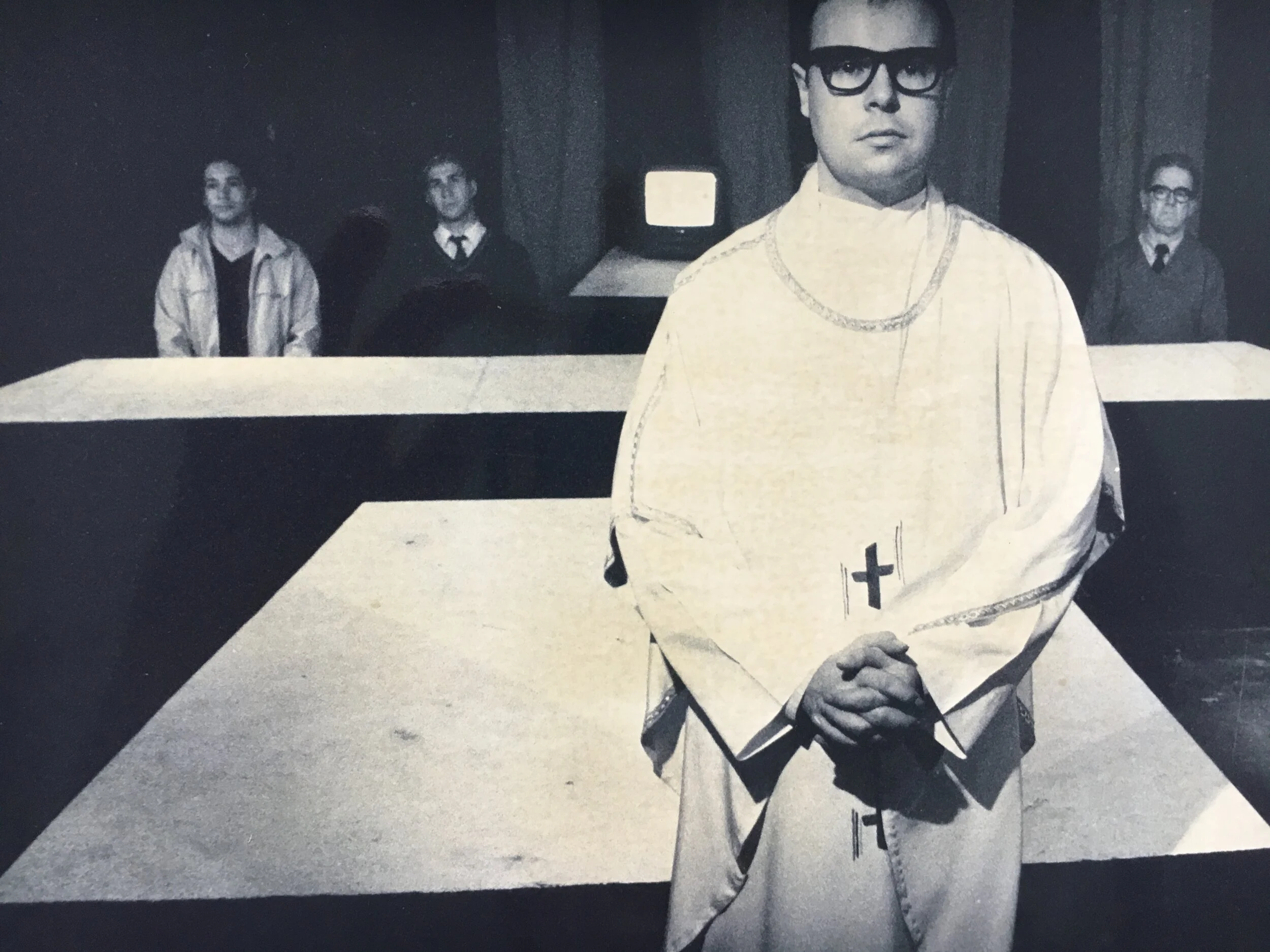
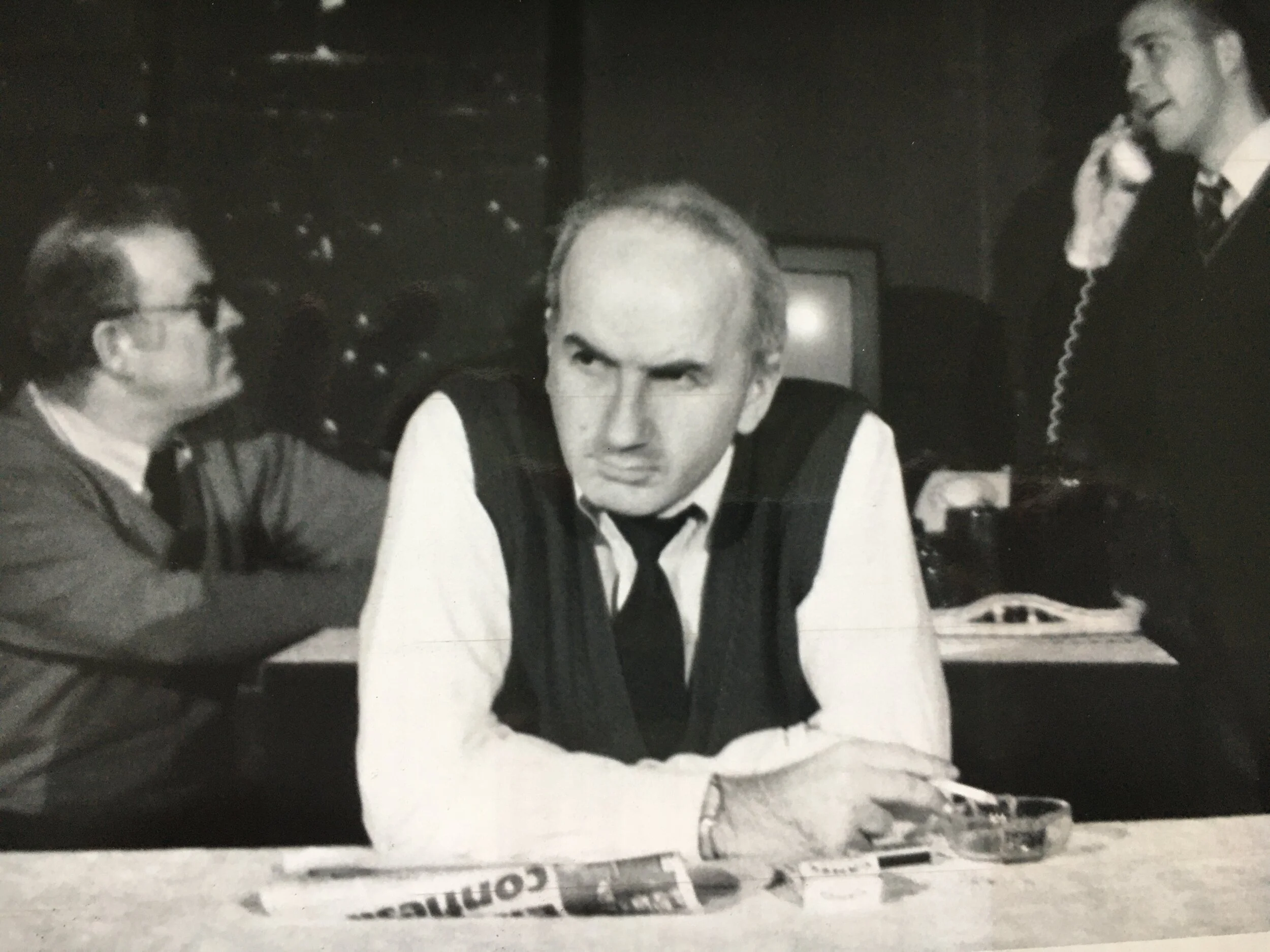
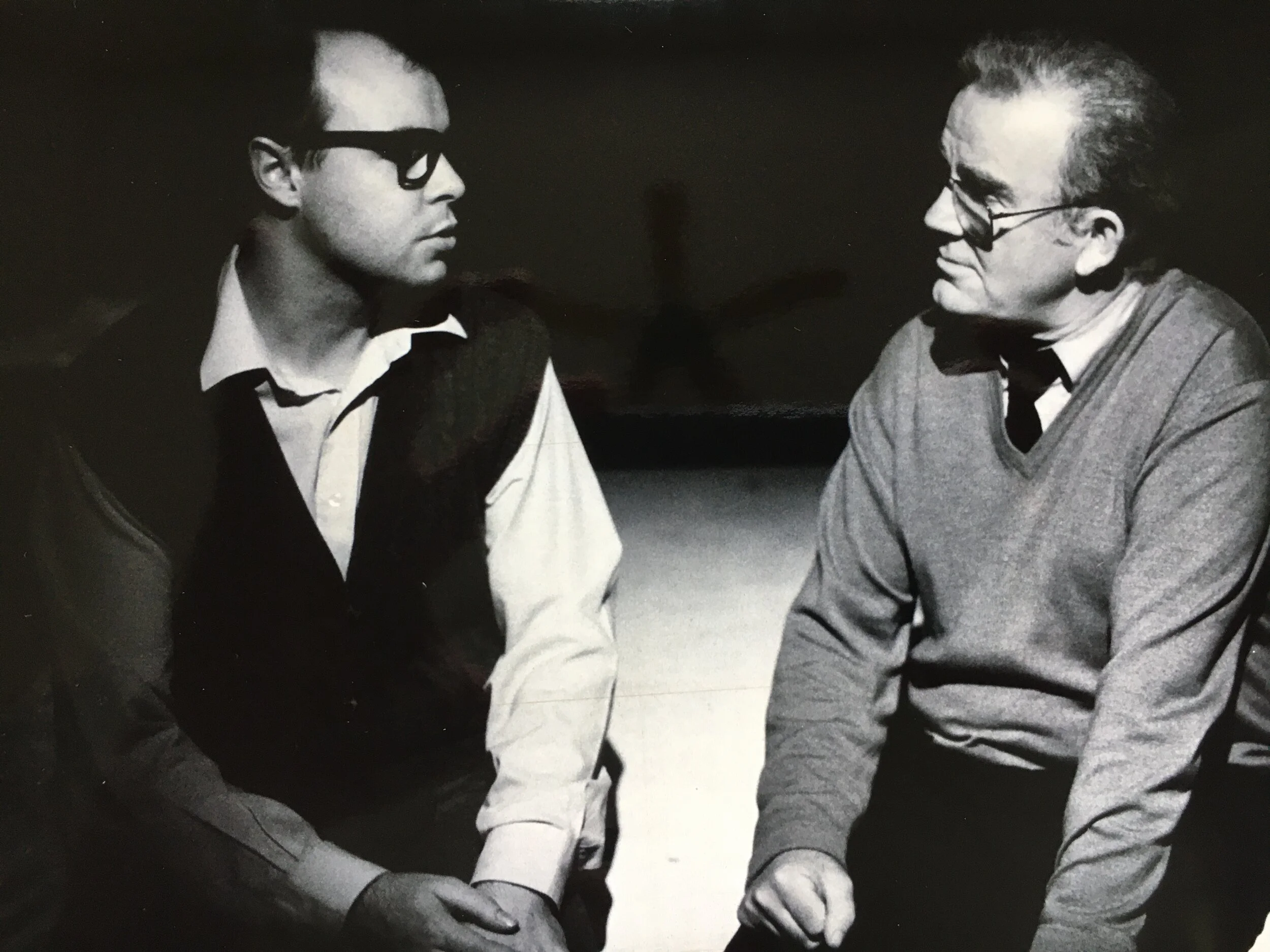
Susana went ahead and secured the theater. The Onion Shed had been an actual onion shed that had been transformed into a black box theatre with changing rooms, a bar and a technical suite. She chose Dani Heres, a capable director based in The Nethelands and started rehearsals with a group of professional actors, most of whom were in-between plays. The actors had sharp skills honed by their tough British training. The youngest was Daniela Lavender, a sweet nineteen year-old from Brazil who had two small roles. Fast forward many years ahead: she’s the current wife of Sir Ben Kingsley. It was amusing to hear the actors tell me, “Don’t worry if we don’t talk much with you. You intimidate us. We usually act on plays by dead authors.”
I maximized my time in London by focusing on promoting the opening. Susana had commissioned excellent black and white photos, which I distributed in-person to the major newspapers, radios and the BBC. During my time in England and my weekly pilgrimage to the London theaters, I purchased “Time Out London” to select the plays I would see while riding the underground. I dreamed of having my play featured in it. Every week, there were approximately 350 plays per week featured and the top 12 selected by the editors had reviews with a photo. My dream came true: I got a top review and a photo, which helped fill the theatre for the 3-week run. The Evening Standard newspaper and a radio station interviewed us and contributed to our success.
It was heartwarming and rewarding to see dear friends who made a special trip to attend the functions. Susana Figueredo’s and the cast commitment made a huge contribution to honoring the five martyr’s memory and their mission. The British media and public seemed to know more about the military dictatorships in Argentina and the Dirty War than the Americans.
As in Buenos Aires, the London production was a cooperative and the revenue rewarded their courage and commitment. I’m proud to say that both productions of my play were profitable, considering they had a cast of 10 actors and a similar number of collaborators backstage.
The TV Documentary Film Production and Debut
In 1998, I collaborated in the production of a TV documentary, "The Honor of God" with director Gabriel Seisdedos, based on his gutsy investigation of the massacre. Gabriel took on the monumental task of interviewing the fiver martyrs’ families, friends, colleagues and collaborators, as well as politicians, Nobel Peace Laureate Perez Esquivel.
In a remarkable and gutsy journalistic move, Gabriel obtained filmed testimony from Adolfo Scilingo, a former navy captain during the military dictatorships. He had gained international notoriety for voluntary confessing to a newspaper writer and Judge Baltazar Garzon that he had witnessed and participated in the so-called vuelos de la muerte (death flights). The navy was throwing prisoners alive but sedated from military airplanes into the open sea. He told Gabriel on-camera that his navy superiors ordered him to repaint the two cars used in the massacre at St. Patrick’s on July 4, 1976, in which he saw blood smears in the interior, therefore confirming the involvement of the navy and a death squad in the crime.
As Gabriel was getting death threats by phone, I decided to strike a deal with the University of South Florida in Tampa, which has a PBS TV Station. They graciously agreed to help us edit and post-produce the documentary and offered their projection room for its international debut for a nominal fee. Gabriel and Father Thomas O’Donnell flew to Tampa and spent two weeks with me to finalize the project and launch the film.
After an initial showing in Tampa, we took it to New York, where we told the story of the massacre at the Human Rights Watch International Film Festival at Lincoln Center, followed by its presentation at the Latin American Workshop near Columbia University. The TV broadcast was in Boston and Buenos Aires stations, as well as a public showing at St. Patrick’s church.
In 2002, Bruna Genovese wrote his thesis for Vassar College in New York on the massacre at St. Patrick’s church and the aesthetic of martyrdom, analyzing the reasons and motivation that drove me to write and produce a play to honor the memory of the five martyrs. Bruna had spent a year in Buenos Aires as a student and heard about the massacre. . When she visited St. Patrick’s, they referred her to me. A few months later, she called me to tell me about her interest in writing about the reconfiguration of a tragic event through artwork. Bruna took her commitment further and invited me to present at Vassar College in New York to the students and faculty, showing a segment of the documentary. It was my first talk to an American audience in an academic setting, a deep and fulfilling experience managed by a student with a deep sense of the world. It was after September 11, 2001, so some of the students were interested in understanding the mindset behind massacres inspired by extreme religious beliefs and against freedom of speech.
Other presentations of the documentary have taken place at the University of North Carolina Charlotte, invited by professors Erika Edwards and Susana Cisneros.
The documentary is available on YouTube under “The Honor of God.” [Click to view]
A Second Shot at an Internet Start-up
My next entrepreneurial adventure was also in Tampa in 1998 with a start-up that was creating a digital TV News service inside the Tampa Convention Center, housed on a single Macintosh computer and a large server. The innovation was the compression of all news into a single window, taking a national news feed from a free channel and adding the Convention Center calendar of events and locations as a scrolling panel. Ads appeared as rotating banners.
I wanted to invest my newly acquired knowledge on the Internet and make something out of it. The team leader was a gung-ho entrepreneur with great sales and marketing savvy and included tech experts good enough to be dangerous. We had free office space at the Convention Center and promising contacts. I worked full-time for a while, but once again, there was no money for marketing and no salary. We were selling Web design on the side to get some revenue.
Dr. Susan Duggan was intrigued by our approach and invited us to present in Silicon Valley. Once again, I met Michael Redinger and he gave me valuable advice on how to position our digital service, but he foresaw some critical obstacles. He mentioned that the private prisons market could save us, since inmates could benefit from the internal digital service for education, news updates and other services. My associates had bigger dreams. We had a crucial meeting with a well-funded investor in media who did not see any future in digital television: “Why would I invest in developing something that will take ten years when I can show reruns of Oprah and make a fortune?” We were far ahead of the curve and the convention centers were a difficult market to persuade.
Karen and I got married in Tiffin, Ohio, in November 1998, at a British manor house, near her hometown of Findlay. Her family, my brother Robbie and his family and some of our close friends (Adrian Rattenbury and his family flew in from England) joined us. Because my parents could not attend, I arranged a blessing of the rings ceremony at St. Patrick’s church in Buenos Aires two weeks later. It was Karen’s first trip to Argentina and we enjoyed discovering Buenos Aires and its surrounding together. Karen learns the culture of a city by its food, so we had a vast gastronomic tour that went on for days, sampling the most typical meals and allowing my relatives to host us for elaborate dinners and conversation. Our visit coincided with my father’s legal victory against the Argentine state for the recovery of his retirement savings, denied by government decree for seventeen years. We celebrated in true Argentine style at the best steakhouse, with the best wine and champagne. I was relieved to know that my parents could enjoy their remaining years with the financial support they earned and deserved.
I became an American Citizen in June 1999. Coincidentally, the swearing ceremony took place at the Tampa Convention Center. Feeling legally secure, we decided to build a house near Saddlebrook Resort, where she was working in the sales department. We liked the design, the location and the proximity to our friends at the resort, where we could play tennis. We were just a hop away from Tampa if we wanted to go for dinner and an arthouse film at our beloved Tampa Theatre, a lavish relic from 1926 where they still played the Mighty Wurlitzer organ before each function. We also supported Stageworks, my theater company, and the plays they produced at The Falk Theatre. My parents gifted us money for the down payment on the house and we managed to get a decent mortgage thanks to Karen’s position. My salary remained at almost zero and the venture was not growing, so the future was a proverbial question mark.
The Houston Adventure - a Lesson in High Tech Delusion
Out of the blue came Michael Redinger’s call, offering me a position as VP of Marketing with another Internet start-up in Houston, TX. He was consulting them on how to go public. The company was funded by two Taiwanese entrepreneurs and their wives, all with advanced degrees. They had created a small Internet-connected box that allowed companies to fax for free internationally, providing substantial savings in international rates at the time. I went to Houston for an interview and decided to ignore all the red flags in exchange for a much-needed salary. The people at the company were not warm and I did not like the weather, the traffic or the city itself, where there’s an ominous predominance of dark brown everywhere.
Karen came with me for a second visit to meet the owners and check out the city and rental apartments. We were not impressed by anything we saw, but they offered me a good salary and some incentives. Michael Redinger had sung high praises. I could pay down debt and perhaps grow in a new field. Karen painfully agreed to give up our new house and move to Houston with the help of Eric, a kind neighbor and a retired sheriff from Connecticut who had been born in Germany. We could not have driven across the country in a truck and two cars without his cheerful help, his mastery of radio communications and his ability to talk to anybody to get things done.
The Internet fax start-up was a divided house. At the top, were the two Taiwanese owners, who unbeknownst to me disliked each other profoundly, supported by an American engineer in operations, a Chinese American business developer and a couple of interns. I took over the marketing, again with zero budget. I had to hire qualified executives to build an advertising and sales team. It wasn’t easy, as the salaries I could offer were not competitive. At the time, Enron was growing like wildfire and it was the talk of the town.
The technical department included an American engineer, a Chinese American with an MBA and 24 Chinese technicians, most of them students with little command of English, managed by a Chinese engineer. This man operated as a Communist capo: if I needed any information from the techs, I had to go through him. He was brilliant, but rumor was he was buying time to go back to China. He would berate the employees for small mistakes and would butt heads with the American in operations, a Gulf War veteran with an intelligence background, who told me he spied on the company servers’ traffic and made the Chinese capo paranoid.
With a meager budget, I put together basic marketing materials, enough to have a presence at three big shows, Comdex and CES in Las Vegas and CeBIT in Hannover, where the owners had struck a deal with a Taiwan tech company to share exhibition stand space. The shows were exhausting, but I polished my presentation and sales skills on the fly and deepened my relationship with some of my Taiwanese colleagues, especially during Asian dinners. With the top executives and prospects, I observed the Asian protocol, most of the time waiting until they asked me a question in English.
The rift between the owners hit the fan in 1999 and they split. There were accusations of fraud. I dealt with the remaining owner, who was the toughest and least sympathetic. His goal was to raise an IPO no matter what. He asked me to become interim CEO of the company, as he had the firm belief that Wall Street would not invest in a start-up with an Asian CEO and perhaps they would be attracted to my mixed, international background. Unaware of the risks, I agreed. We were just getting started; I had to see if we still had any chance to survive.
More obstacles continued to appear in the technology and marketing areas. The hardware and software were faulty; the programming took forever so the clients would not have the patience to do it. The business model the owners had chosen required for international faxes to include advertising, something that many companies would refuse. In addition, there were signs that the Internet bubble was about to collapse. According to one of the board members, Alan Hald (the prestigious co-founder of Microage in Arizona), we had to fix everything or there would be no chance to survive. Later down the road, after I left the company, I would have much to learn from Alan’s wisdom.
Michael Redinger died unexpectedly of a heart attack. We had spent time together at CES in Las Vegas and he did not feel well. Still, he joked about it. He was younger than he looked and I later learned he was living with several health handicaps at once. Strangely, when we hugged goodbye I felt it would be a longer farewell, and I was right. The company owner and I flew to the funeral in Park City, Utah in the middle of winter. Michael had been a Marine, so three Marines saluted him with firearms at his burial. I broke up while greeting his wife and children, from whom he was separated. During our times together, I enjoyed his company and learned much about business, always through laughter and his biting sarcasm.
The owner took a drastic decision that surprised everyone. He hired a CEO and a CFO, two mature, Anglo white men, to turn around the ship. I smelled blood in the water. The CEO had a Harvard degree, came from Washington State, had no experience in the IT industry and was a recovering alcoholic; the kind that had crashed the luxury sports car through his family home’s iron gate, by his own colorful admission. His family had run a shirt making business and he loved to tell meandering stories that baffled the Asian engineering staff. He was condescending to me from his arrival and it was obvious that I did not fit his plans.
The CFO waltzed into the company with a stadium-size crucifix hanging down his neck on top of his shirt (it must have been no less than 7 inches long). He had degrees from Stanford and a Northeastern university. He made a point to let us know he knew a lot about contracts. He had the attitude and demeanor of a bully and was patently impersonal to all. His bossy attitude was farcical and his conversations centered on his degrees, rather than the issues at the company. I learned that the CEO and he were staunch Catholics, both belonging to some national religious network. Whatever message they intended to drive, it was definitely wrong for the Asian environment. I felt immersed in an absurdist play with Kafka undertones, rooted on white privilege and a touch of deviousness.
I carefully observed the incoming pair during the first few days. They did nothing but set up their laptops and their cables. After a rambling meeting on a Monday morning that included a lesson on how to tailor a man’s shirt, they started firing people. They fired me and kept the low-salary marketing employees. I was angry, but I had no recourse. It was the first and only time I’ve been fired, anywhere, but it would be both a lesson and a blessing. They kept on board a former Air Force officer I had recruited, with whom I had a good relationship. He had the white male seniority and country club demeanor that matched theirs.
Two months or so later, my friend invited us for dinner with his wife. After the pleasantries, he said, “You have no idea what you’ve just escaped.” The CEO and CFO had hired a friend to take my position as VP of Marketing, who got drunk and had a massive car crash that put him in the hospital indefinitely. Then the owner found out this dynamic duo had tried to steal the company’s patents by registering them in their name. They were caught (apparently the American spy found out) and there was a trial, during which it was revealed that they had done this before. They were C-level con men for hire, bent on swindling their employers. So much for the Catholic farce.
The owner and top executives had to give depositions and attend the trial. It was unpleasant and unnerving for all. The judge did not send them to jail but warned them that the previous week he had sent other people to jail for a similar crime, and that a technicality had spared them. To make matters worse, the American engineer who had supposedly had been uncovered as a fraud. The machines’ hardware was flawed and it was not going to work as expected, crippling the owner’s aspirations for an IPO. My friend and the other executives were all out of a job.
Karen and I moved on, planning our escape from Houston. We thought we might miss our great Italian and Lebanese restaurants, but not the climate, the aggressive traffic and the limited intellectual stimulation. My former roommate at Van der Meer’s in Hilton Head Island, Marc Blouin, suggested we consider Charlotte. He knew its lifestyle and new construction would impress me.
After my friend Gustavo Raitzin invited me to start working with him at ABN AMRO Private Banking in Miami and Switzerland, we could travel to Charlotte to find a nice apartment and move. We chose the area because of its beauty, calmer rhythm and easy access to the airport. Once again, our sheriff friend came to our rescue and this return trip to Charlotte was joyful. We celebrated being back in the East Coast in April, when everything was blooming and the prospect of working in Switzerland with my best friend was exhilarating.
INSPIRE - STAGE 3 - SWITZERLAND (1999 - 2017)
A Tennis Pro in the Boardroom
In the summer of 2000, Gustavo Raitzin wanted me to organize the first event in which all regions of the Swiss organization would be together for the first time at the Victoria Jungfrau Hotel in Interlaken.
I started traveling to Zurich regularly and oversaw the meeting's organization, in which I had a keynote speaker's role. It would be in November and I had several months to coordinate the logistics with a small internal support staff. The Victoria Jungfrau was a wonderful setting, a contrast between traditional and modern architecture surrounded by the Bernese Oberland.
Gustavo put me in charge of the schedule and the coordination of the audiovisual requirements. As there would be approximately 300 people invited, we had to tighten the budgets in some areas. He had a definite content perspective in mind: he wanted to introduce everyone in the company to my approach to Peak Performance Training. We would weave the topic through three days and put it in action through high engagement games. We shortened the lectures using the TED Conferences time format, and I coached the speakers on how to master it.
The Interlaken 2000 event was a resounding success for all and provided me with many opportunities to collaborate with Gustavo's strategic objectives, as well as meeting excellent professionals. What the employees reported was that they had never felt such peak of emotion at a company gathering. They kept talking about the boost they had received for several weeks. Gustavo’s brilliance was to keep repeating the core concepts and the key themes, connecting them with each region’s reality - and instructing his direct reports in each Swiss region to do the same.
After that, Gustavo asked me to prepare follow-up off-site meetings, which took place in Switzerland, Monaco, Luxembourg and The Netherlands. In-between events, I participated in training sessions for private bankers (to better understand their world) and organized courses on Peak Performance for their leadership development program. Other contributions included organizing global meeting for the Young Bankers Association and joining the team that created the first Internet Portal for bank clients - a process that took two years and where I enjoyed collaborating with Hans Peter Borgh and Paul Jessup in the core team.
Invited by Didier Duret, the bank’s Chief Investment Officer, I helped developed an award-winning tool to sell Discretionary Portfolio Management services (DPM) to clients in an automated way. To design the client interface, I worked with a boutique design agency in London and configured a three-step visual approach based on Adobe Flash that would allow the banker to complete the process with the client in 15 minutes.
My time at ABN AMRO Private Banking collaborating with Gustavo was productive and rewarding. Karen and I could buy a home in Charlotte in 2003, where we still live. Between trips to Switzerland, I enjoyed the camaraderie offered by tennis friends. From one contact introduced by Marc Blouin, I was able to meet many accomplished tennis players at Olde Providence Racquet Club. Bob Alexander, an IT consultant, embraced the Peak Performance Training concepts personally and for the club, inviting me to offer clinics for the members. Afterwards, I played often as a guest and met new friends. Bob introduced me to a local professional network and my circle grew.
Between 2001 and 2007, I collaborated with other consultants in presentations to other top banks and organizations in Switzerland. The September 11 crisis hit the financial industry hard, but fortunately, I was involved in long-term projects that kept me afloat. In 2003, I started a productive and gratifying collaboration with Philipp Johner, CEO of Manres AG, a consultancy focused on leadership transformation for CEOs, creating the curricula for off-site events with their top clients.
No matter what project, I was always acutely aware that I did not know the subject matter, so I focused on enhancing the quality of the thinking and sometimes suggesting an innovative approach. I was given an opportunity at looking at what is and explore alternatives to what can be, to later design what could be and plan what shall be. I could analyze what is and explore what can be, to later design what could be and plan what shall be. It’s a privilege I’ve enjoyed: being the catalyst, the positive disruptor, the creative impulse, the one with the off-center question that intentionally can shift thinking in a productive direction.
At ABN AMRO Private Banking, I participated in the organization of epic off-site meetings at Luxembourg, at Duin & Kruidberg and Amsterdam, again in Interlaken and in Venice. In each one of them, Gustavo and I envisioned a blend of creative dialogue, strategic direction, peak performance concepts for teams and games. The spirit of play to generate trust has been a recurrent theme in our work together, as well as the use of video, images and music. I closed every off-site with a collective presentation (a talent show) or a music video I had edited overnight to end up in a high emotional note (I made private bankers cry…).
The ABN AMRO stage of my career allowed me to evolve in my understanding of how individual executives and teams absorb the concepts of Peak Performance Training, creativity, innovation and inspiring others through achieving results. It also introduced me to the concept of “Swissness,” the unique way that Switzerland markets itself (Switzerland is a product) and made me an admirer of their direct democracy system. The Swiss Confederation is worth studying in-depth, for its the result of centuries of exploration of how to live and be better together despite differences of culture, religion, race, geography, languages and economy. What transpires is a sense of well-trained responsibility. I hold dear the Swiss hospitality, the quality of the majority of products and services, their fantastic restaurants and their awareness of the natural beauty of their country - all of which translates into a quiet pride, fierce autonomy and a balance between thoughtful conservatism and visionary progress.
Above all, my greatest satisfaction was to support Gustavo’s leadership and help him grow. My measurement has been the appreciation I saw and felt from his direct reports and from the other employees in the company, who talked about him with authentic warm praise and gratitude. They felt seen, heard, appreciated and they told me they had grown working with him. That’s how I know that we were on-track and that his divisions would get the results they sought.
The Bank Julius Baer Years (2005 - 2017)
Gustavo Raitzin joined Bank Julius Baer in 2005 and soon became a member of the Executive Board. Together, we implemented a series of off-site meetings to consolidate his team. I spent weeks at a time in Zurich developing the schedules and perfecting the logistics. The Swiss bank culture was slightly different from the Dutch and equally enjoyable: I had more independence to carry on projects and could implement solutions faster working directly with Gustavo and his assistant.
The years before the 2008/2009 financial crisis involved strategic meetings with top private bankers who operated from Zurich and Geneva. The bank had a new CEO who had marked a strategic direction for ambitious growth. I organized meetings in Interlaken and Vevey for two different management regions of the bank. Teambuilding featured prominently in the agenda and I used creative dialogue techniques to enhance their level of trust, as well as physical metaphors and games in which they could explore new ideas, designs and alternative approaches to improve their winning strategies.
What makes my work interesting with Swiss private bankers is their professionalism, their multiple cultural interests and hobbies, their understanding of the world and their eagerness to improve to better serve their wealthy, complex and extremely demanding clients. Conversations become rich quite early, as they can pull from multiple sources and references in their lives to illustrate a concept.
One dinner conversation in particular stayed with me. I had already given my presentation on Peak Performance and evolving from achievement to significance and legacy goals. A Swiss private banker told me: “As you spoke today, I was thinking about my son’s career choice. He wants to be an “horloger,” a watchmaker, to work with his hands. It’s an art form, and I realized that I spend all day looking at dots on a screen go up and down, and assuaging clients’ anxieties. My son will see the result of his craft and it will be both beautiful and tangible. The fruits of my work can evaporate in an hour, or a day.” I could see he was scratching the edges of meaning in his life. “It must feel good to know that your clients trust you,” I said. I mentioned a magazine article featuring three prominent Latin American entrepreneurs who could not possibly have kept their companies open without Swiss private banking support, due to excessive local taxation, corruption and political upheaval. They used the services to make payroll, keep people employed, continue exporting high quality products (wine, in one case) and protect the families depending on them. “That’s right,” he agreed, “perhaps what I do with the dots on my screen can have the reassuring effect of a well-made Swiss watch.”
As I contributed to Bank Julius Baer, I facilitated workshops at HSBC Private Banking Switzerland and Heritage Bank. Over time, I worked with the top three banks in Switzerland (UBS, Credit Suisse and Julius Baer), developing an understanding of their culture, strengths and differences (and I found them to be truly different cultures, a factor of leadership styles as well).
After the tragic passing of CEO Alex Widmer and during the global financial crisis in 2009, I was invited back by Gustavo to participate in Julius Baer’s Advisory Excellence process. My role was to conduct a long list of interviews with the top stakeholders in the process and provide a categorized summary that could yield internal recommendations. The new CEO, Boris Collardi, would be analyzing the results with the Executive Board.
The bank wanted to compete and increase its revenue by be recognized as the Most Trusted Wealth Advisor in the Private Banking world. The push included a commitment to having the best Relationship Managers in the industry and to providing a Unique Client Experience consistently, in a creative and emotional way. As the Chairman of the Board, Raymond Baer, told me: “We will be recognized for our performance culture, serving clients’ needs with clarity in terms of efficient transactions and seamless execution.” He wanted the bank to provide advice defined as “investment wisdom,” focusing on the client’s needs, attitudes and behaviors, a profound differentiation from its bigger competitors.
Between 2009 and 2013, I gave keynote presentations and conducted workshops with prestigious organizations, including the Bank Julius Baer Leadership Academy, the U.S. Air Force Academy, the Swiss Army Military Academy at ETH, KPIT Infosystems, The British Embassy Consulate in Barcelona, Istituto Adriano Olivetti, Confindustria Marche, The Bologna Chamber of Commerce, Bausch & Lomb, KUONI, Aberdeen Asset Management and many others.
I started TheSircle Executive Club in Charlotte in 2009, organizing dinners for Business Executives at a restaurant and later at The Ritz Carlton Hotel. The International Sircles took place in Ancona, Italy in 2012 and in Zurich in 2013.
filippo baldi
In June 2012, Massimo Bucciero introduced me to Italian tennis player Filippo Baldi to train his mental toughness skills during the ITF competitive calendar. We met in Torino for two days when he was #210 in the ITF World Ranking. We met a few months later at a tournament in Vicenza, trained at his hometown of Vigevano, near Milan and my brother Robbie and I coached him mentally at the 2012 Orange Bowl in Ft. Lauderdale. With Gianluigi Quinzi he won the 2012 Junior Davis Cup defeating the Australian team, the first time ever for an Italian team. He finished the year ranked #11 in the world, turned professional and was a semifinalist at the 2013 Australian Open Boys’s Singles, losing to Nick Kyrgios. He was a quarterfinalist at the 2014 Wimbledon Championships Boys’ Singles. Filippo won his first ATP Challenger title at the 2018 Wolfkkran Open in Ismaning, Germany.
In 2013, Bank Julius Baer purchased the international wealth management division of Merrill Lynch from Bank of America. Gustavo Raitzin called me to assist in the organization and facilitation of the cultural integration process alongside Beat Blaesi, from the bank’s Leadership Academy. It was an arduous and complex process involving off-site meetings in Colonia, Uruguay; Vitznau, Switzerland and Punta del Este, Uruguay between 2013 and 2015. Beat, Tobias Zumsteg and I coordinated the Open Space process for the private bankers to collaborate in teams and produce new perspectives and strategies to design the way forward. The Merrill Lynch and the Julius Baer cultures were patently different (sharks and dolphins) and the objective was to merge the best of both and remain a “pure play” Swiss bank with a sharper competitive advantage. After a gradual adaptation, a core team remained and the bank succeeded in consolidating its upgraded Latin American operations in Uruguay and Panama.
In the U.S., I engaged in a performance improvement process in a new industry with TeamCraft, specialized in commercial roofing, which started in 2015 and extended through 2017, including workshops for managers and an online training course. In 2016, I organized a special event through TheSircle at Queens University for the Elite Swimming Team based in Charlotte, directed by David Marsh and assisted by Kajo Kajevic. TeamCraft supported Kajo and a couple of the Olympic swimmers.
In September of 2017, I was introduced to Pietro Fittipaldi, whom I helped win the World Championship in Formula Renault V8 3.5, starting a relationship that has extended through his experiences with LMP1 racecars, IndyCar and Formula 1 as Reserve Driver for Team Haas. I started coaching his brother Enzo in early 2018, helping him win the Formula 4 Regional Championship and transition into Formula 3 International.
INSPIRE - Stage 3 - My Meditations on Breakthrough
My first years in this stage reveal decisions driven by a desire to move from survival to achievement, where following my bliss meant following the best possible paycheck. I was paid well, more than double than before 1993, but the opportunities I accepted implied a serious upheaval of my life and Karen’s. Moving to England to become a General Manager of a tennis club with solid funding but serious deficiencies stretched my skills and offered a green field for creativity and marketing experimentation. Yet, I did not give myself high marks. Afterwards, every one of the Internet start-ups in Tampa and Houston were crippled from the start. One could say there were worth a shot: the Internet was going to happen and I had to figure out where I could play. Going to Houston was perhaps a mistake, as I decided solely on the opportunity to earn when I had been at zero revenue for a long time. Luckily, it didn’t last long and my friend Gustavo Raitzin called me at the right time.
The two decades in Switzerland supporting Gustavo’s leadership roles were the platform on which I understood how I could inspire within the corporate world. The Swiss private banking culture at both ABN AMRO and Julius Baer were primed to hear my Peak Performance Training message, before and after the 2008 financial crisis, respectively. Both banks invested in sports promotions and most their employees had an active lifestyle. Both also pitched their “performance” to their clients as a competitive advantage using sports metaphors. Gustavo is an inspiring leader and together we designed a system to engage his direct reports and teams through creative dialogue and collaboration. I would get direct feedback from them telling them how they had been inspired and how their daily tasks were improving, including their relationship with clients. When I compared my interactions with other Swiss private banks, there was a marked difference: Gustavo and I had an optimistic, philosophical and appreciative approach to getting things done, while other organizations were looking for recipes, for the flavor of the month. As I worked with other industries, I could refine the inspiration aspects and calibrate how the teams could translate their new understanding into tangible improvements. In the span of 25 years, I learned to Inspire and started to ask myself if I could Ignite by creating a larger platform.
IGNITE - STAGE 4- USA - The Future (2017 - Present)
Gustavo Raitzin retired from Bank Julius Baer in 2017 and joined the Harvard Advanced Leadership Initiative in 2018, a full-year curriculum. I joined him in Boston to coordinate the details of his graduation project, related to promoting innovative water solutions for the Middle East. In March 2019, he traveled to Israel to better understand what’s being done and what could be done better in the future. We are currently organizing the development of a new phase of the project that includes the production of a documentary film featuring worldwide experts, scientists, Nobel Laureates, politicians and stakeholders from the Middle East.
In 2017, I reconnected with Jolyn de Boer, then Executive Director of the Tennis Industry Association, in relation to my connections in Sport Technology development. Together, we launched the Tennis Innovation Challenge, a competition to identify and promote the most promising solutions to increase engagement, participation and performance in tennis. We organized Challenges in Orlando, Wild Dunes, New York City and again in Orlando between 2017 and 2020. After Jolyn left the organization in 2020, we established a collaboration to create alliances with manufacturers and sports tech organizations around the world that have the capacity to create new approaches to increase the number of players worldwide and improve their experience. We are currently collaborating in projects related to the ATP Finals in Torino (2021-2015) and Sport Technology instruction for coaches.
In 2018, I worked in another industry with Hospice Care of South Carolina, the largest provider in the state. They were interested in enhancing their providers’ skills through the Peak Performance Training program, in addition to going through a strategic planning exercise. My time with this company was enlightening, as they demonstrate a profound interest in assisting families during a most difficult time in their lives. It’s a service category sustained by trust, reliability, consistency and interpersonal connection with higher expectations than in types of service. The company was experiencing sustained growth and the concepts I shared with them could enhance their individual performance and the relationship with clients.
In summer of 2018, I met Horst Bente, one of the three founders of leAD Sports Tech based in the Bahamas and Berlin. Horst and his two brothers (Stefan and Klaus) are the grandsons of Adi Dassler, the legendary founder of German sports manufacturer Adidas. After an introductory visit to the Bahamas, I proposed to focus my energy in developing a tennis-specific innovation platform. I increased my understanding of the power and the potential of leAD and the ADvantage Sports Tech Fund after an event in Atlanta (where I participated in a leAD panel) and an international meeting at Primland in Virginia. This year, I’ve been invited to become a Mentor at the leAD Sports Tech & Health Accelerator to be launched in Lake Nona, Orlando in 2021, associated with Tavistock Investments. My role is to assist Sport Tech start-ups in the launch of their ventures.
In July 2019, I met Khaled Al Qubaisi from Abu Dhabi and his daughters Amna and Hamda, both Formula racecar drivers.They wanted to become more confident and competitive through mental toughness training. I started working with Amna in August, and in November she won her first race in Formula 4, the first Arab Emirati woman to do so in history during the Formula One Abu Dhabi Grand Prix weekend. Hamda follow her sister’s success a few weeks later.
In January 2020, I joined 360PowWow Sports with directors Horacio Levin and Daniel Gutman to produce inspirational sports films. The company has bases in Miami, Los Angeles, Buenos Aires and Madrid. We focus on creating content for the Youth Market worldwide with distribution in multiple platforms.
Within the film industry, I’m seeking to produce my screenplay based on the massacre at St. Patrick’s, the topic of my stage play and TV Documentary. This is a project of fundamental importance for me. As author Herman Wouk said about his purpose of teaching new generations about history in his books, “it’s the main task.”
I continue assisting talented athletes in their quest for Breakthrough, achievement and significance in tennis and motorsports. I enjoy guiding them as their thinking partner as they win races and championships, exceeding their expectations and seeking new records. It’s fulfilling when they are grateful and say “I couldn’t have done it without you,” although my role is to whisper what they need to unblock or uncover to reach their full potential.
On the sports coaching side, I believe that technology will continue to transform sports. For that reason, coaches need to understand and manage technology, while the industry needs to make it accessible, easy to use and affordable. Without clear results on the field or on the court, both coaches and manufacturers will lose. I want to contribute to the creation of a platform or network where coaches can learn Sport Tech.
My current goal is to create a platform where more people can benefit from proven approaches, strategies and tools to shift their mindset, design their Breakthrough and align the factors to achieve extraordinary results as they build a legacy. For many years, I’ve operated in niche markets and with those who are fully committed to their success. I’d like to offer support to a larger audience, inspiring more people to see the glass as full-and-a-half to become creators.
IGNITE - Reflections on My Breakthrough Lifeline
rainbow over obersaxen, switzerland (view from philipp Johner’s chalet)
Like a Japanese bonsai tree, I was given a solid base and the best nurturing. I was guided, but not forced to choose. I navigated desires, expectations, obstacles and a long-term threat in the environment. Action is character, so I Imagined and Improved. There were twists, turns and returns but I survived and grew. Nothing is perfect. The balance is barely apparent in the wholeness. I’m told my lifeline Inspires. No two trees are alike; comparisons are useless. Observation alone might Ignite questions inside the observer - and that may be the sole purpose of the exercise until the final shape becomes a memory.
If my life would end today, I would call myself a fulfilled individual. I managed to move away from the situations, mindsets and cultures I disliked and created new opportunities to satisfy my curiosity, independence and constant need for intellectual stimulation.
I’m a privileged man: I can work with friends and choose to work with whom I prefer. I’ve befriended the mentors who captured my desire for understanding and taught me how to become a better thinker. I’ve attracted clients and collaborators with a passion for performance, achievement, beauty, friendship and being significant in the world.
My wife Karen, my family and my close friends love me. They put up with my self-centeredness, obsessions and routines and we laugh often about our lives’ contrasts. We keep our conversations about how to live a good life, how to stand by others and how to improve situations so more people can have a good life as well.
I can declare confidently that “the glass is full and a half” and explain how to align the factors to make it so. The four lenses of Imagine, Improve, Inspire and Ignite are mental operations that anyone can practice. It’s the alignment, the consistency and the resources that make the Vision possible. It’s earning the trust and will of others that accelerates it. I’m optimistic because I could and can do it when it matters, when projects deserve to see the light, to achieve Breakthrough and benefit others.
Since 2017, the projects I’m involved and the proposals landing on my desk have one important common characteristic: they can all scale: when successful, they can reach thousands of people and make a positive impact. They can lead to significant and important Breakthrough opportunities. The other characteristic, which is essential to me, is that I’m in the company of high achievers, values-centered and purposeful individuals whom I like and with whom I would move mountains to leave a powerful legacy to the world.
This book is important to me: it’s my voice - and it’s a start rather than an end. I felt I had something to say and I could not delay saying it any longer. I trust it will inspire and encourage others to create their own path. There’s poetry and passion in doing so. There’s courage in satisfying your deep desire to be creative, to do something your way, to join the ranks of men and women who can do things better than anyone else and learn. I invite you to design your Breakthrough Blueprint and plan the best possible future for you, even if it looks impossible, and maybe because of it.
Now you know more about me. For a few more quirks, check out the Interviews collected on this page.
Key Questions to Interpret Your Lifeline Exercise
What shows up more often in your Lifeline? What are the common threads?
What mindset, ideas, actions and people helped you be at your best? When? Where?
How did you bounce back from low points? What reveals your resilience?
What’s your unstoppable Desire? How does it pull you towards the future?
What commitment can you make today that is a first step towards your Breakthrough?








































